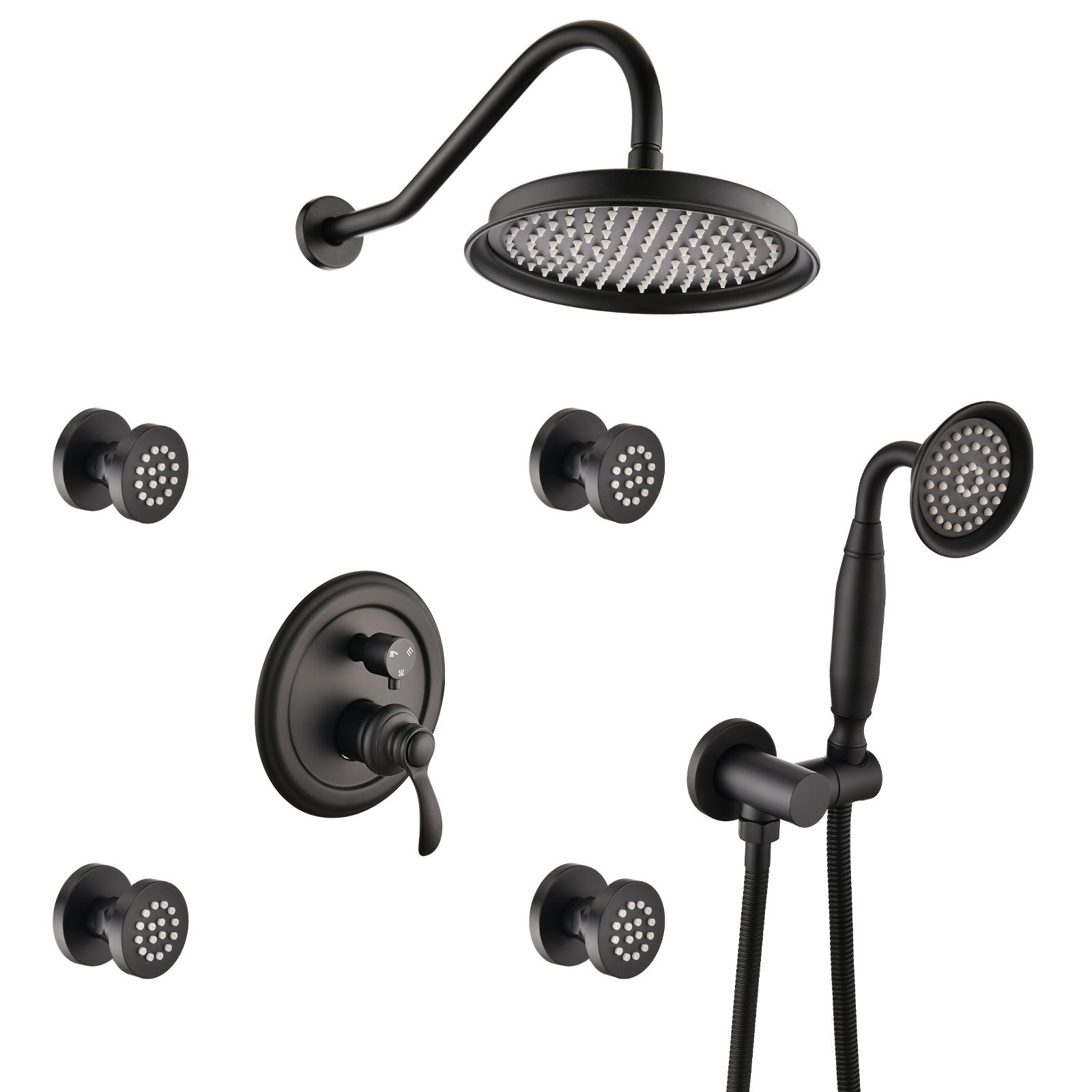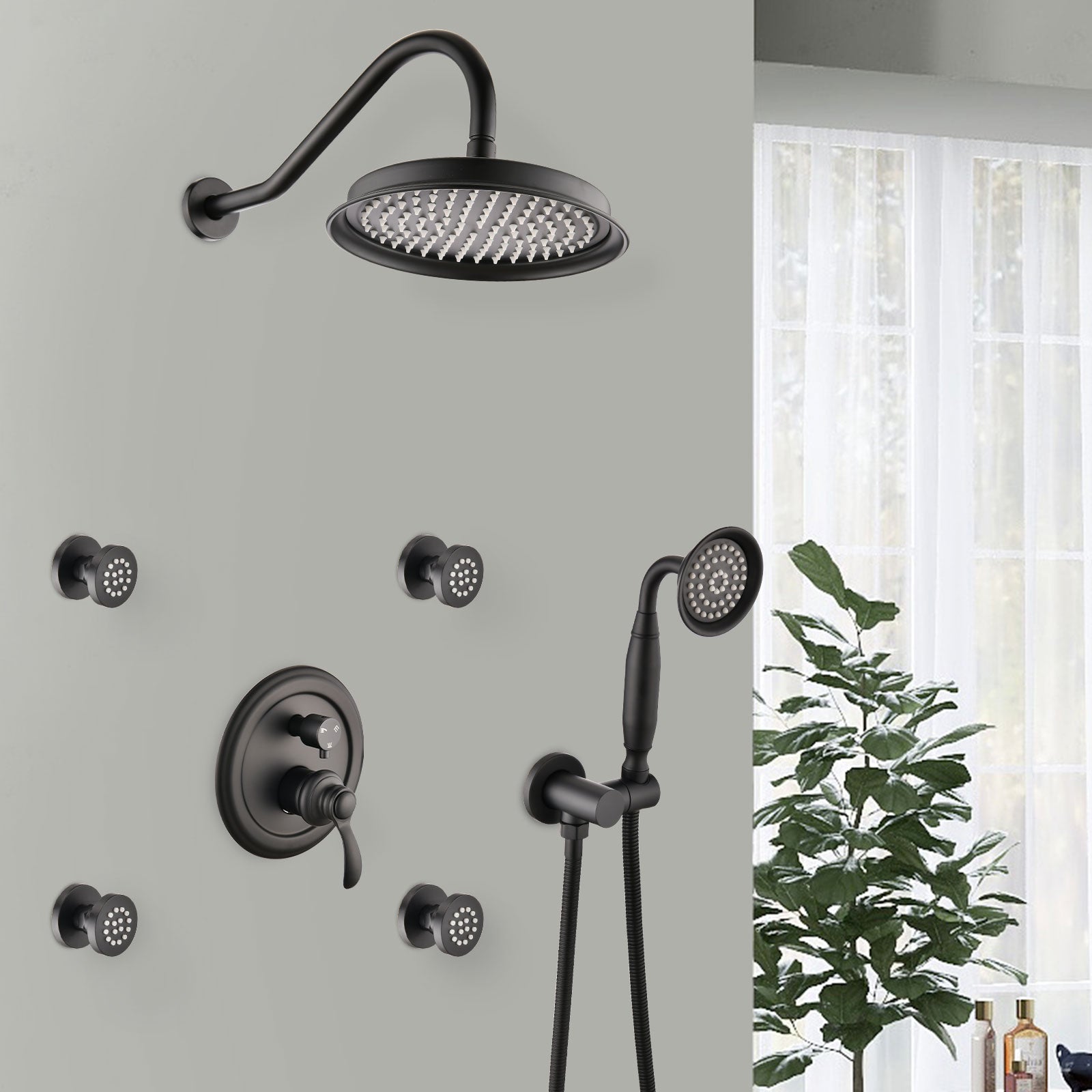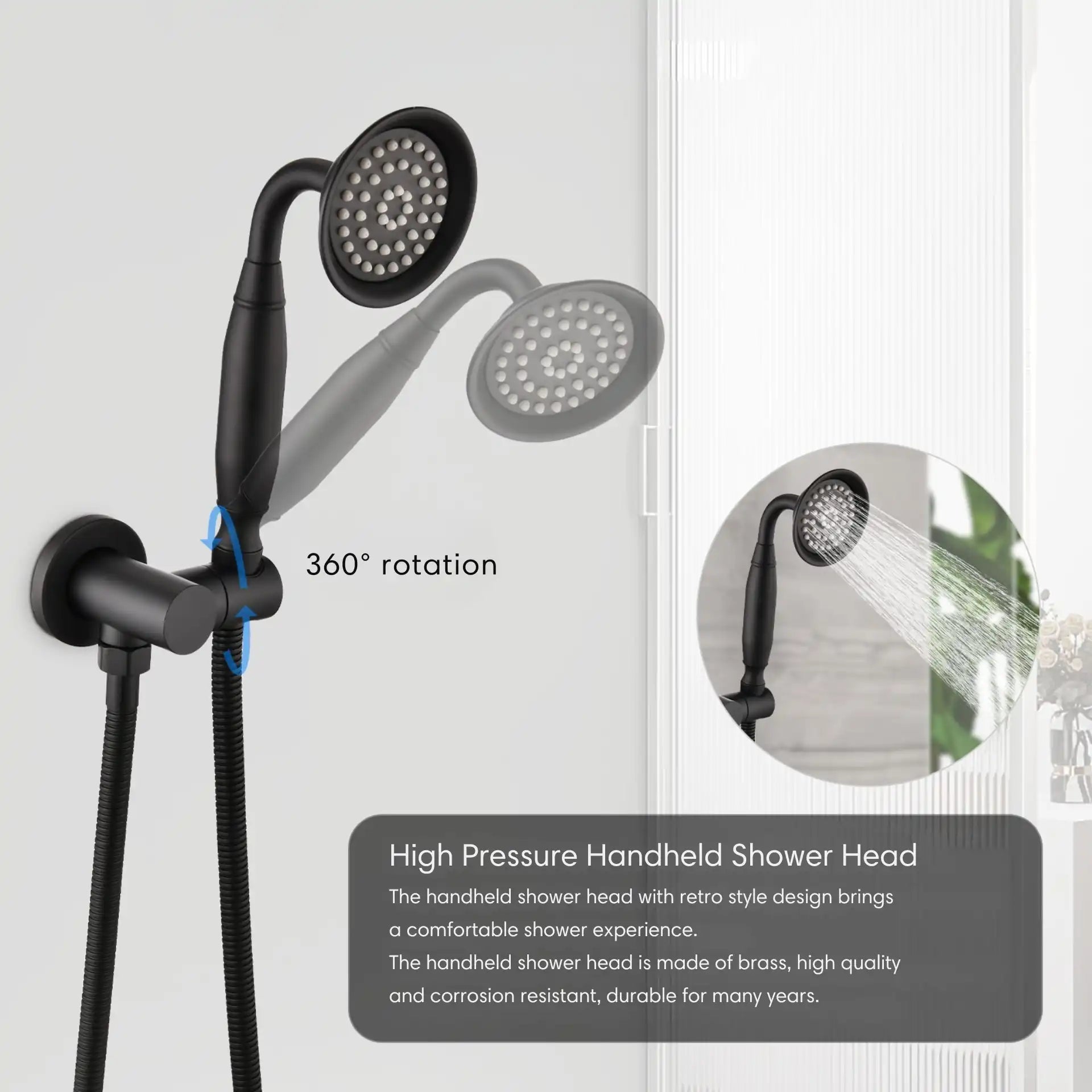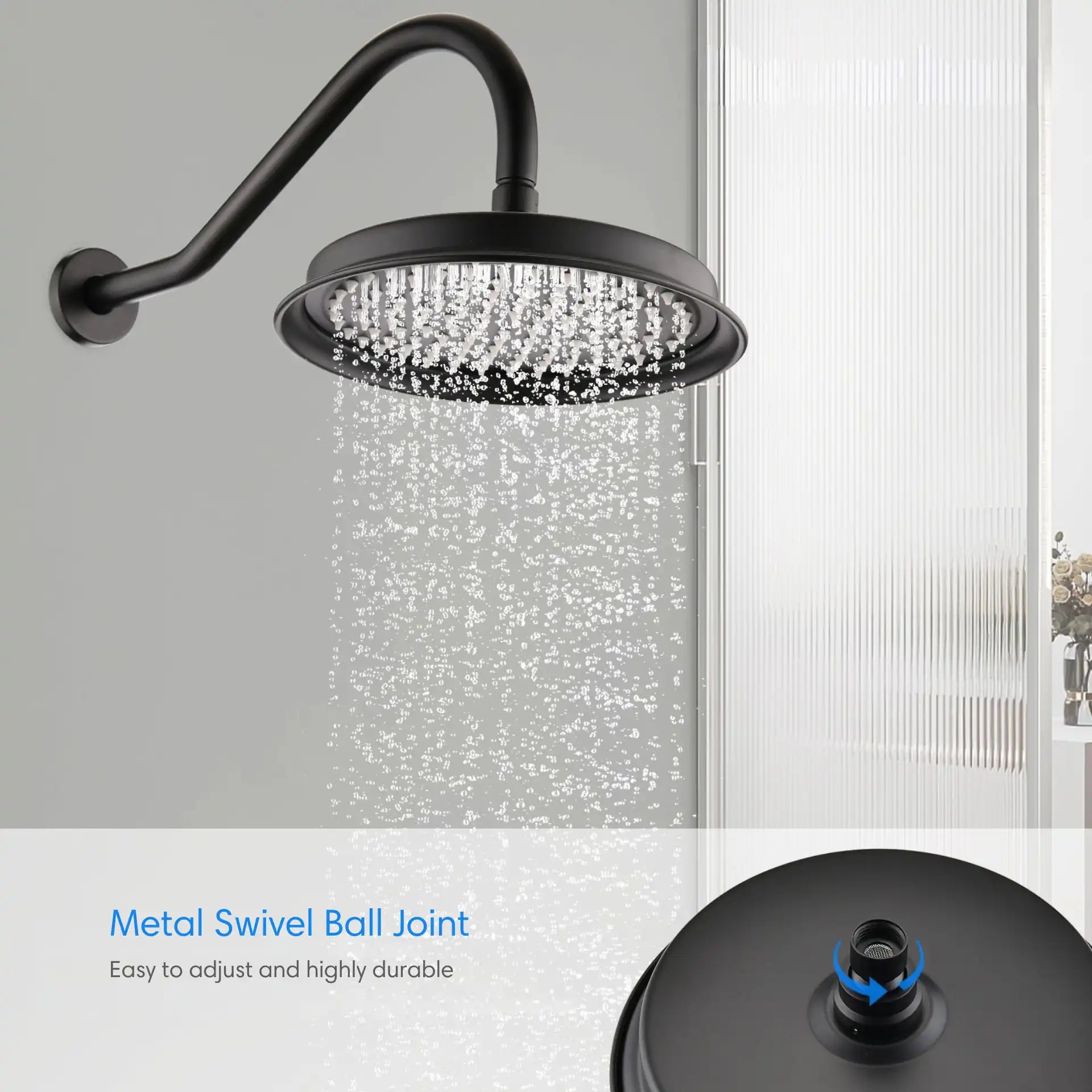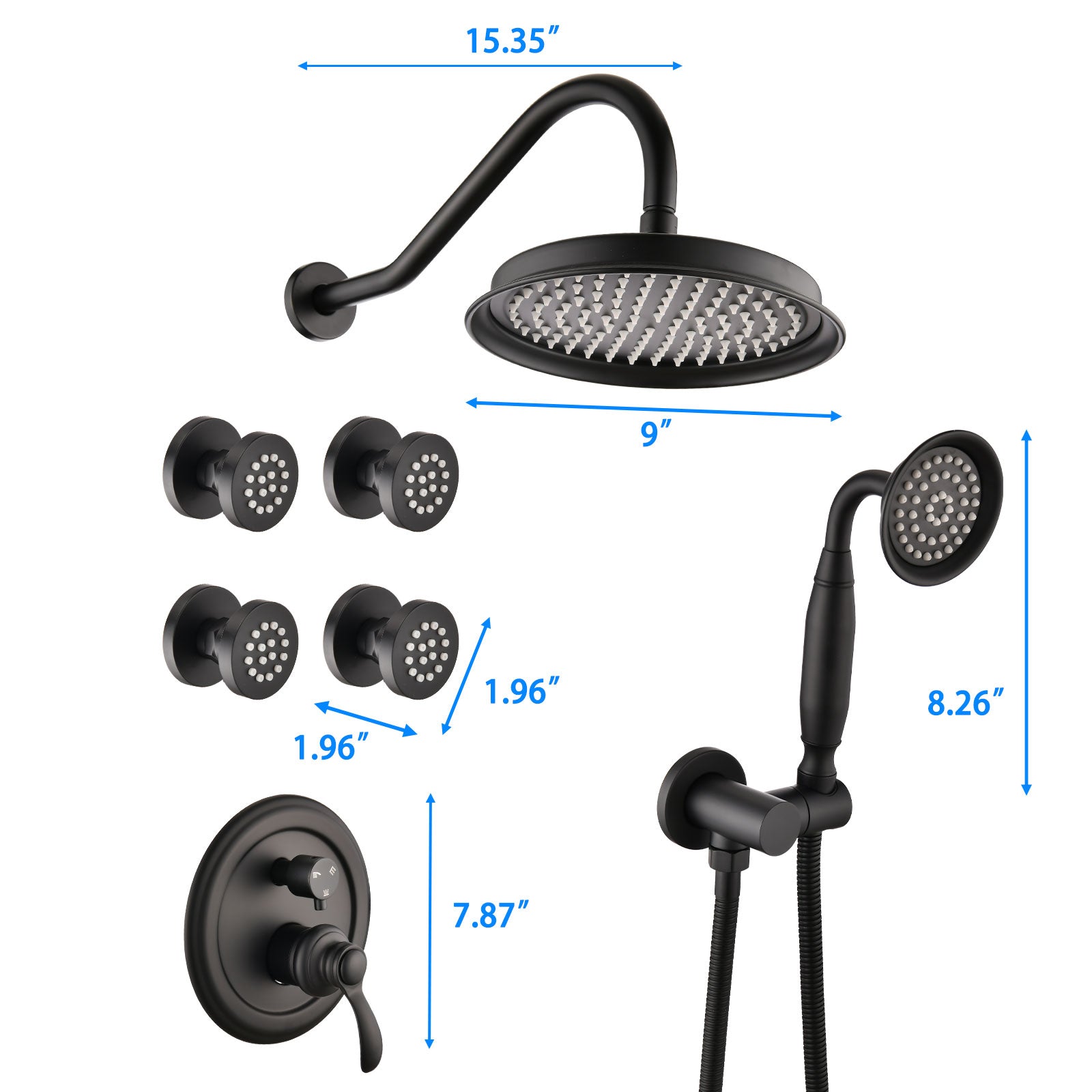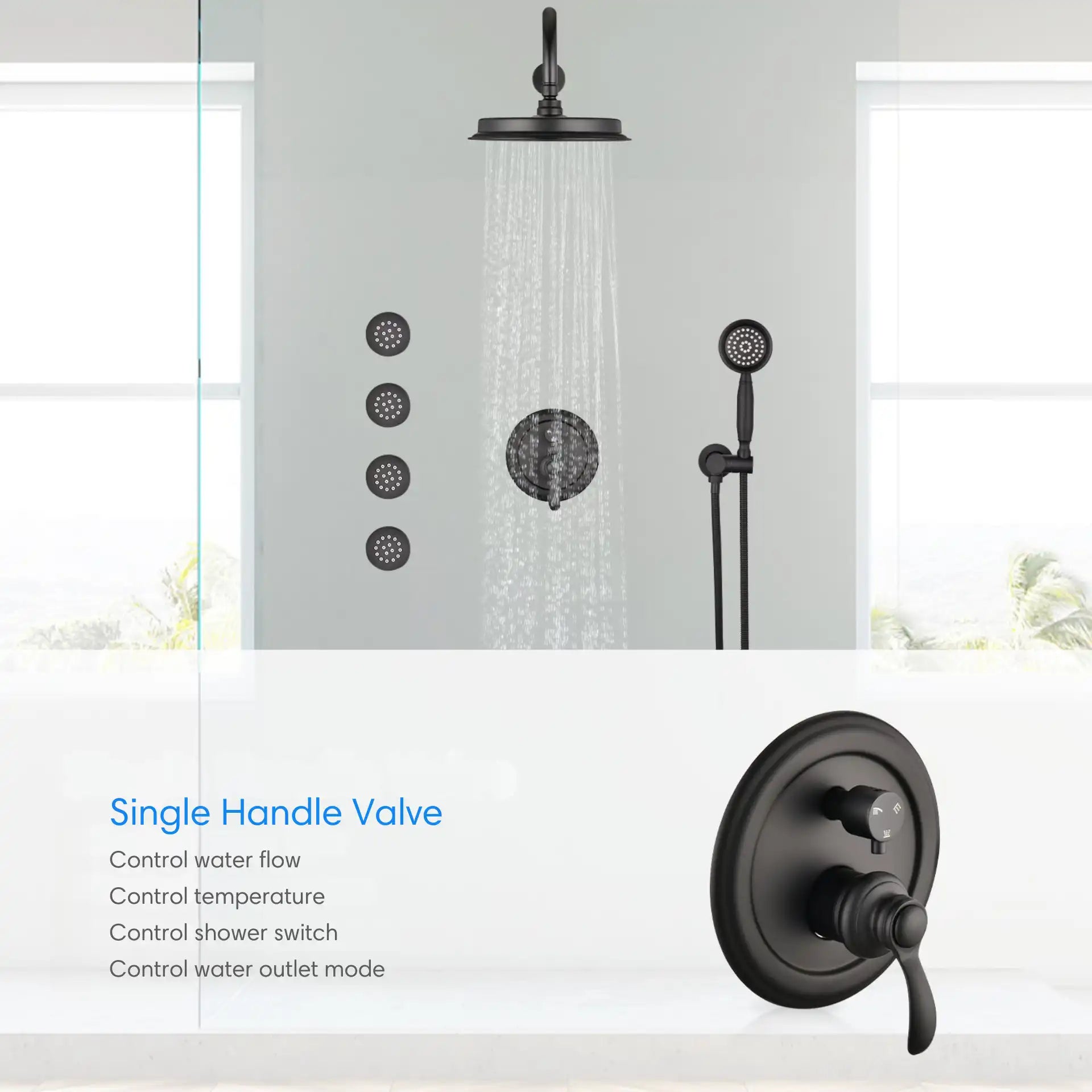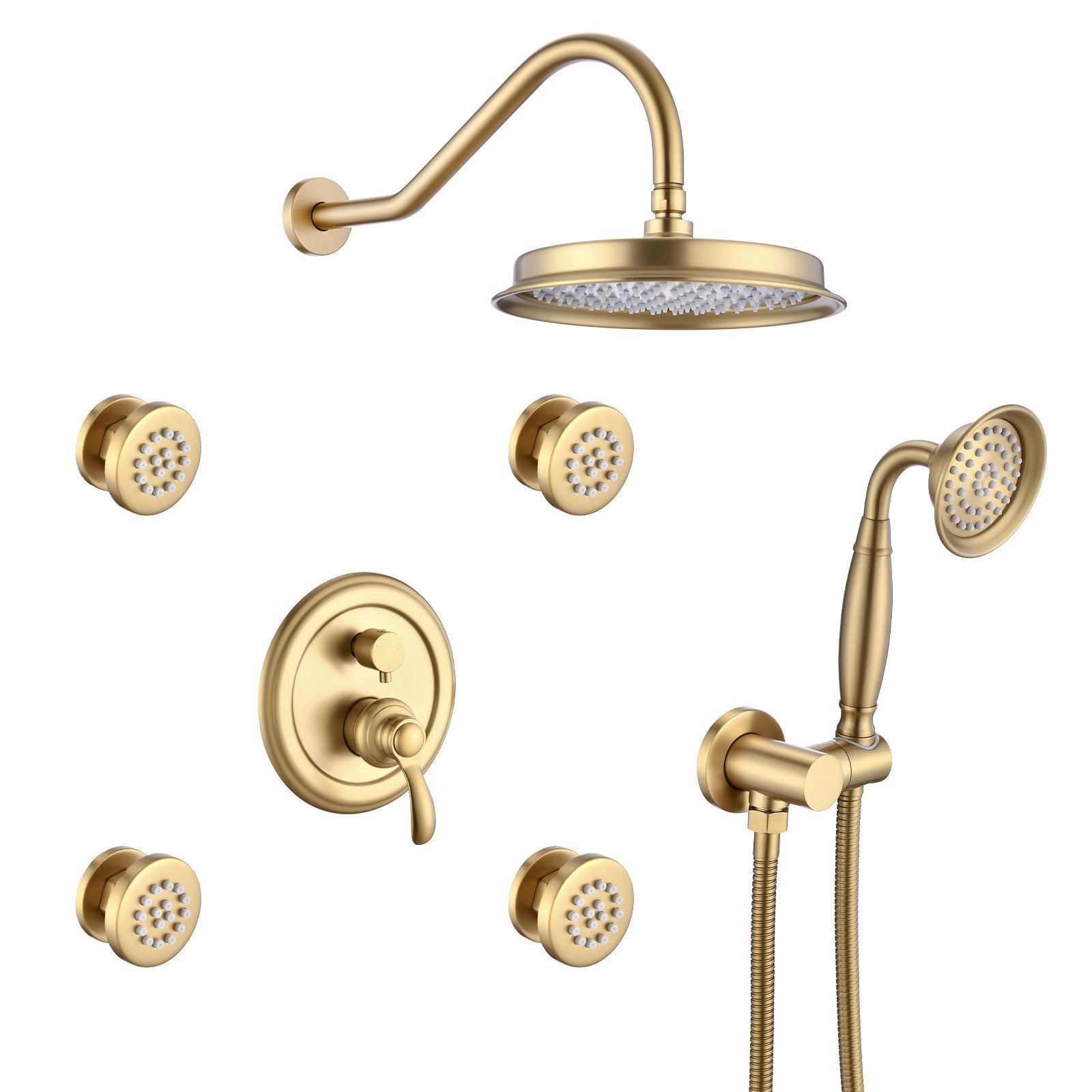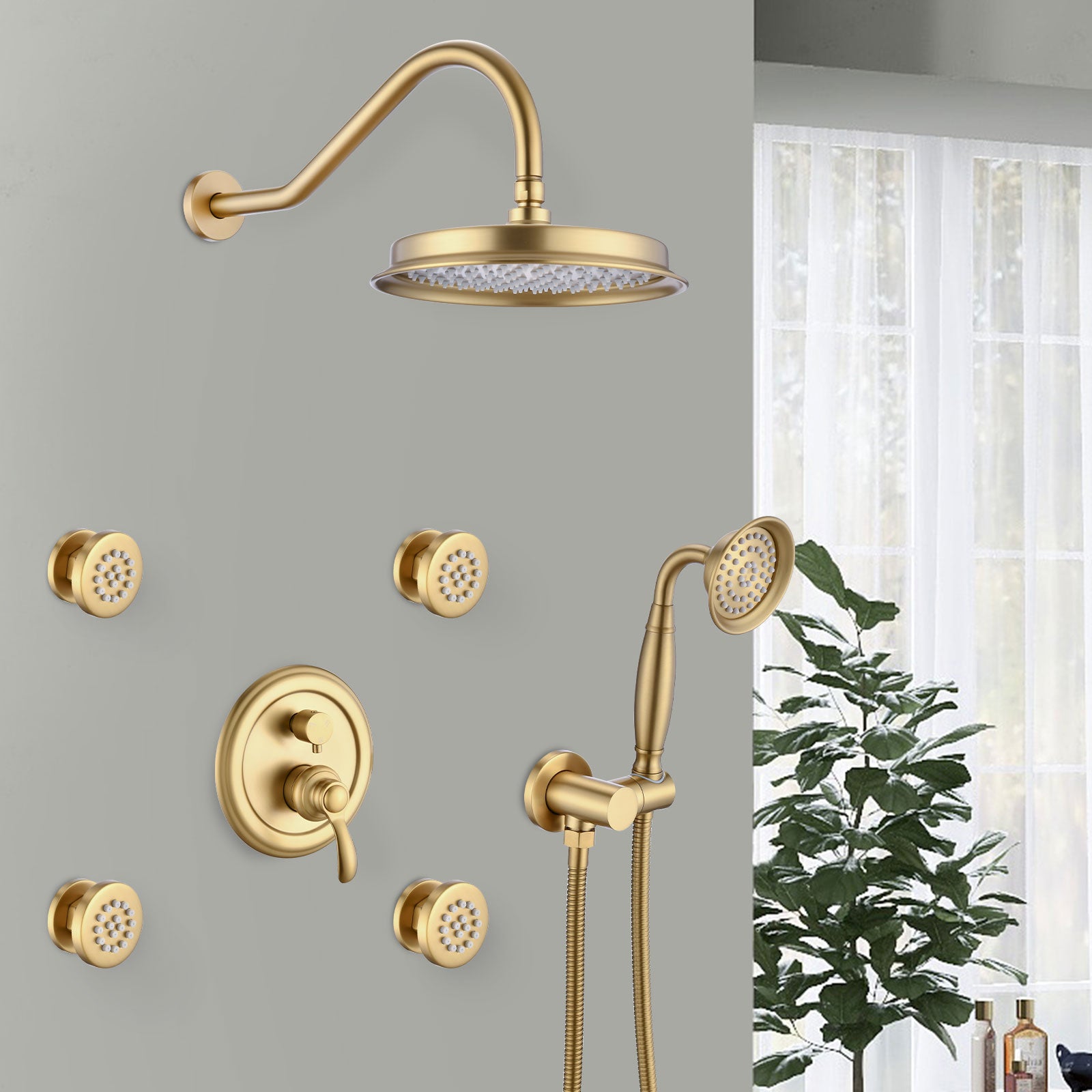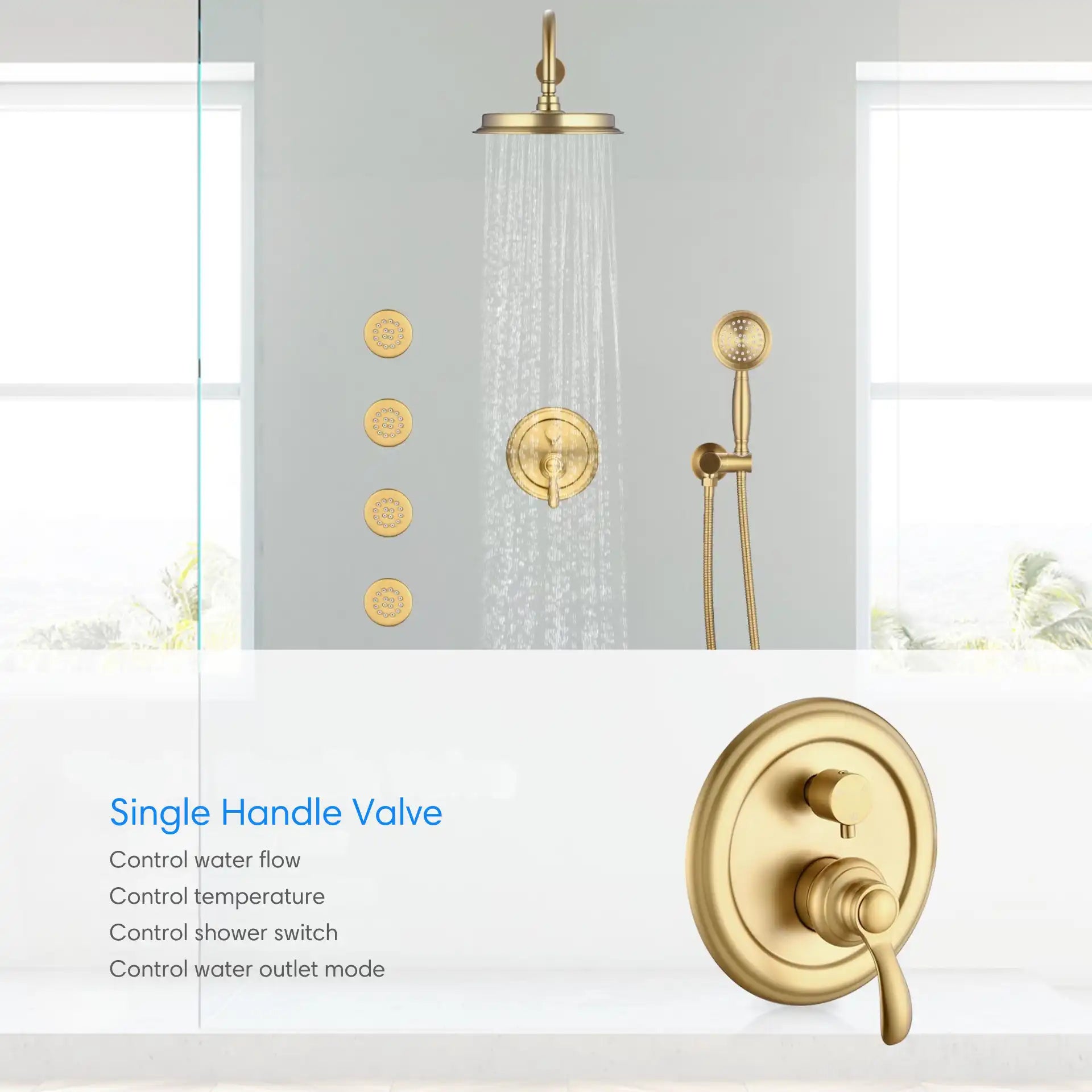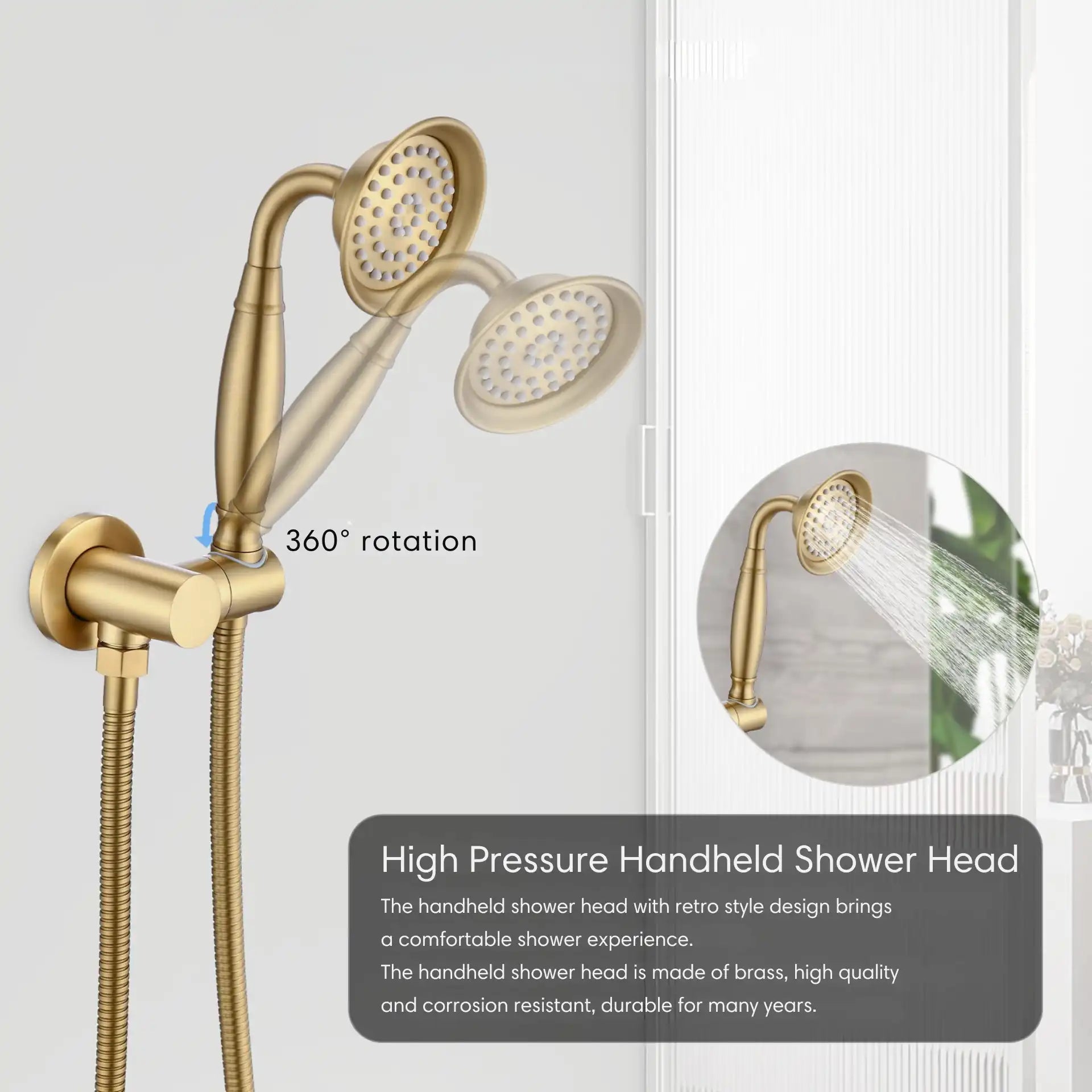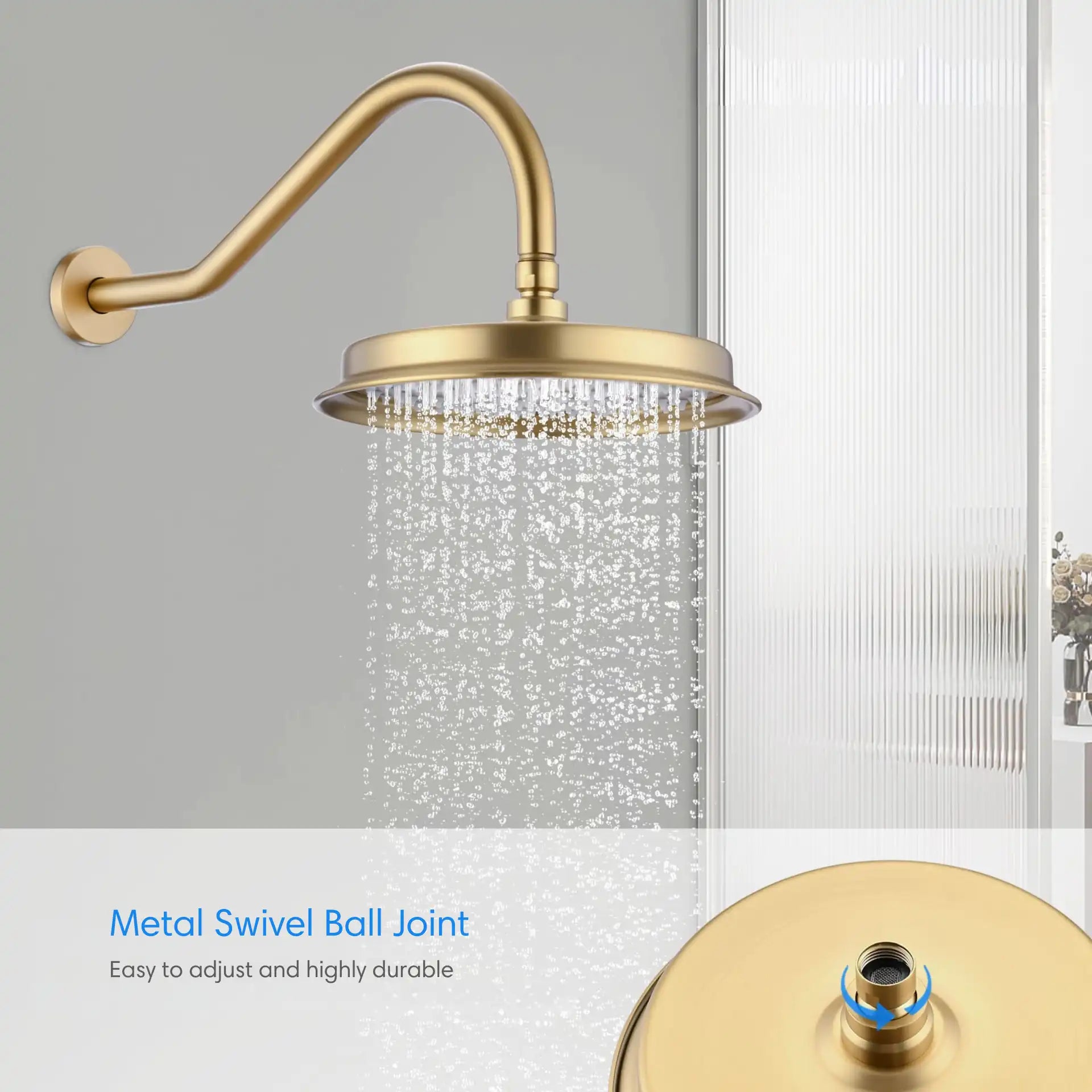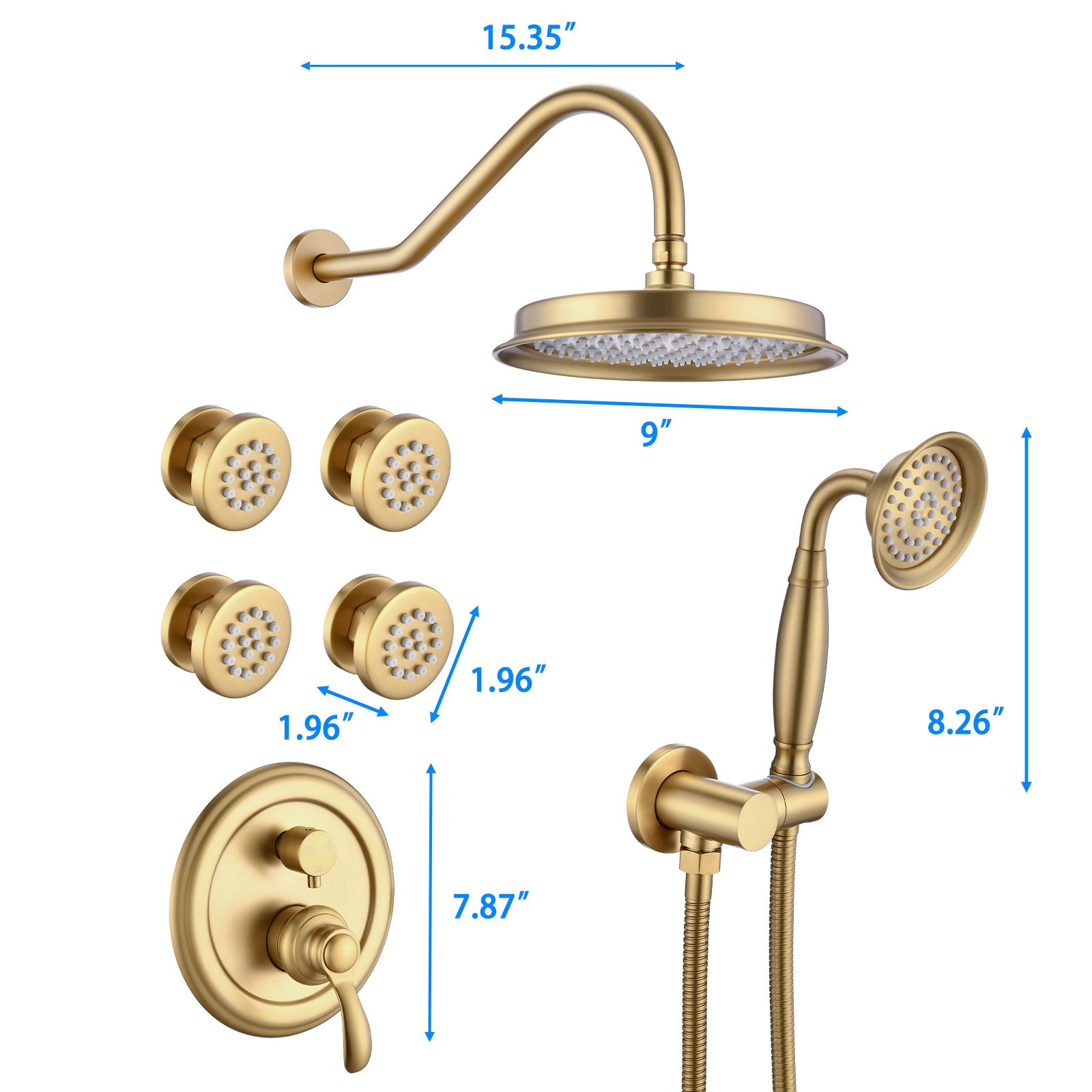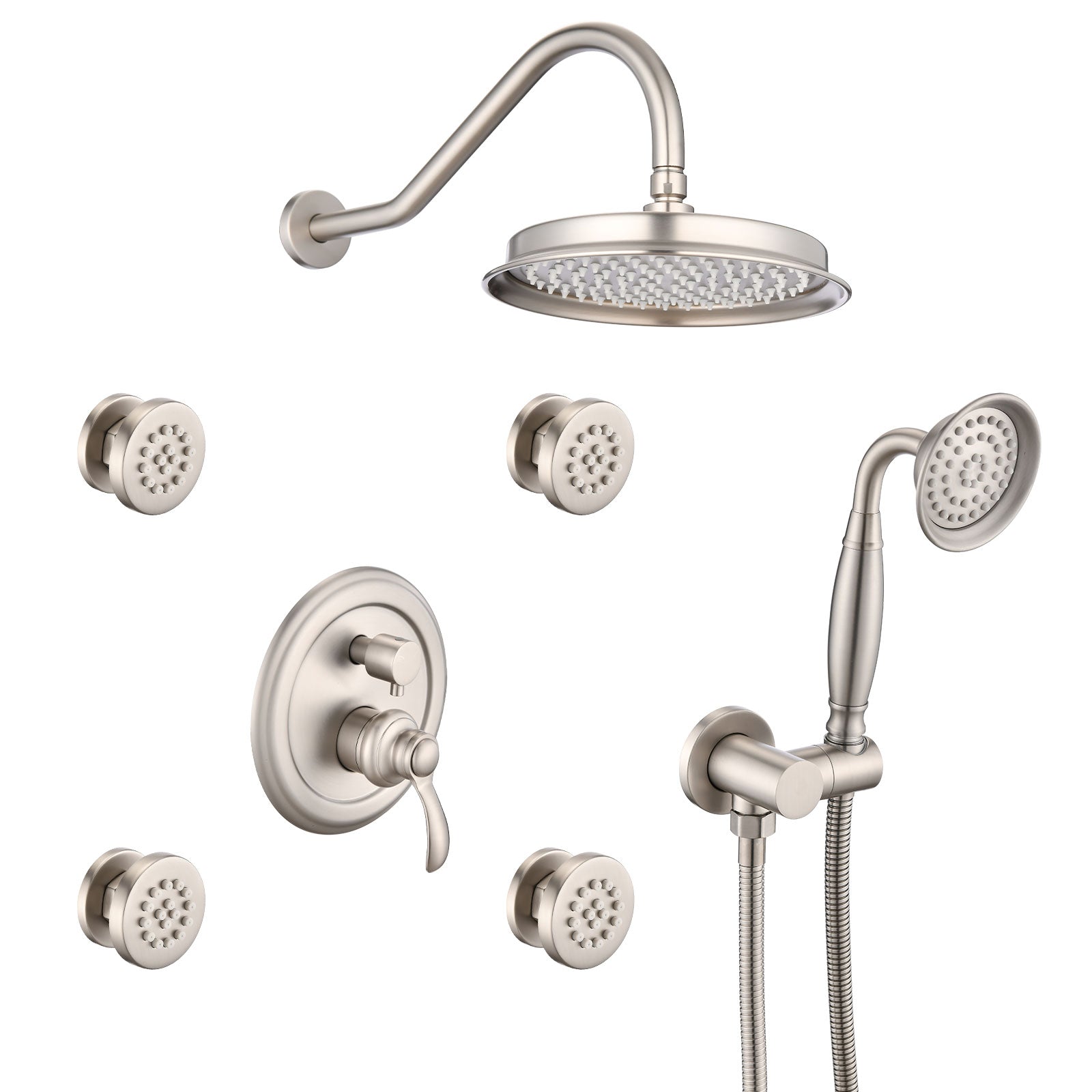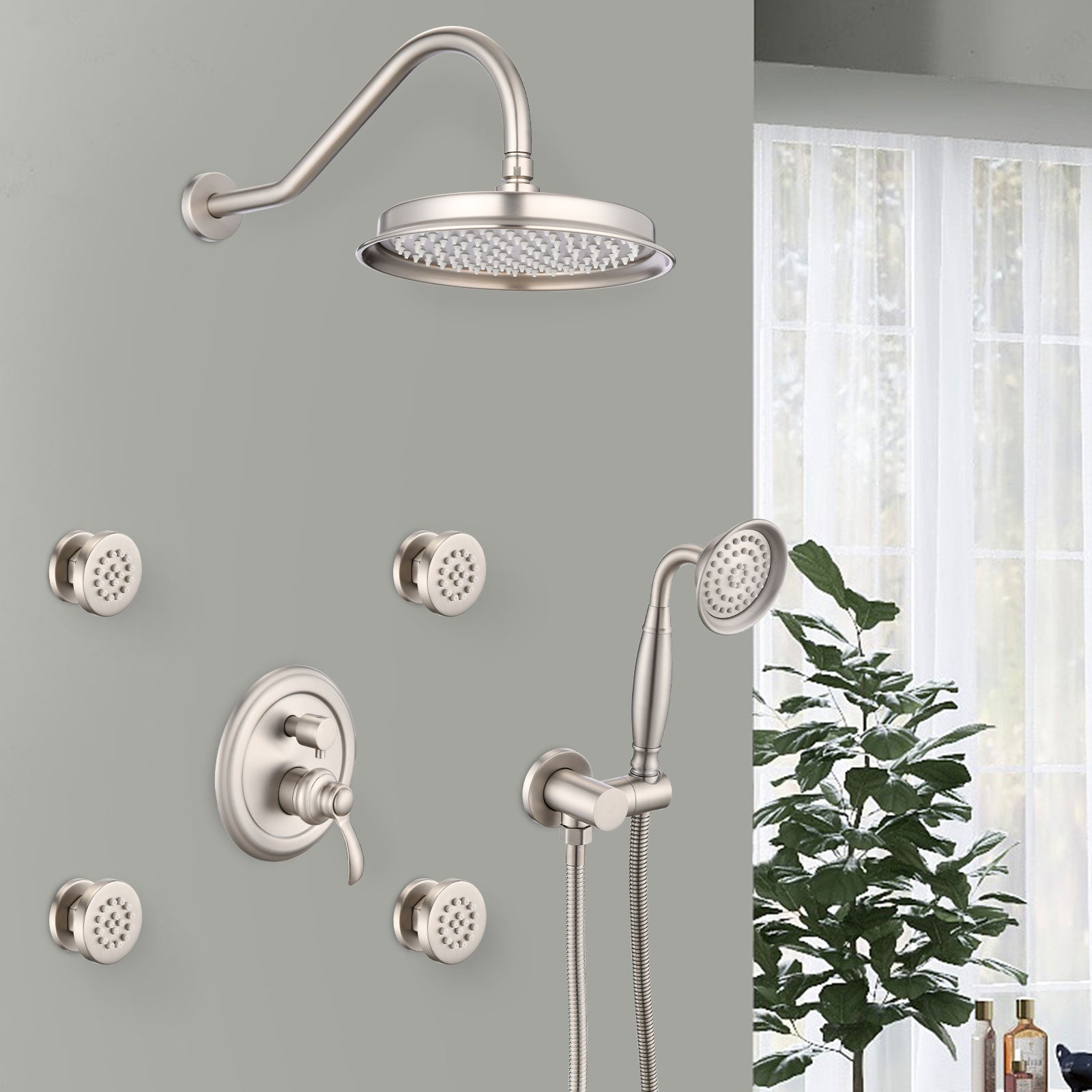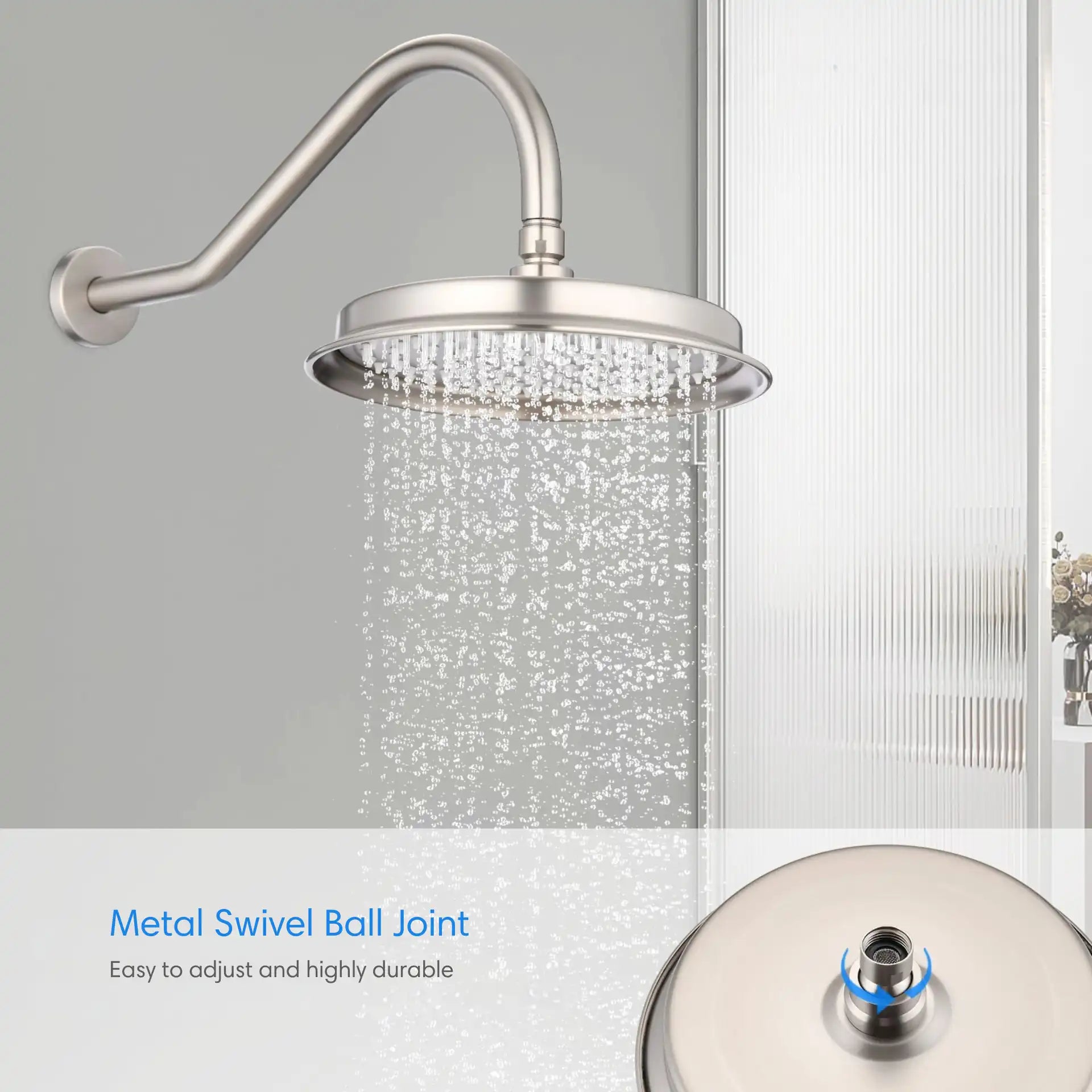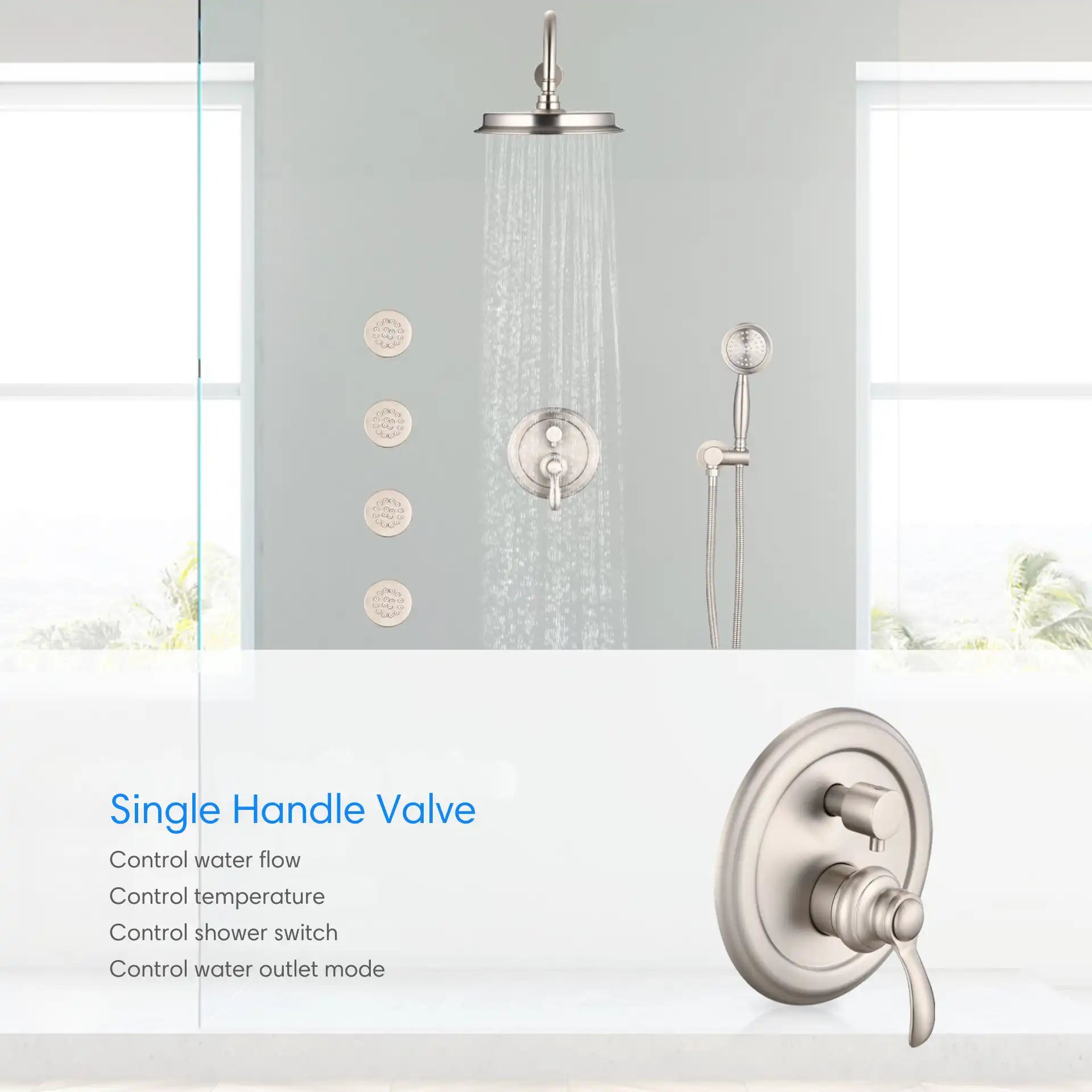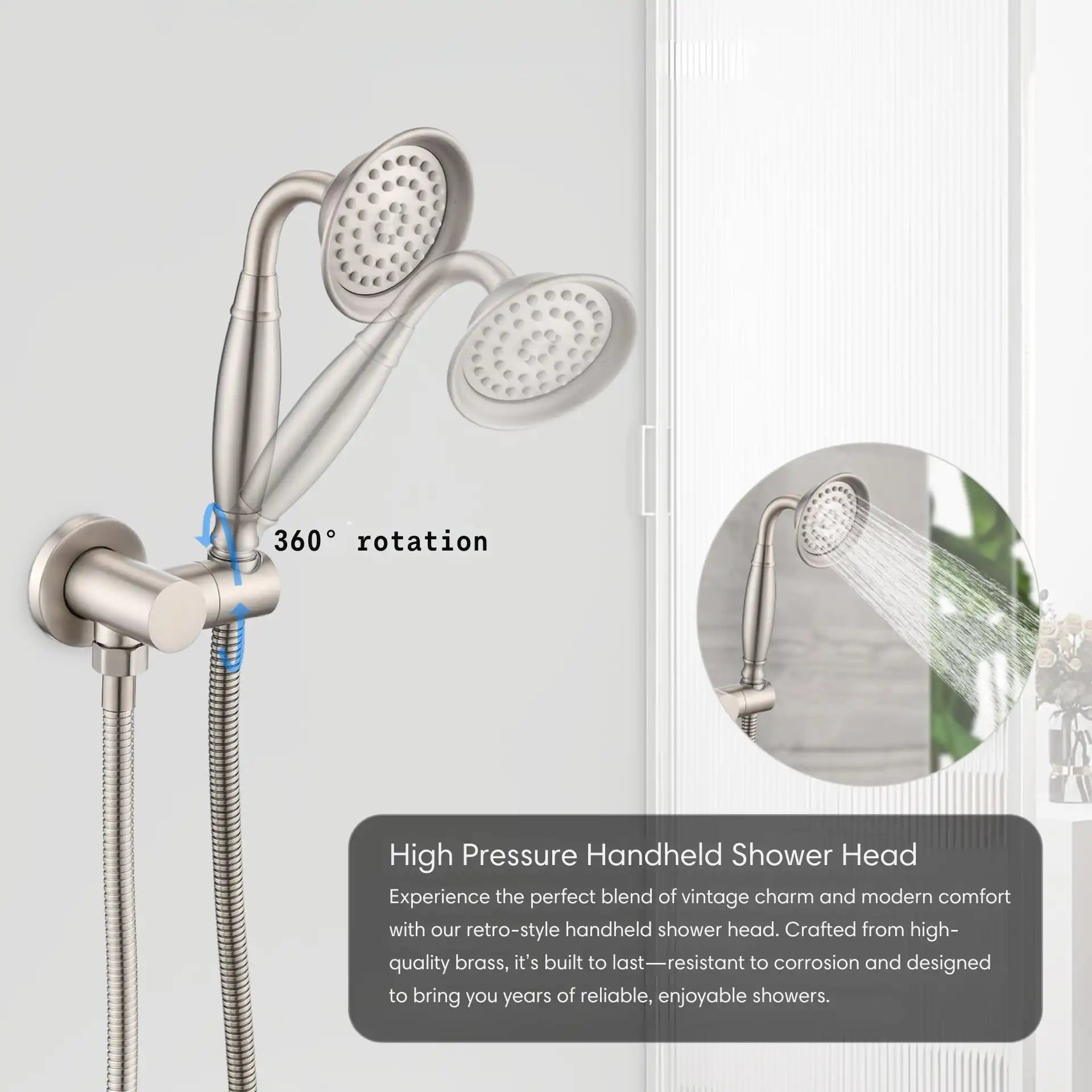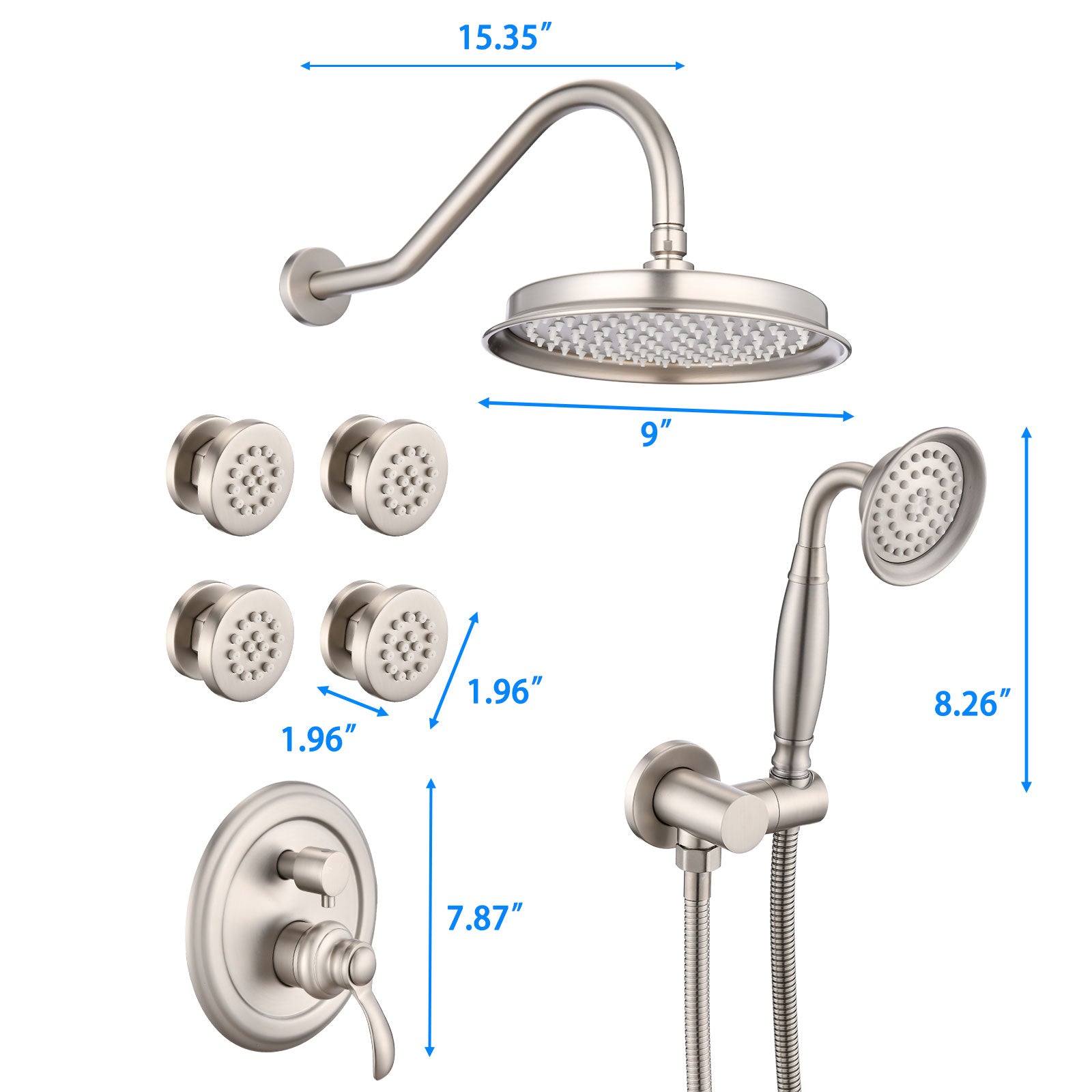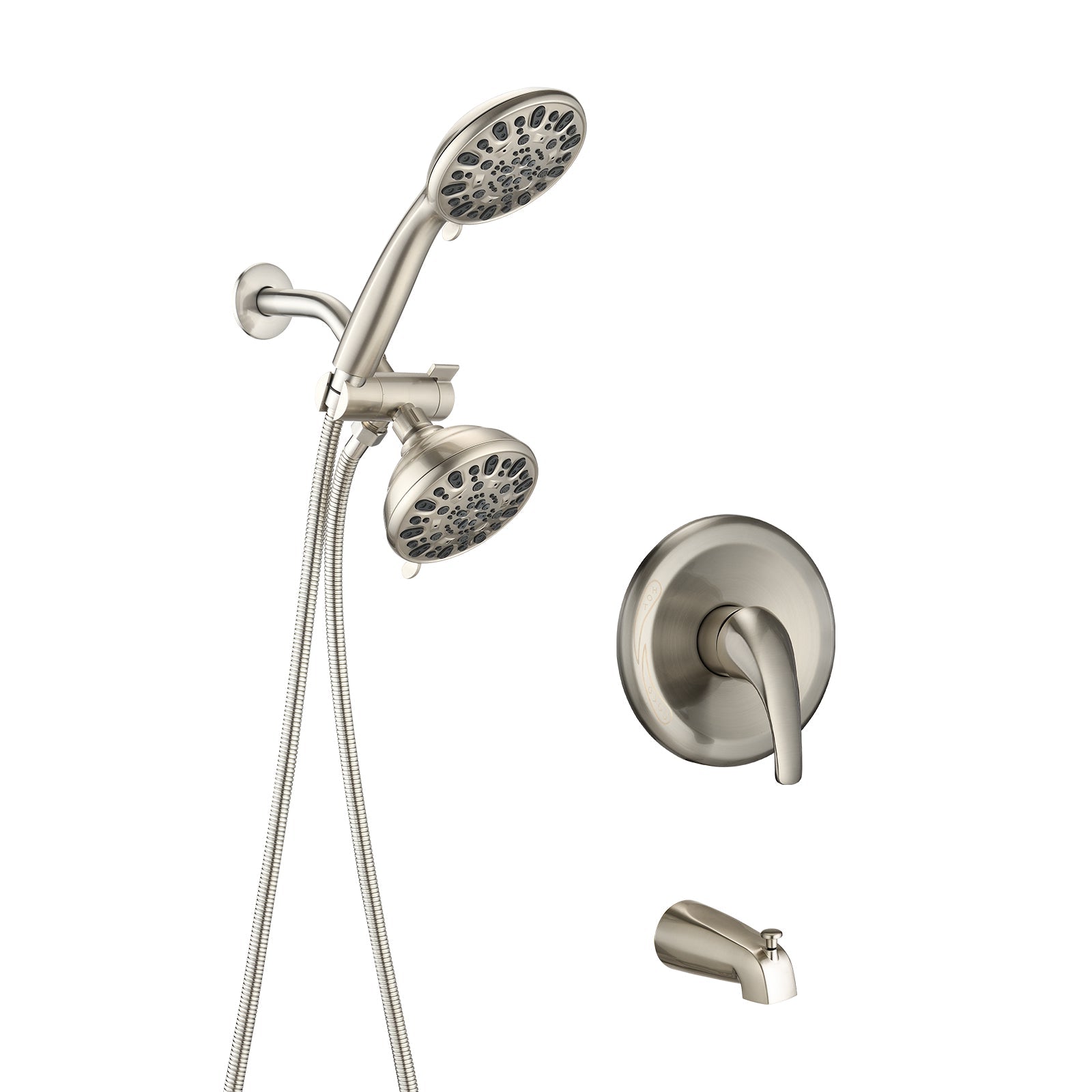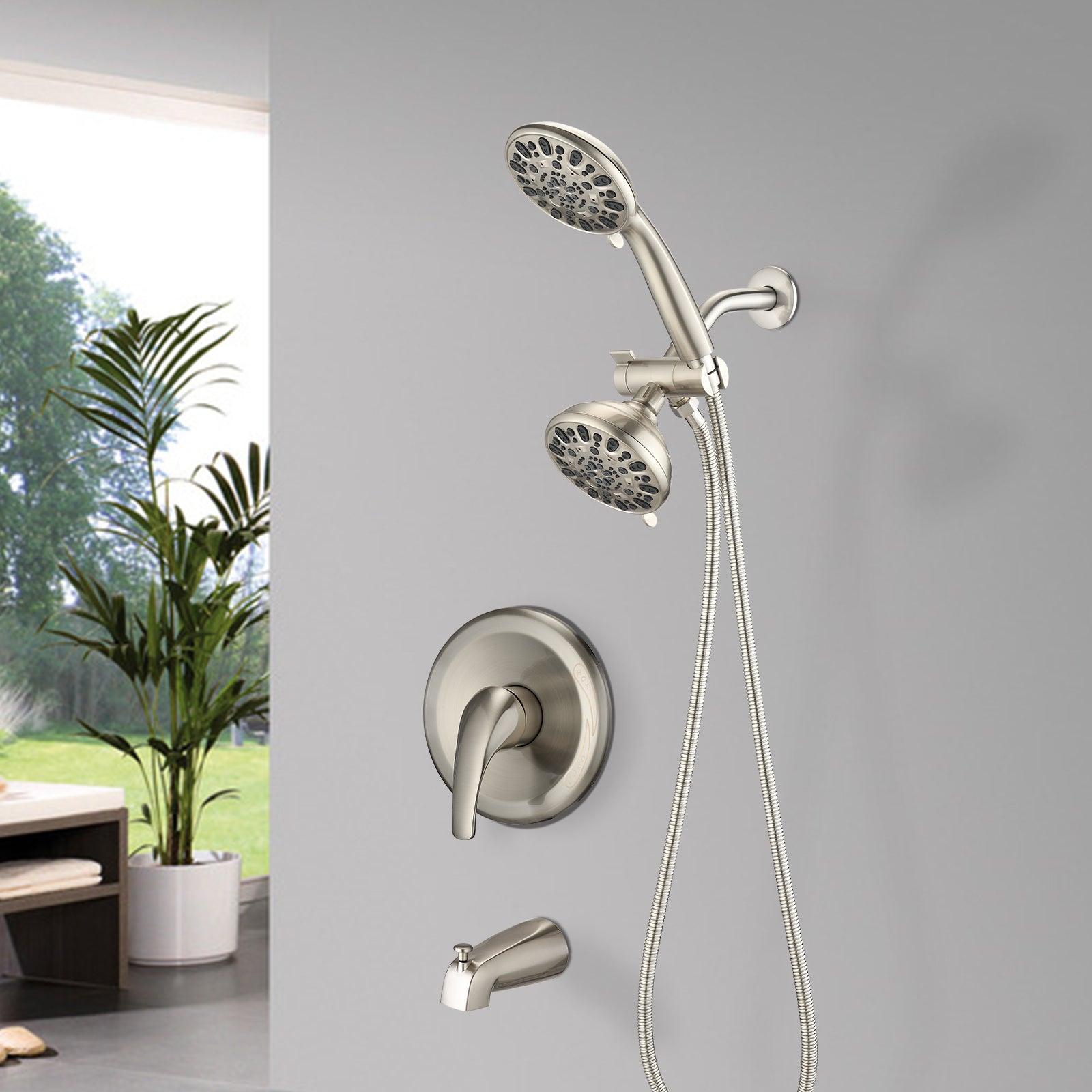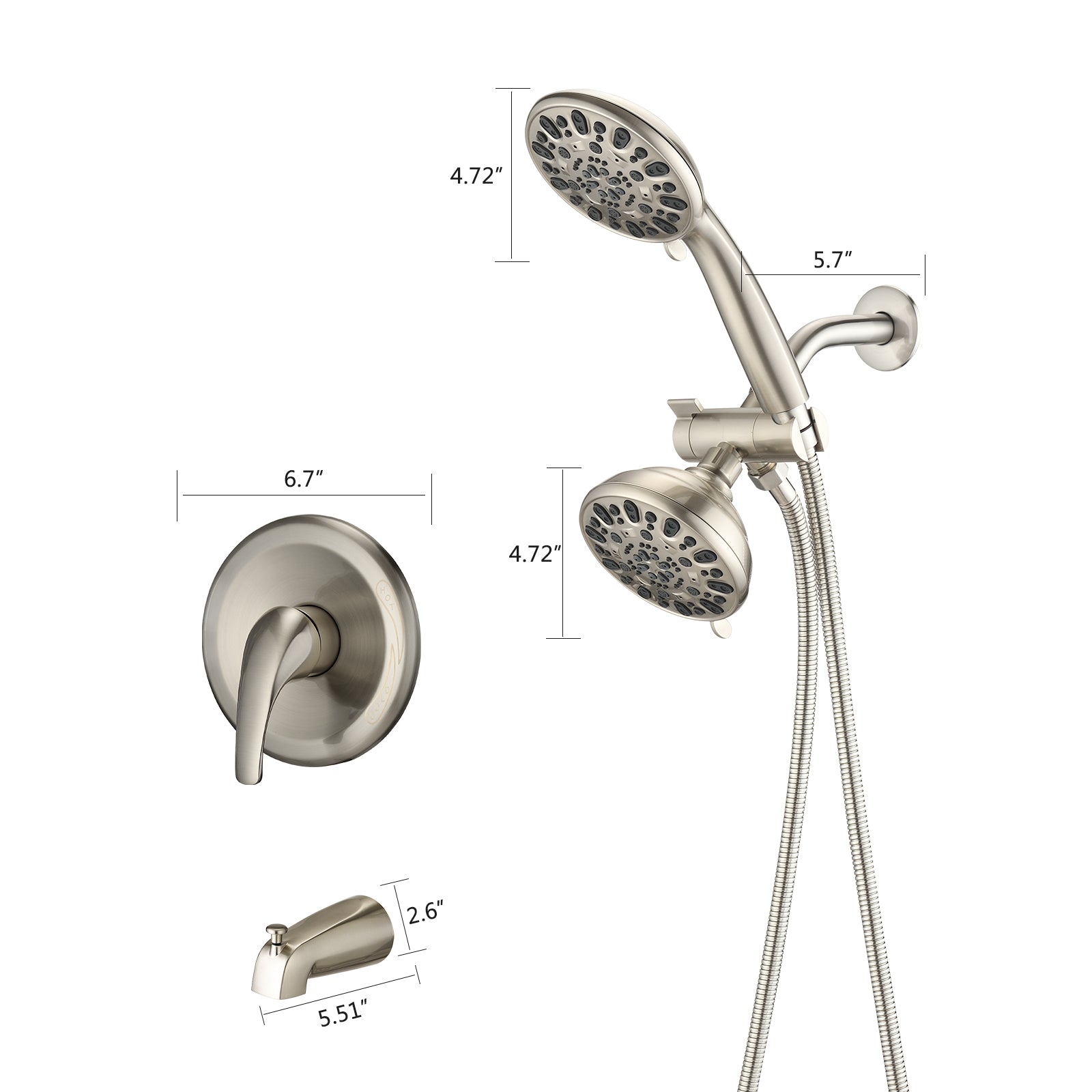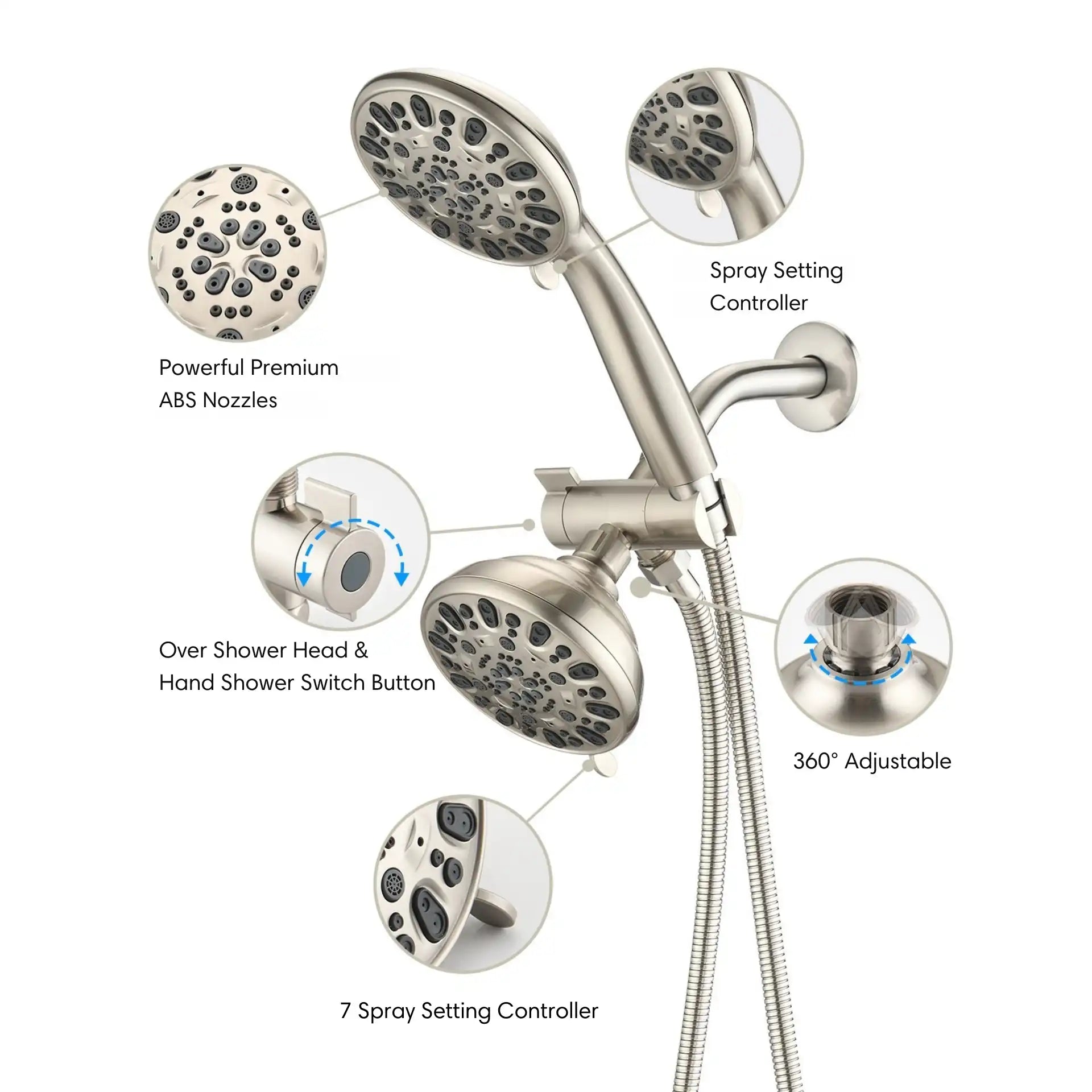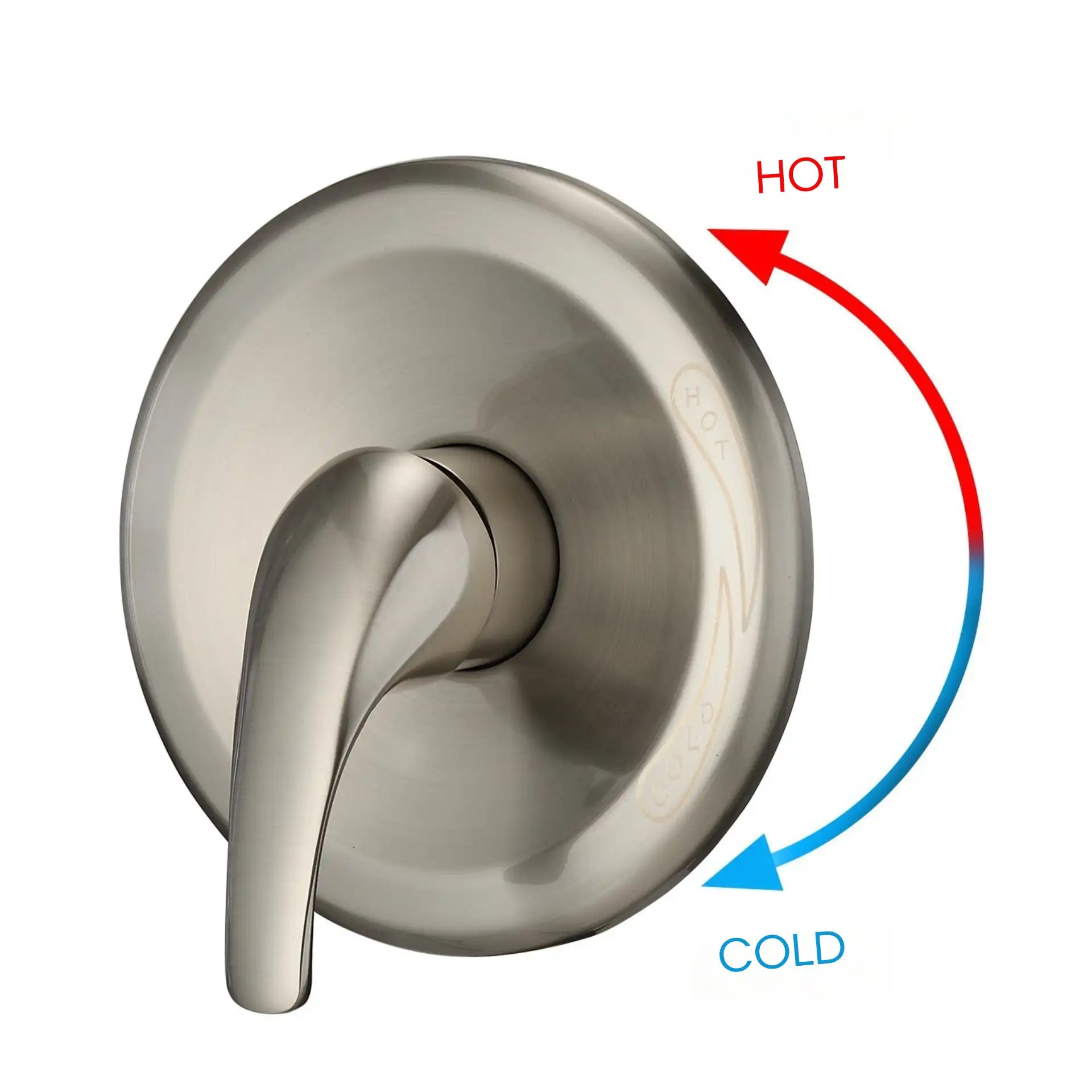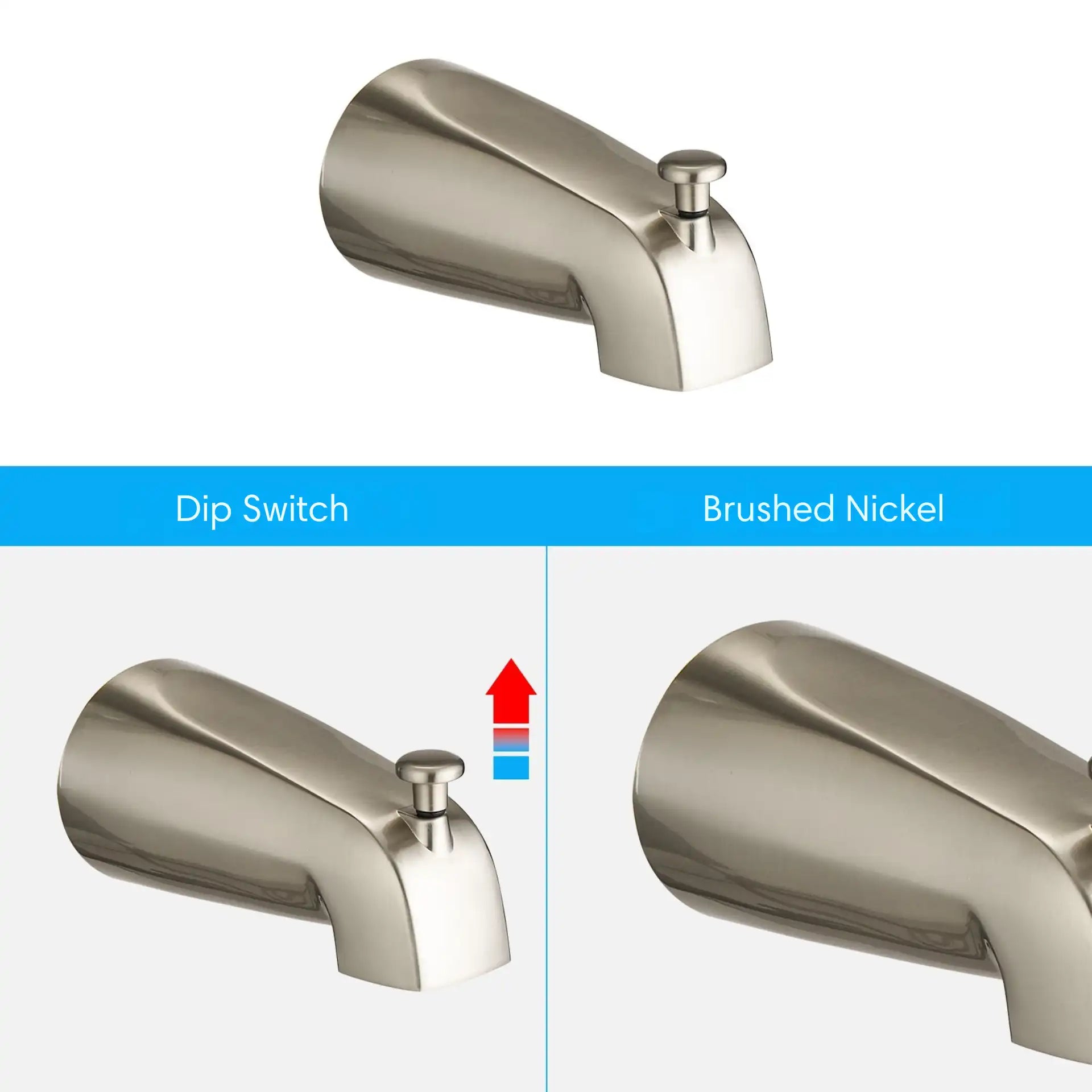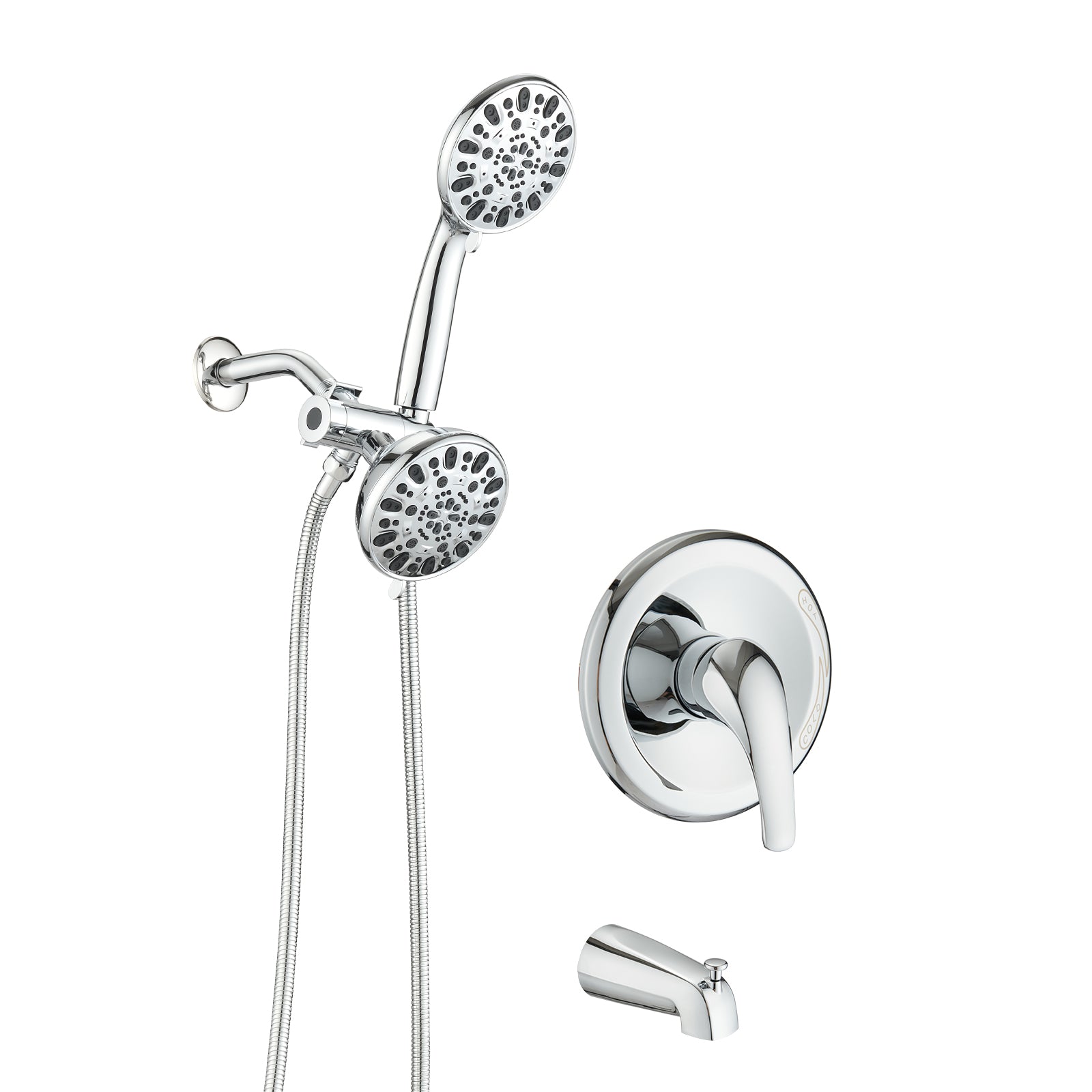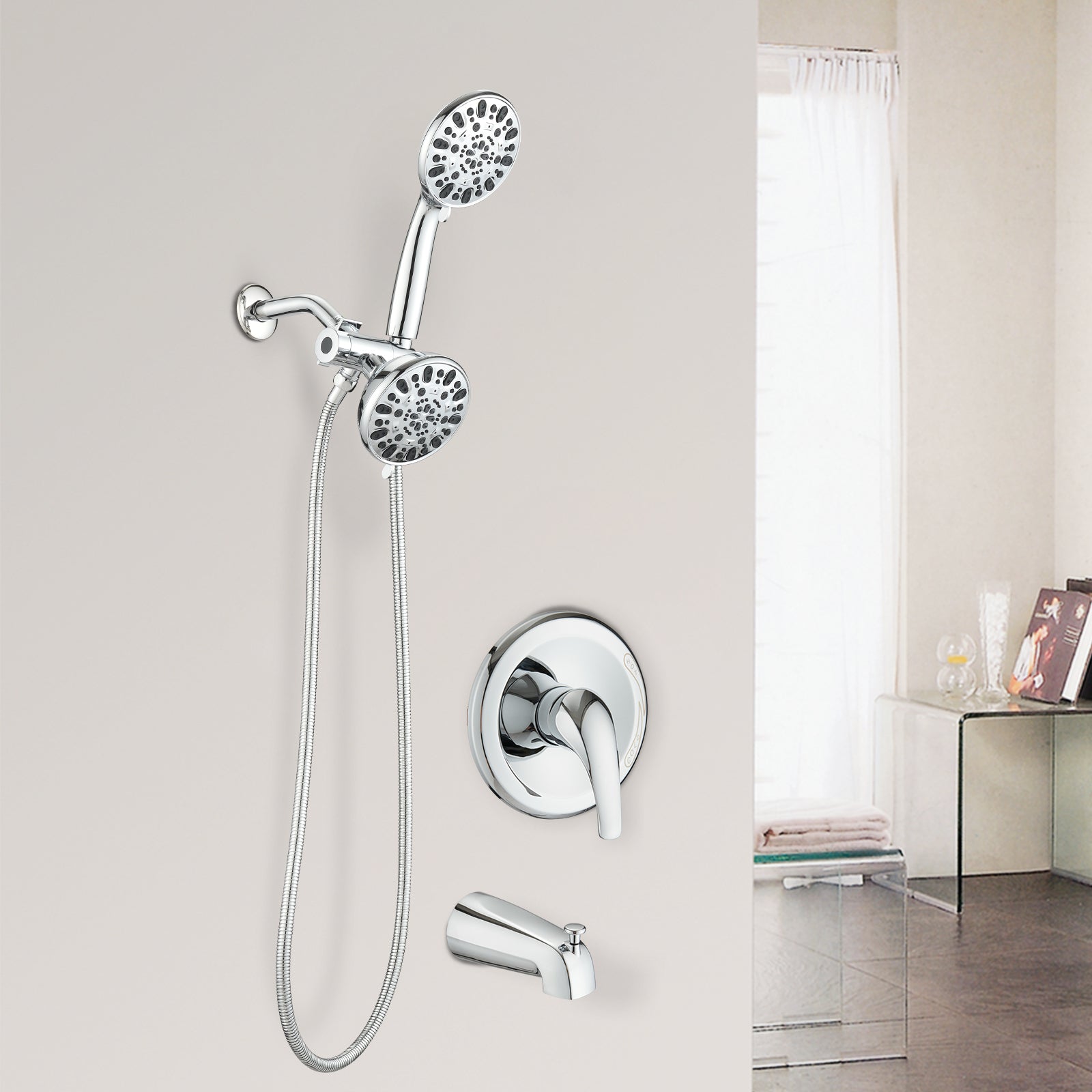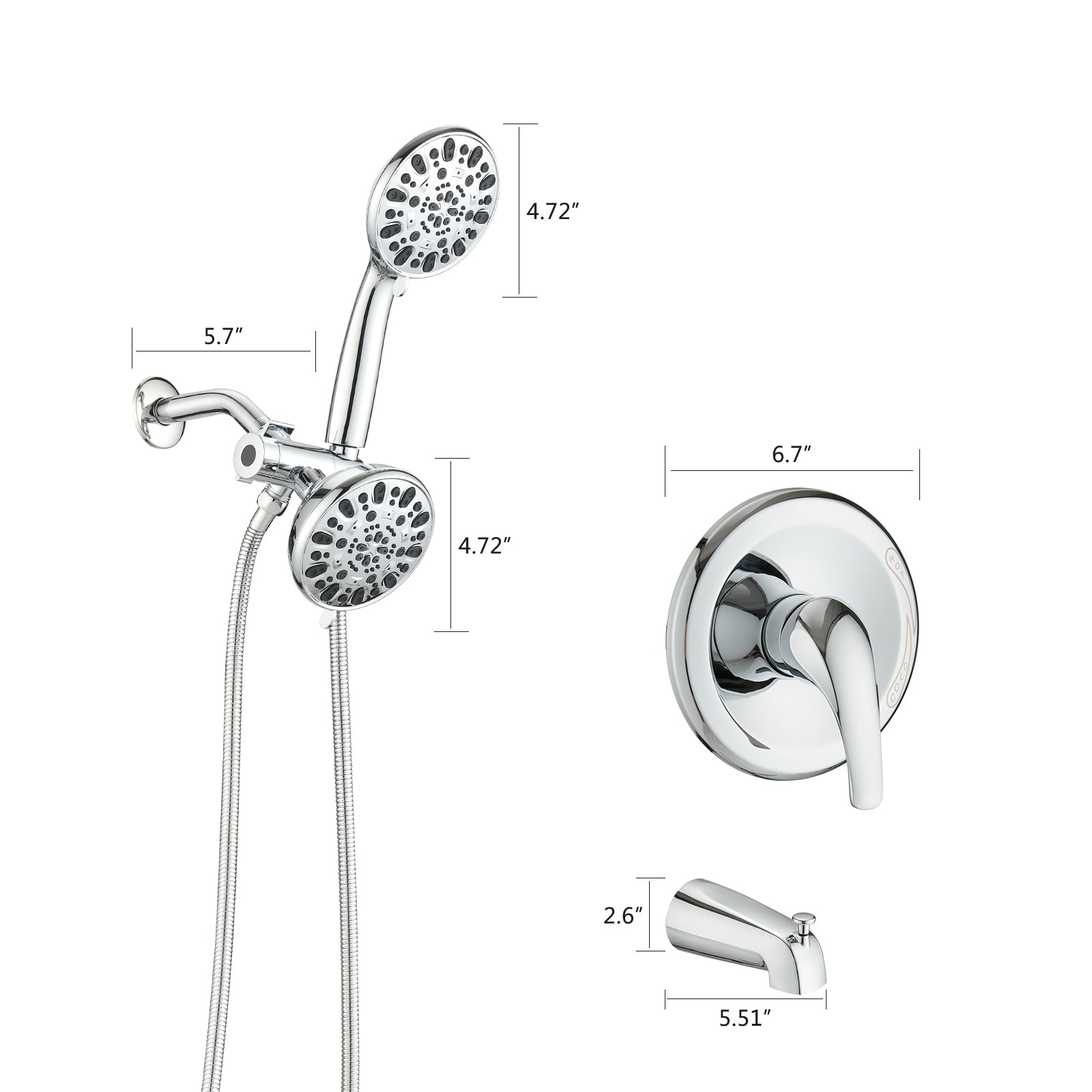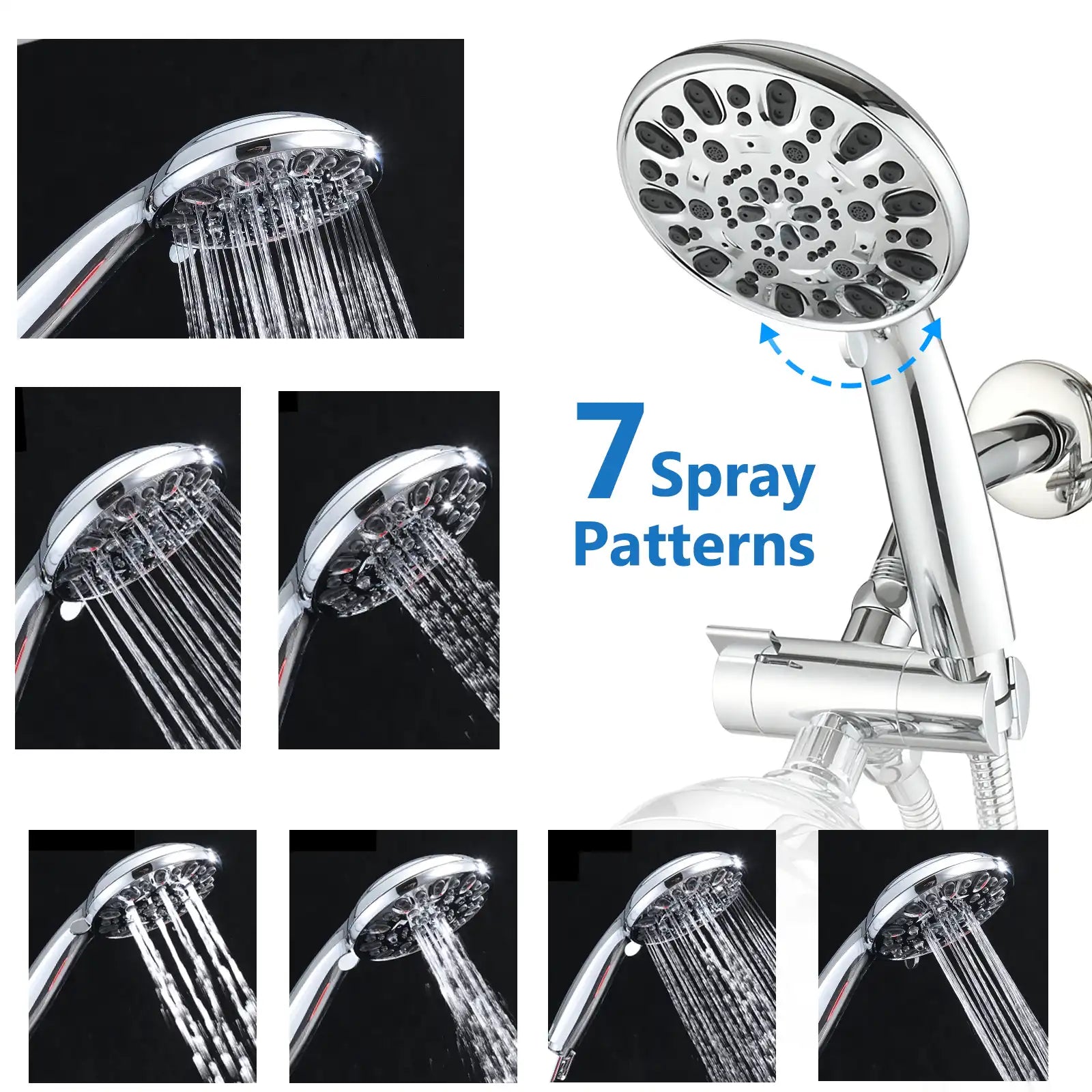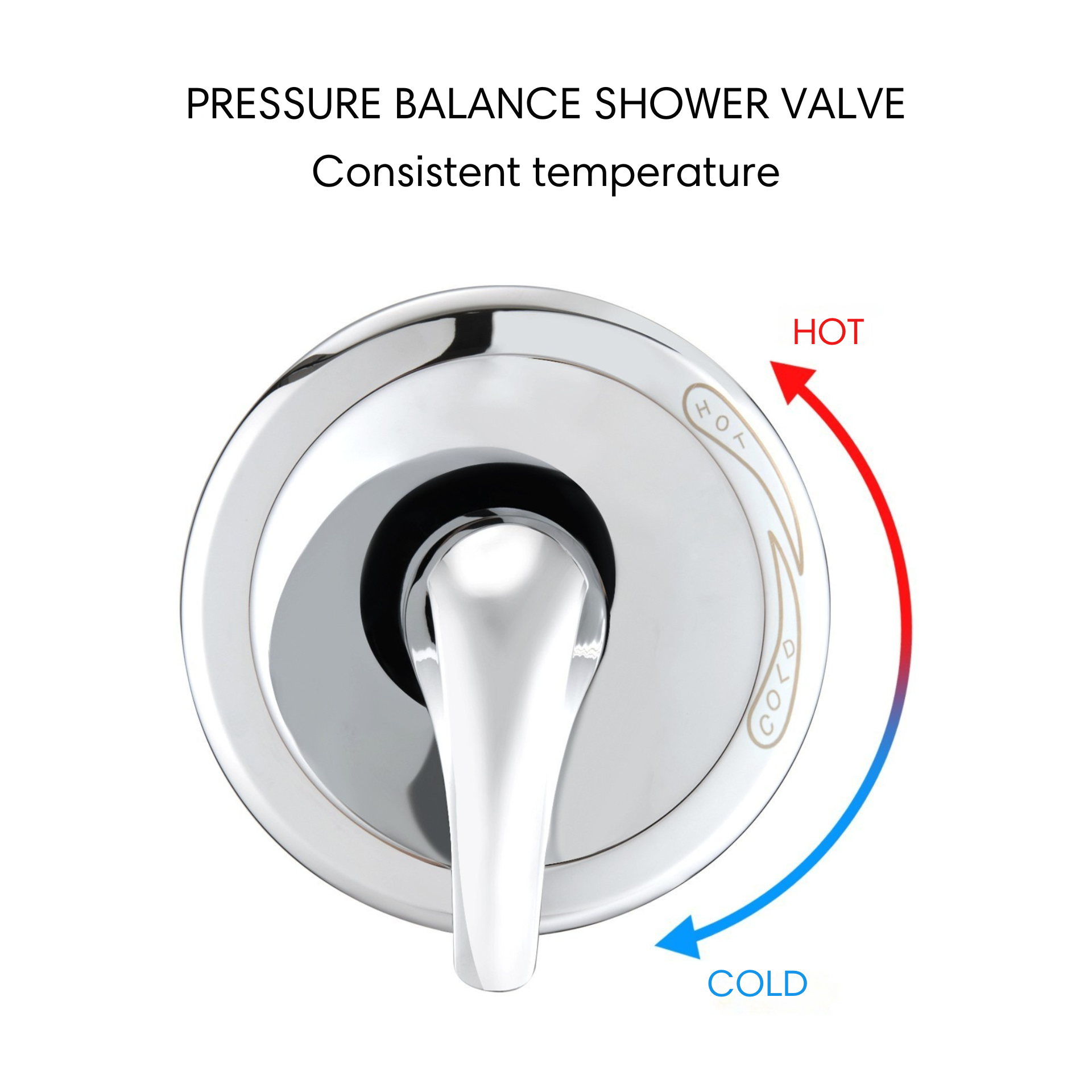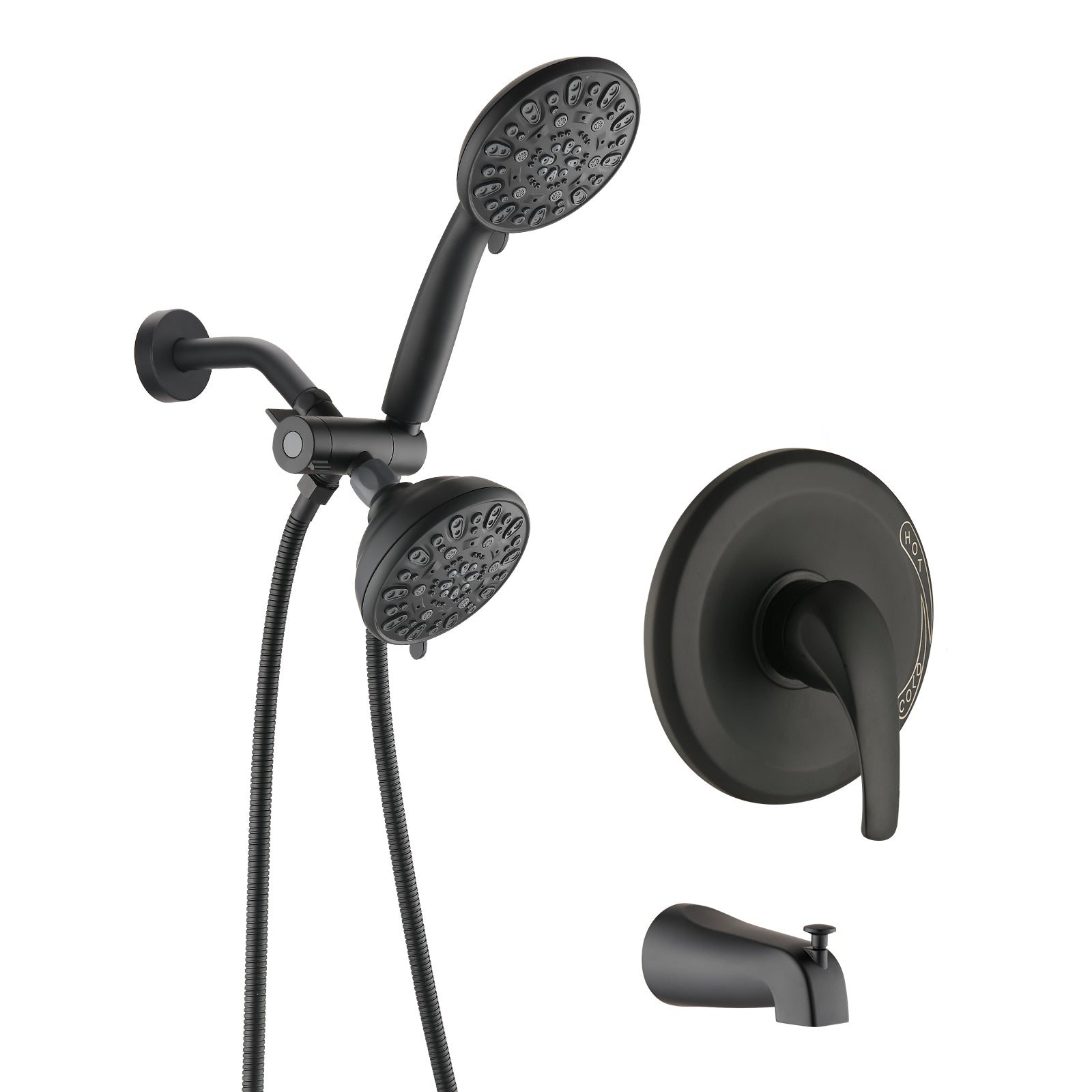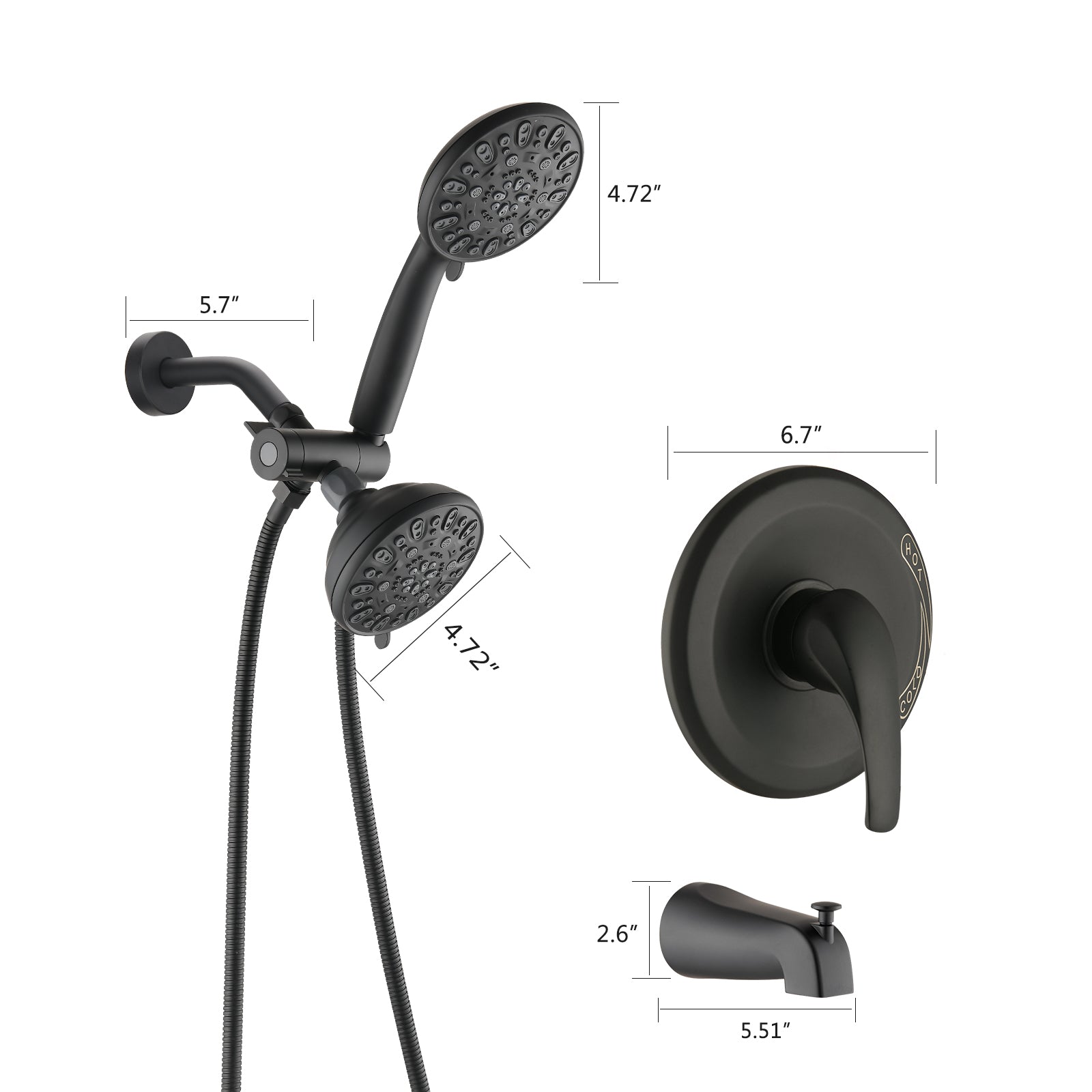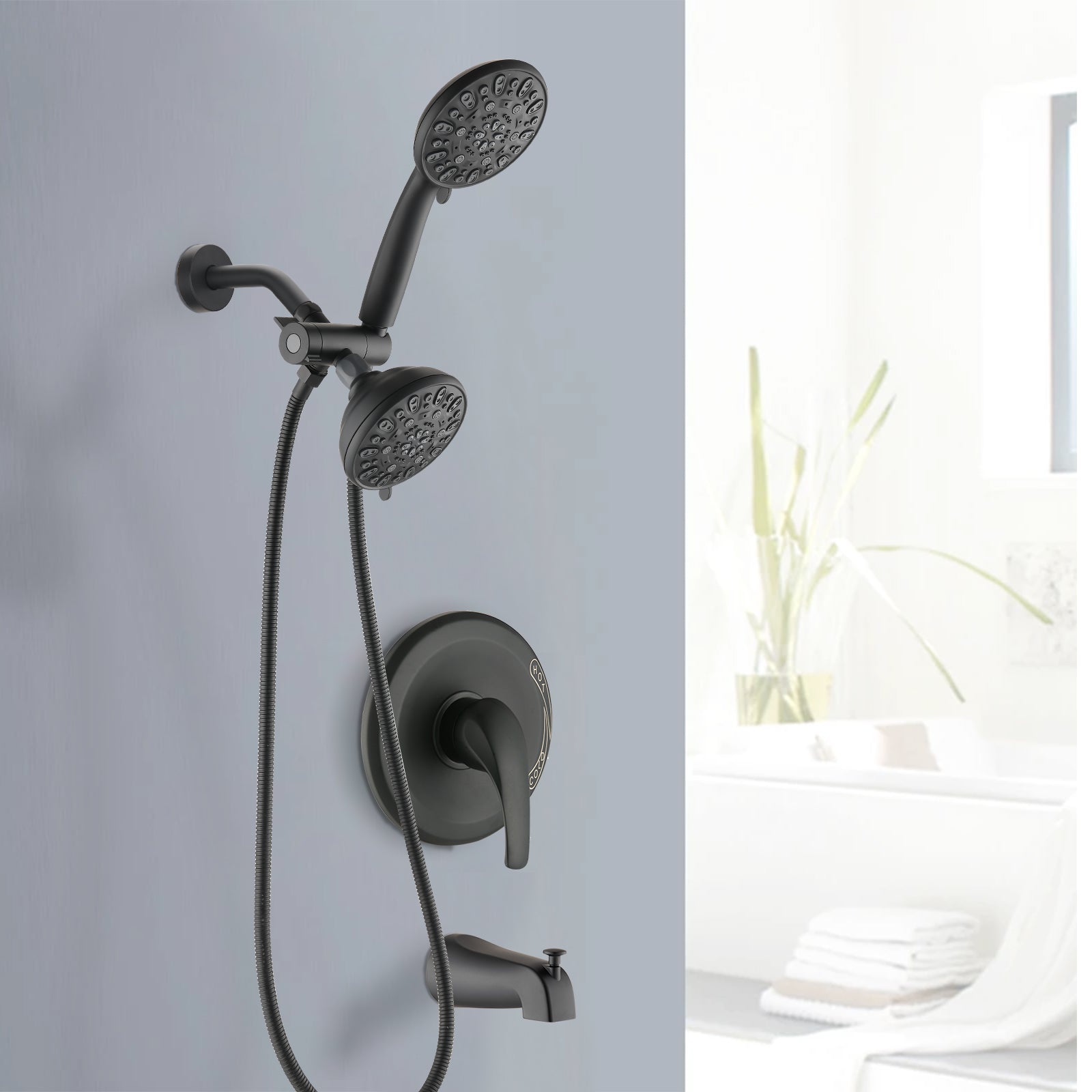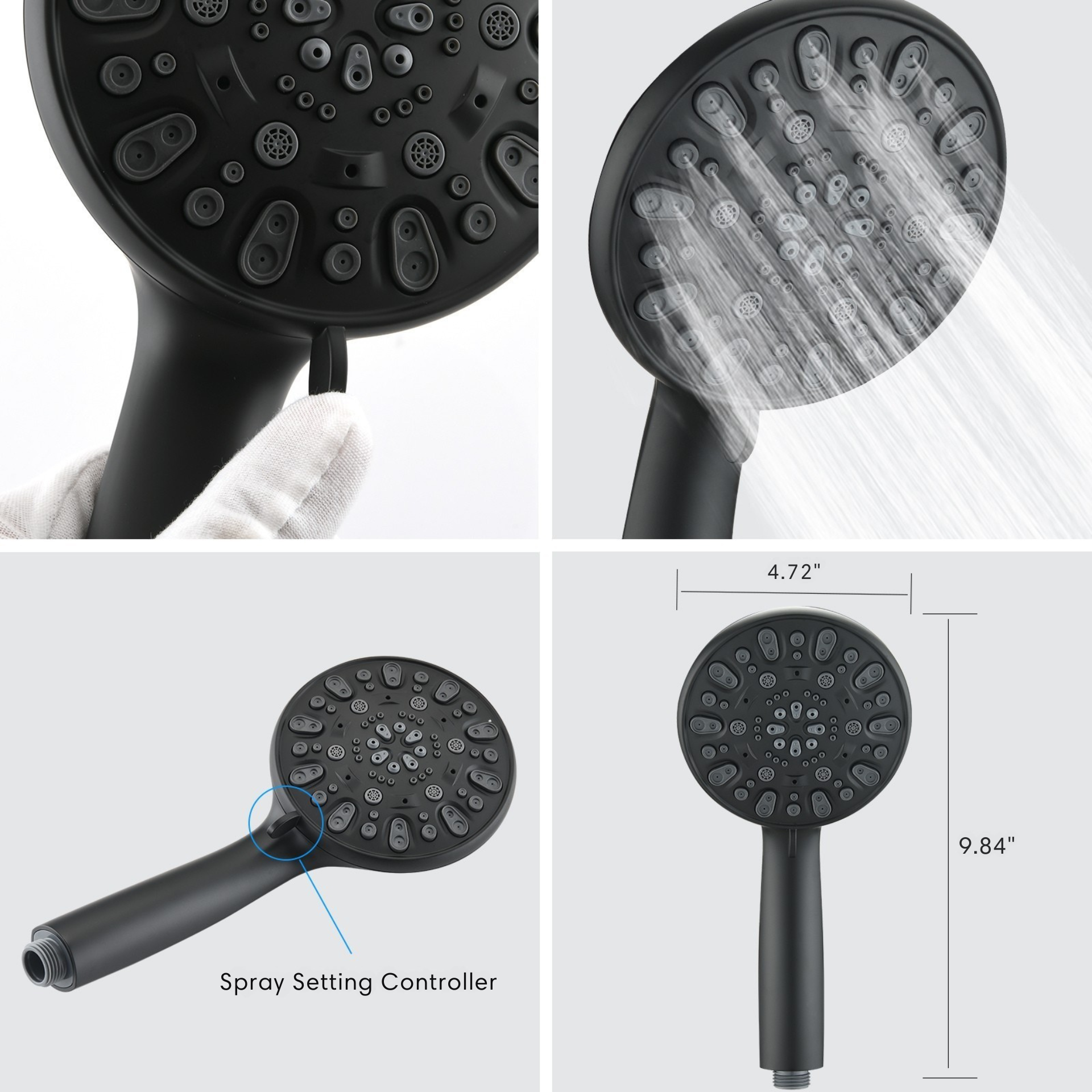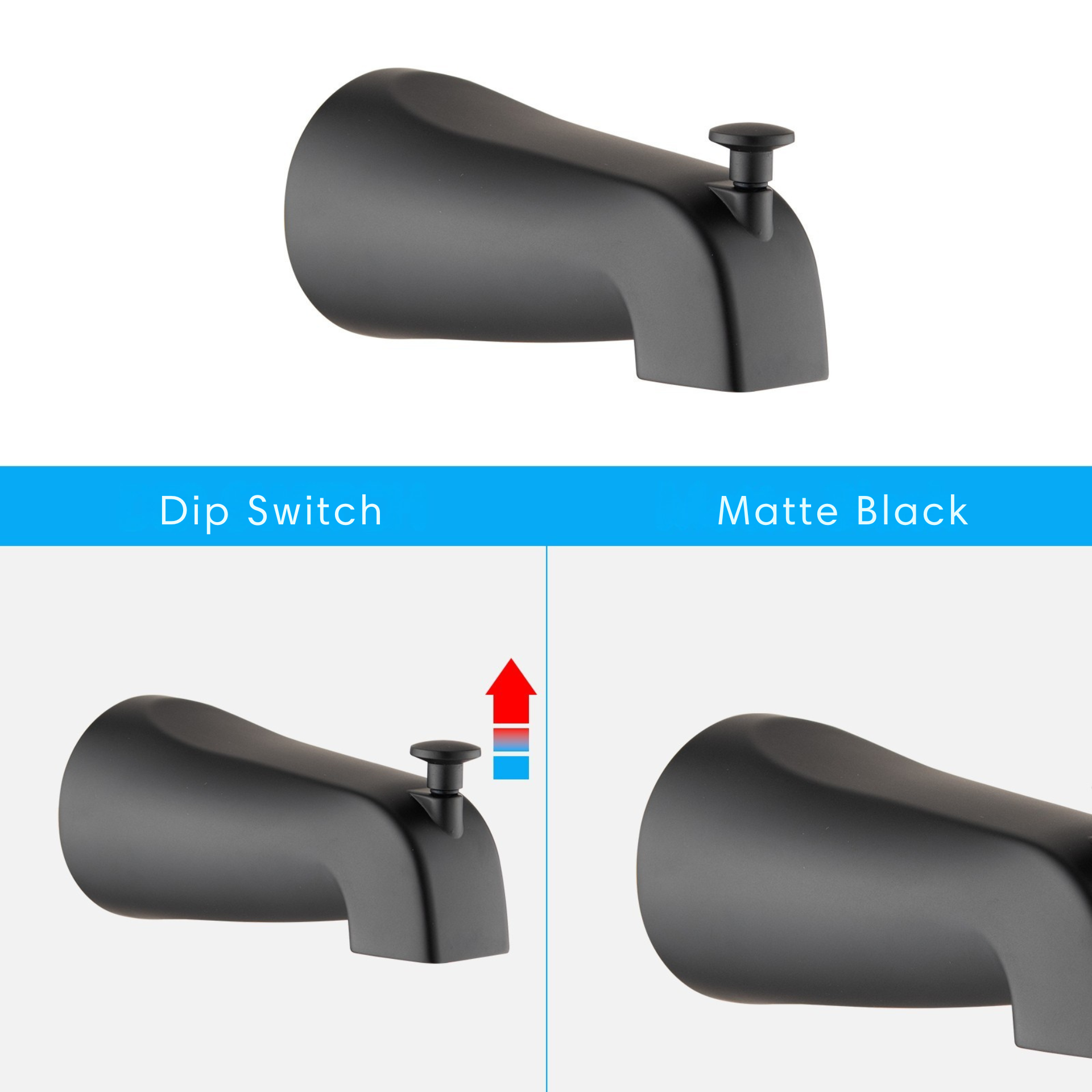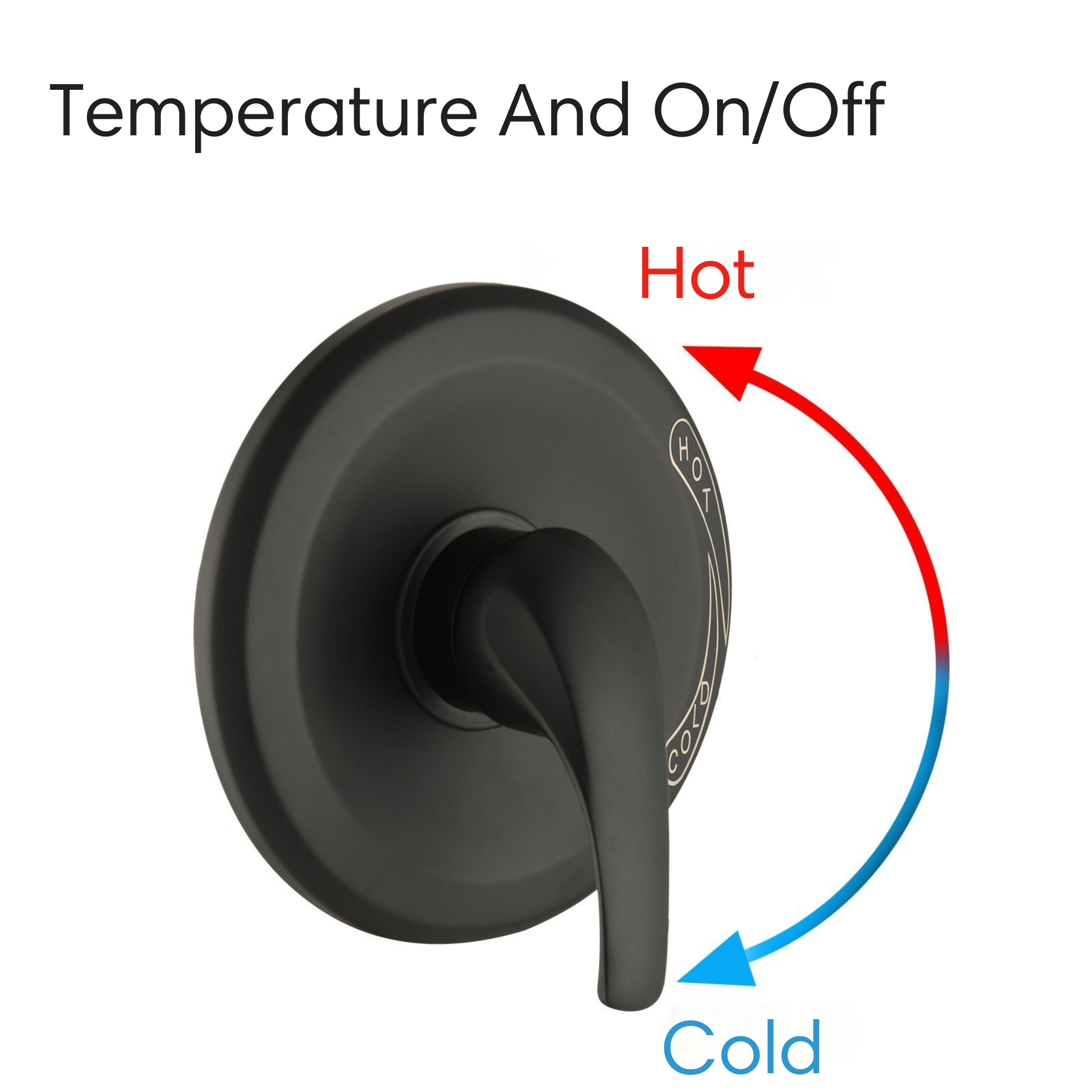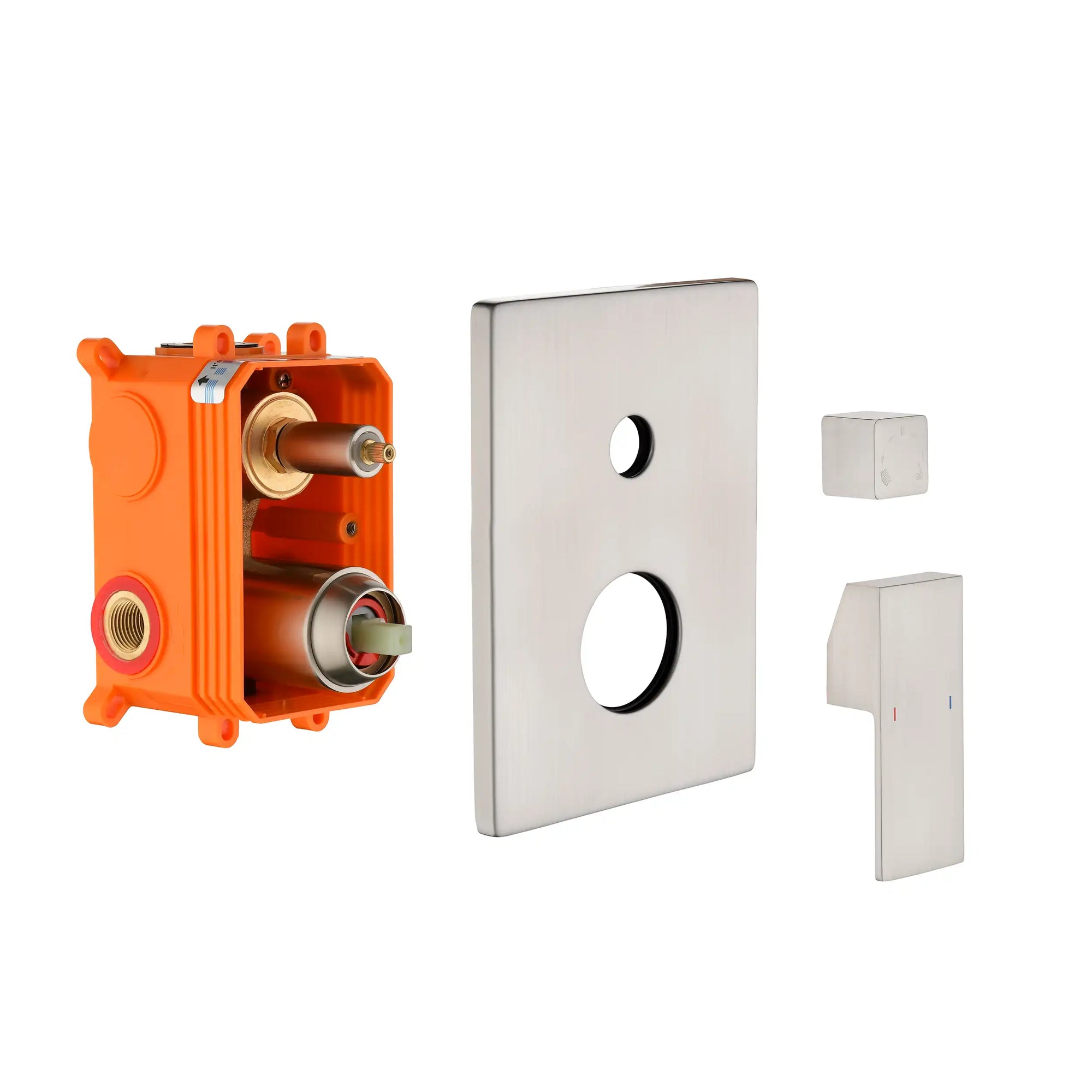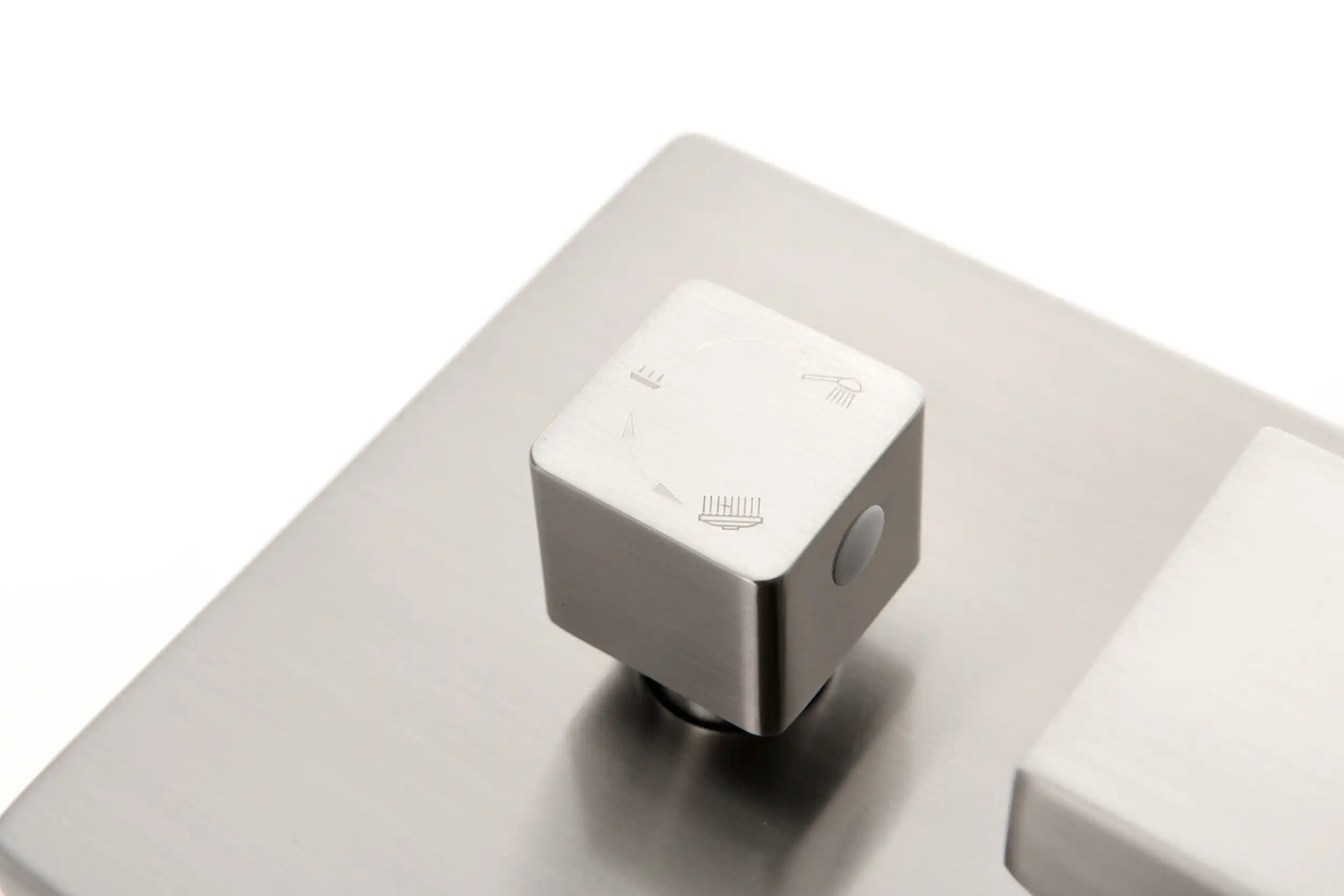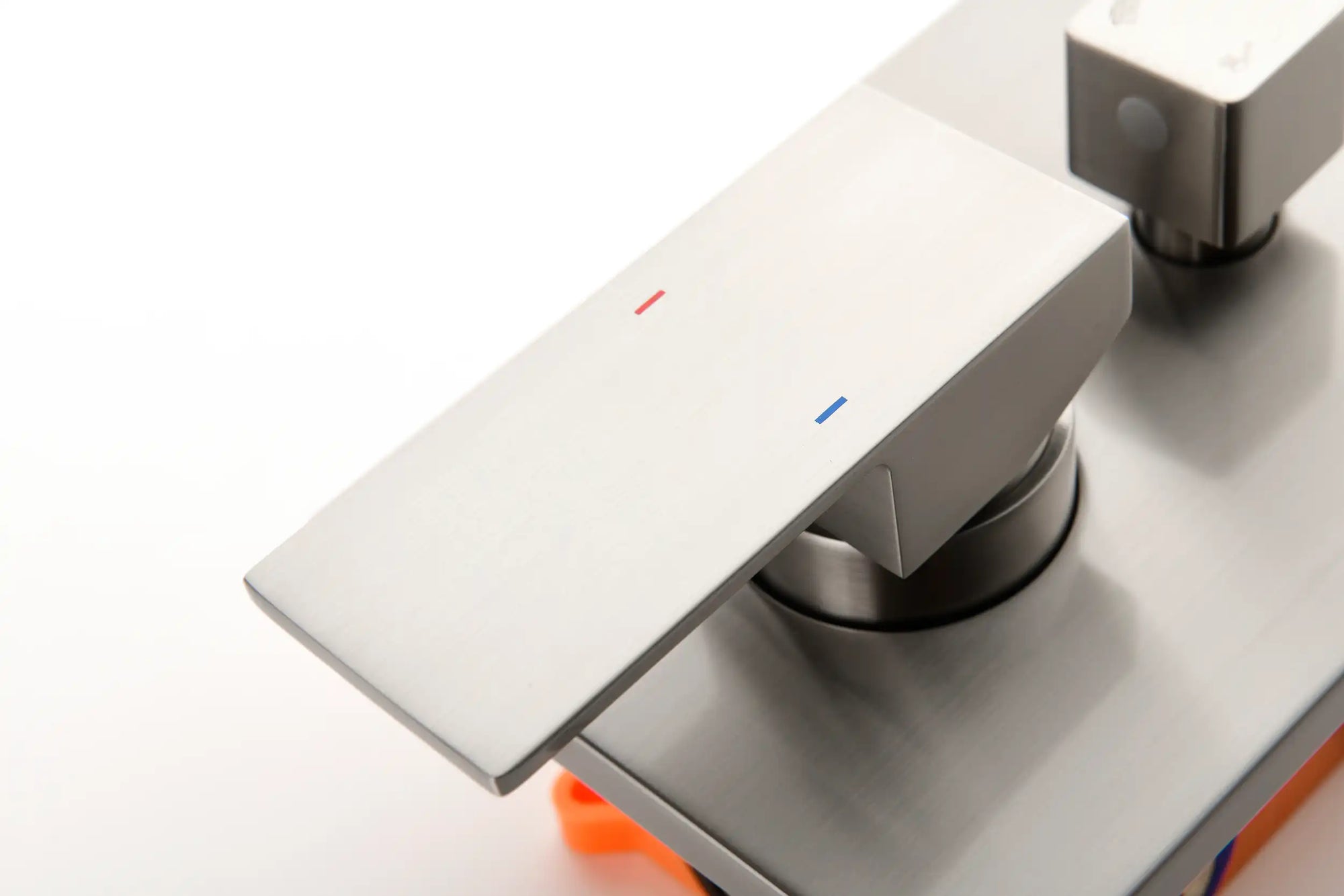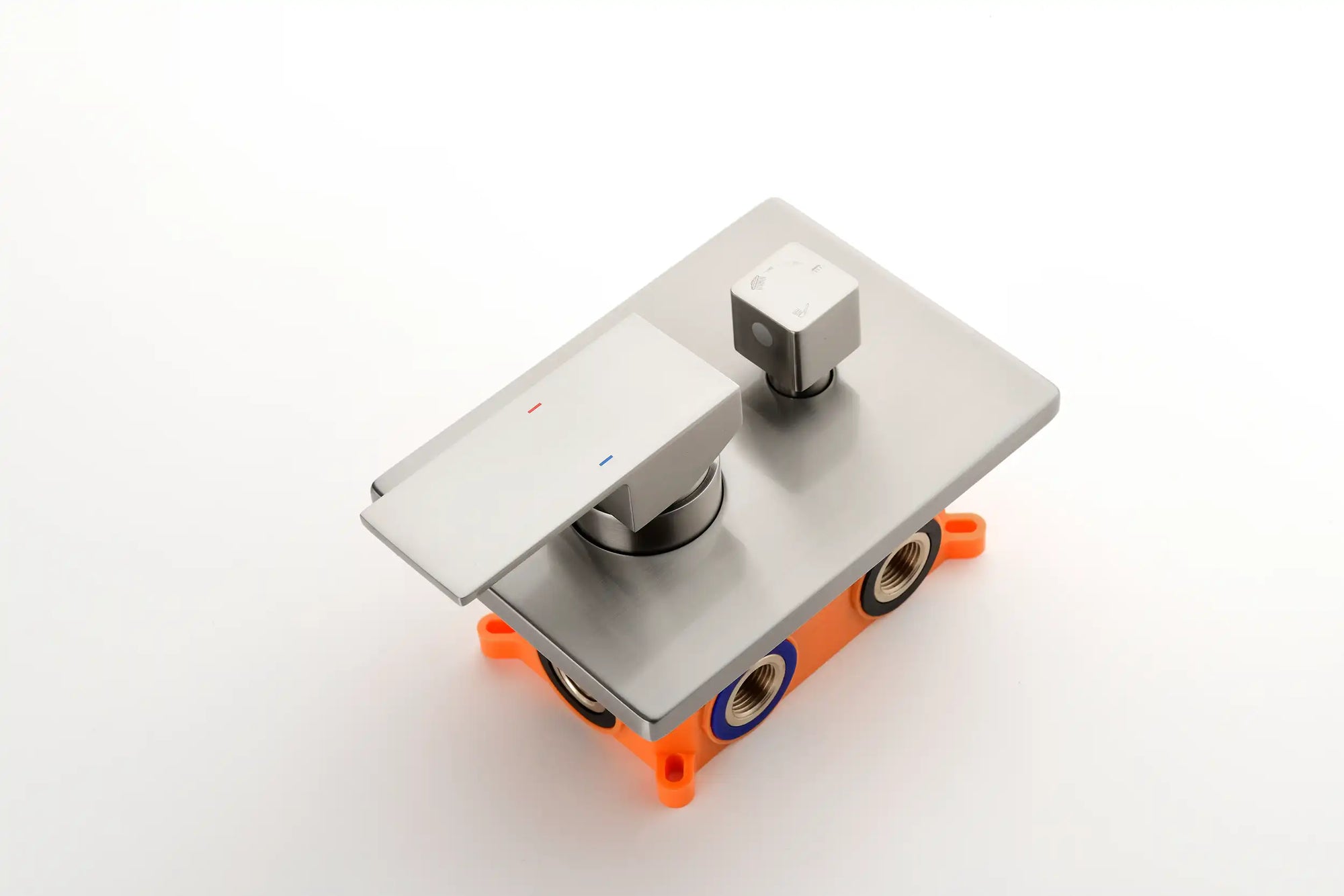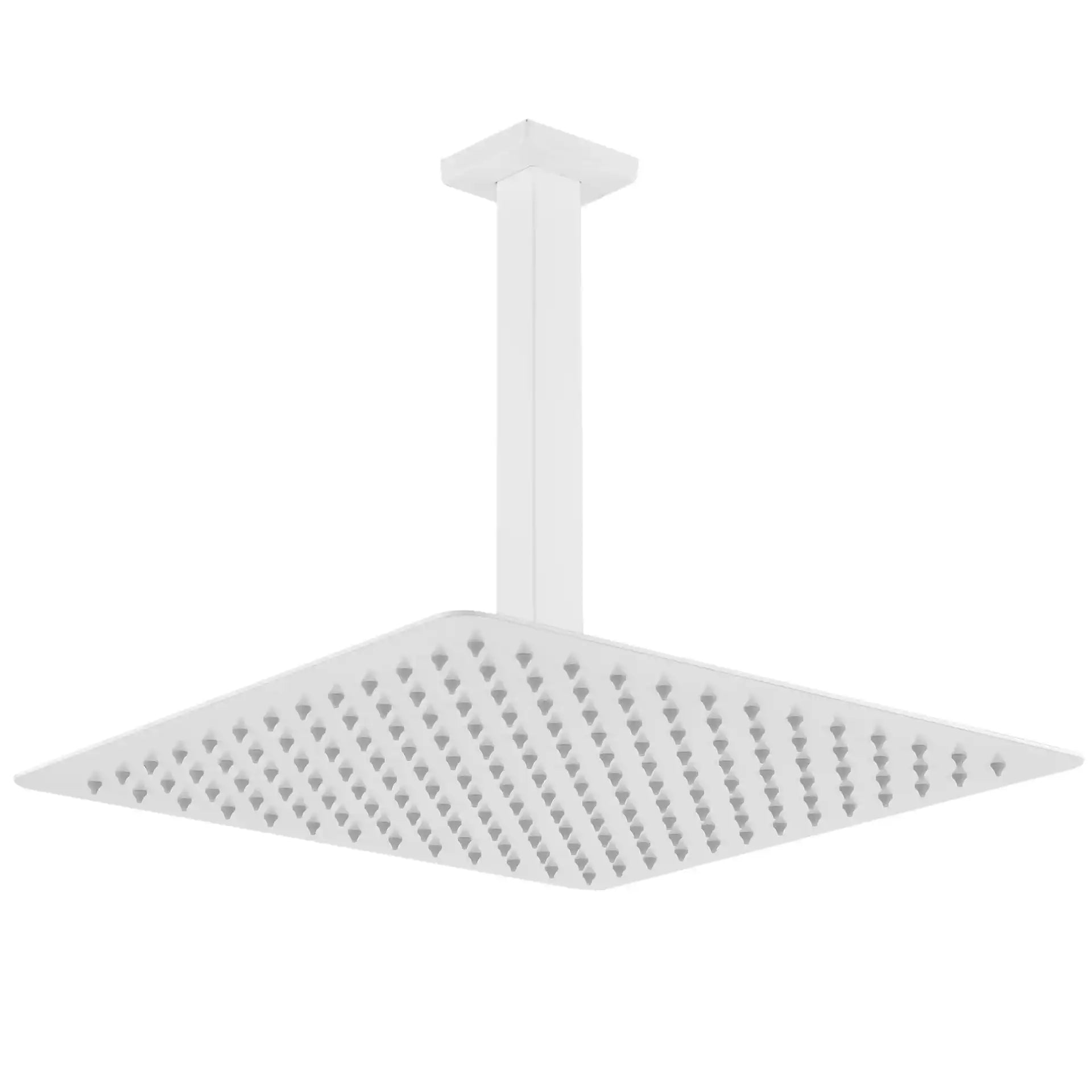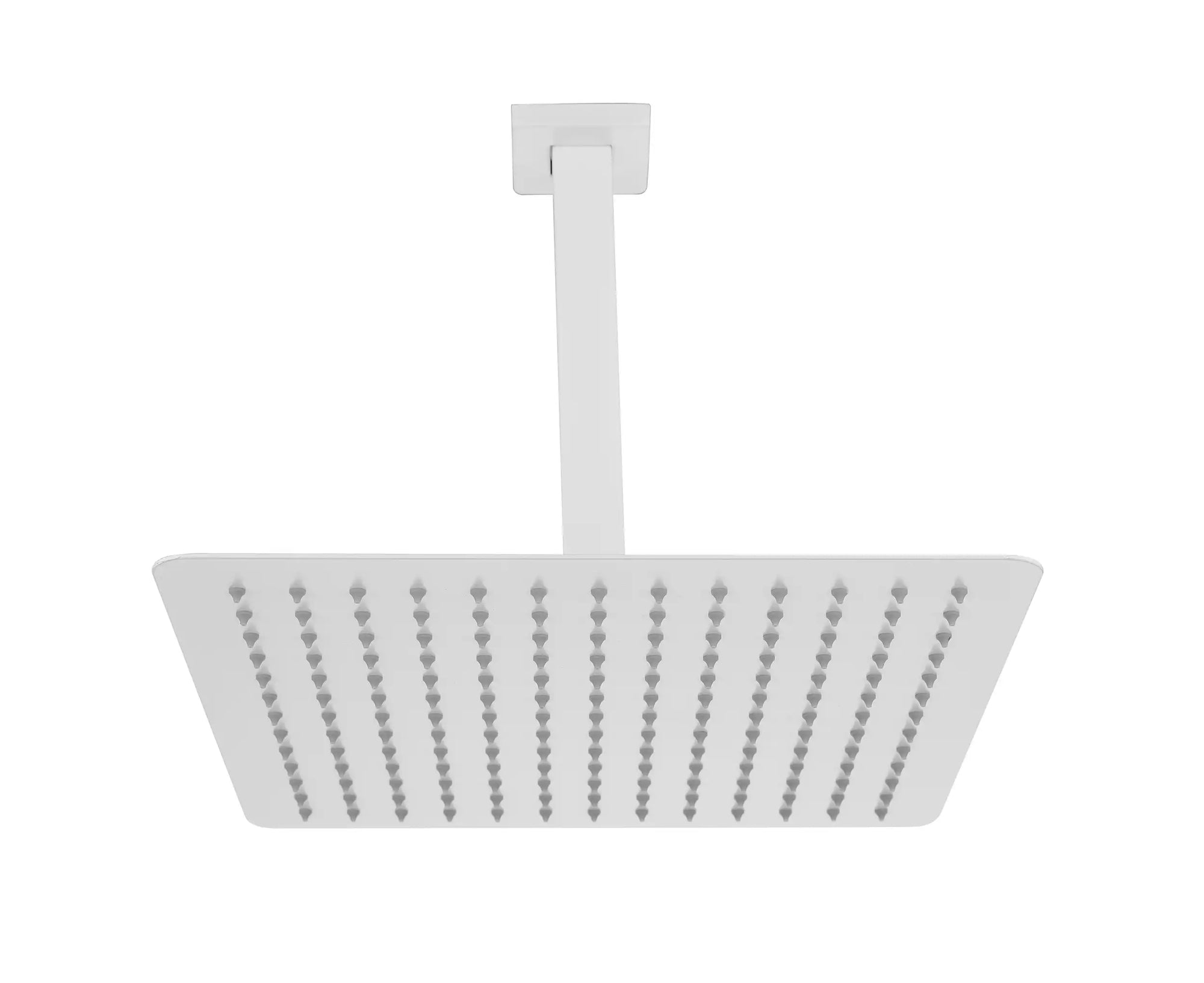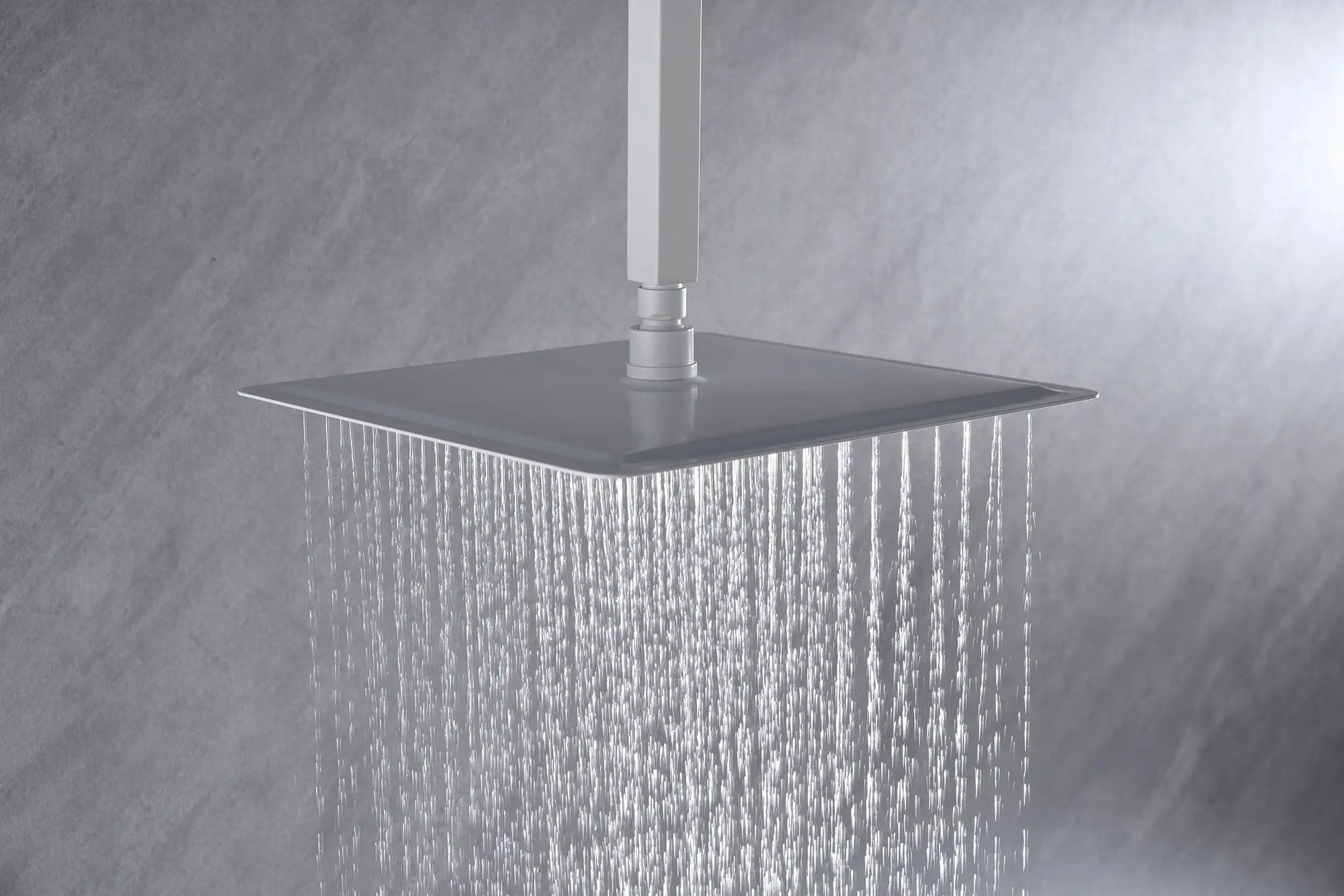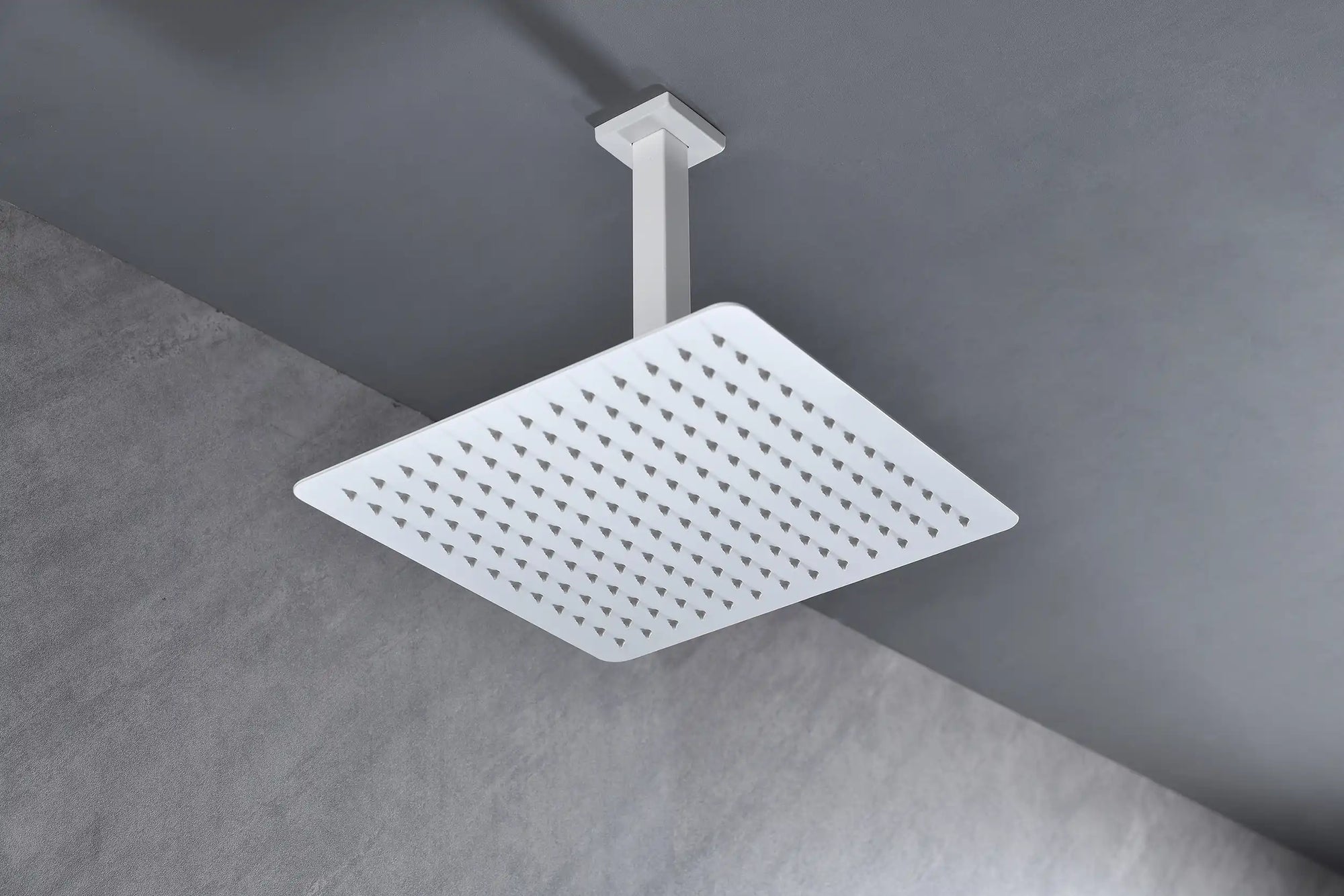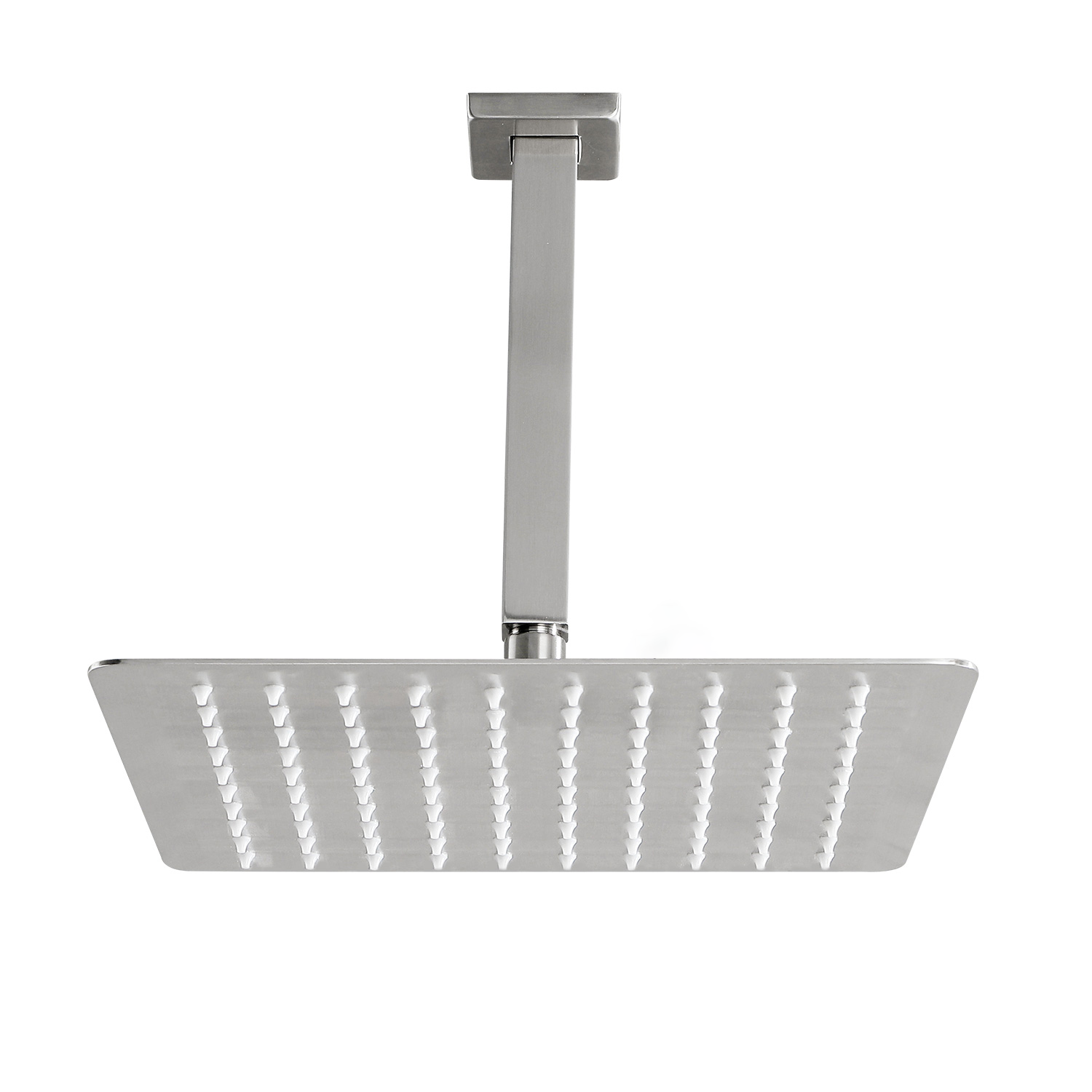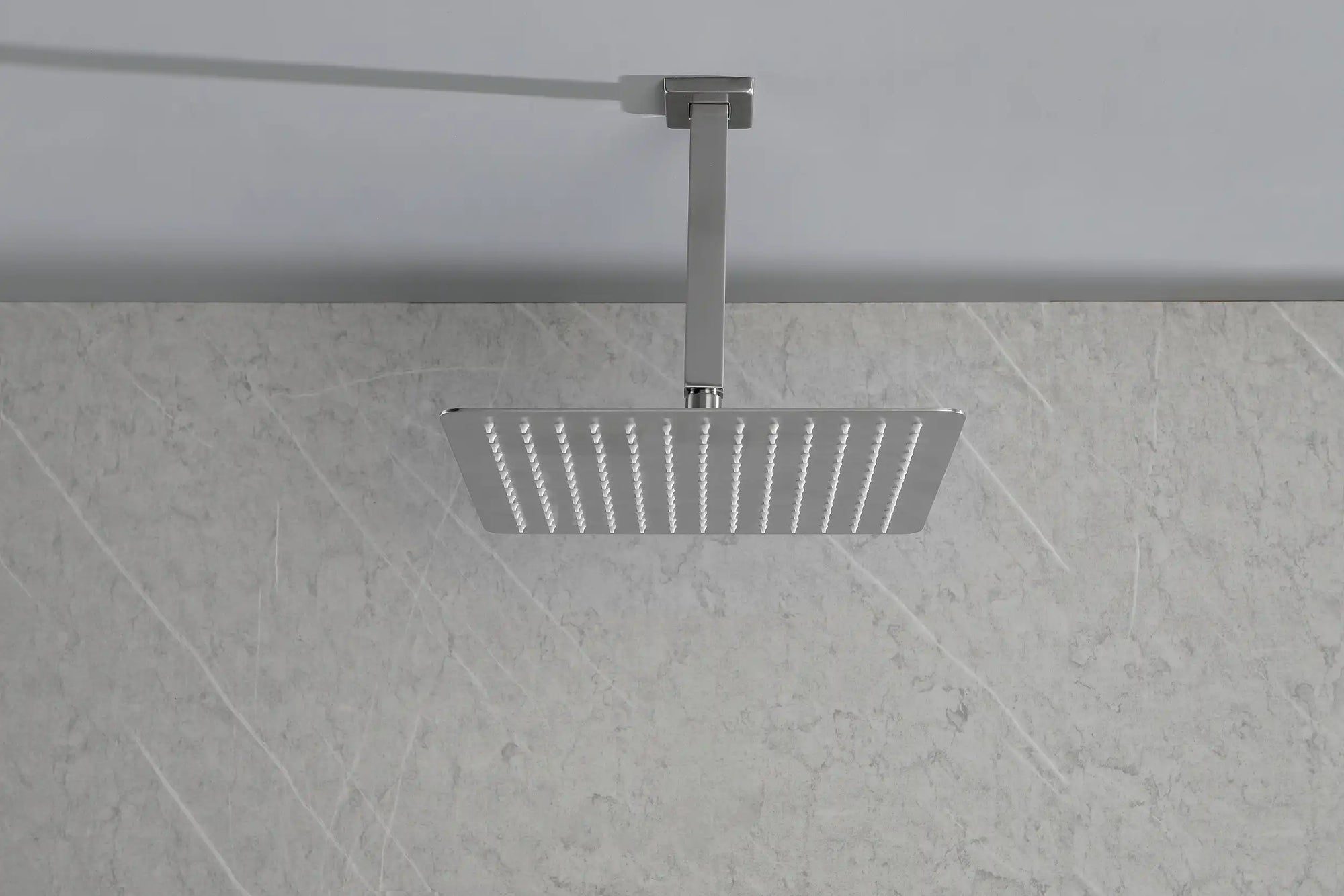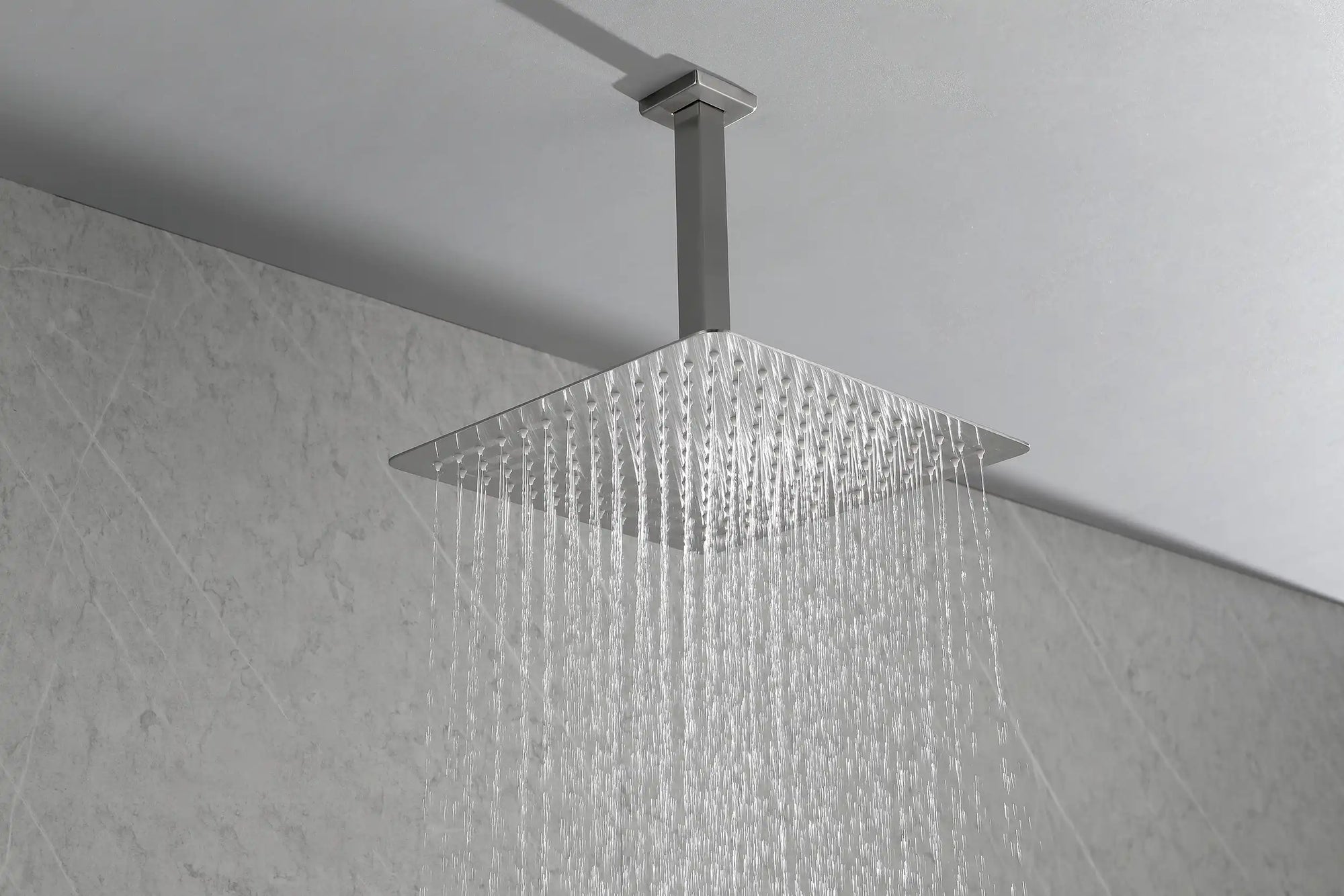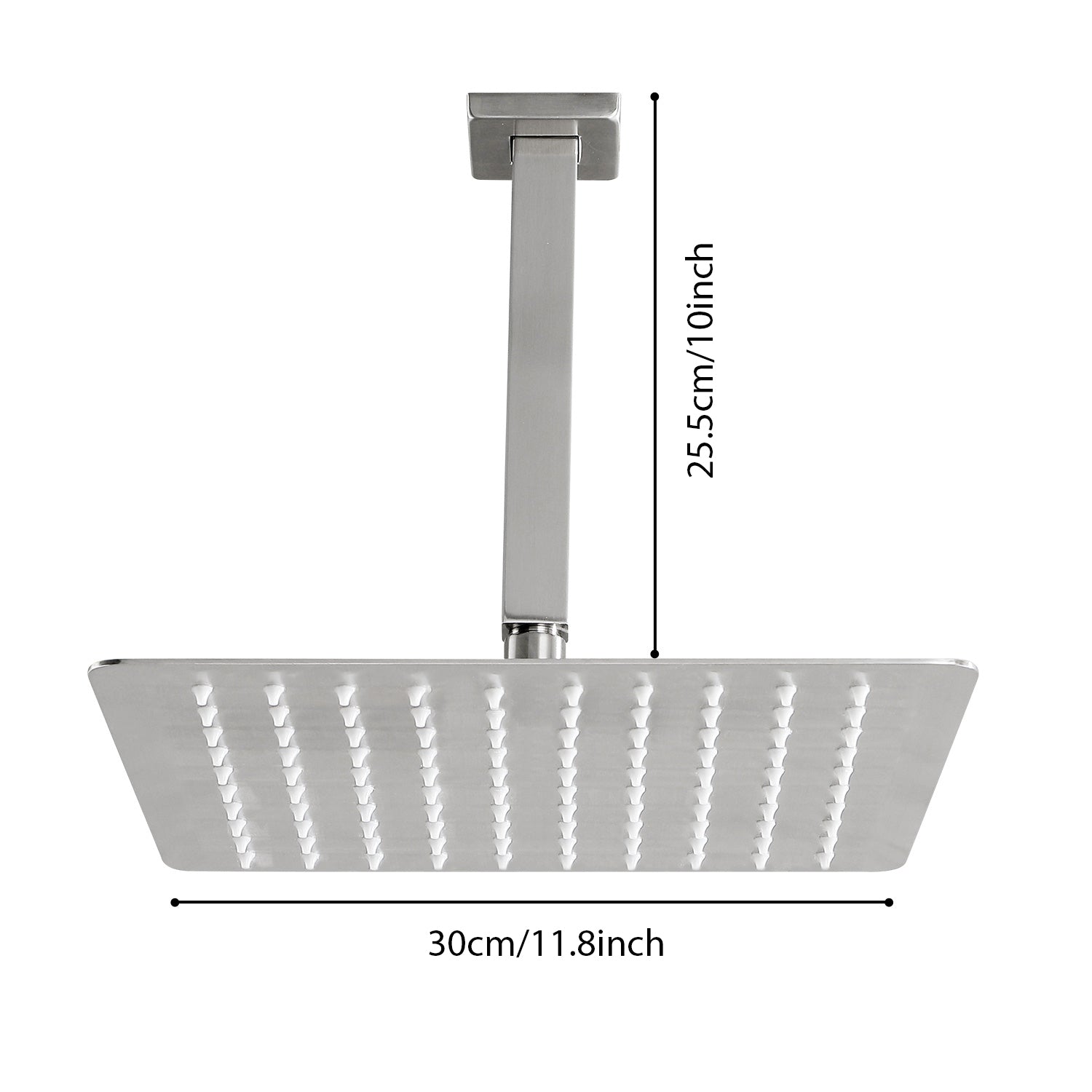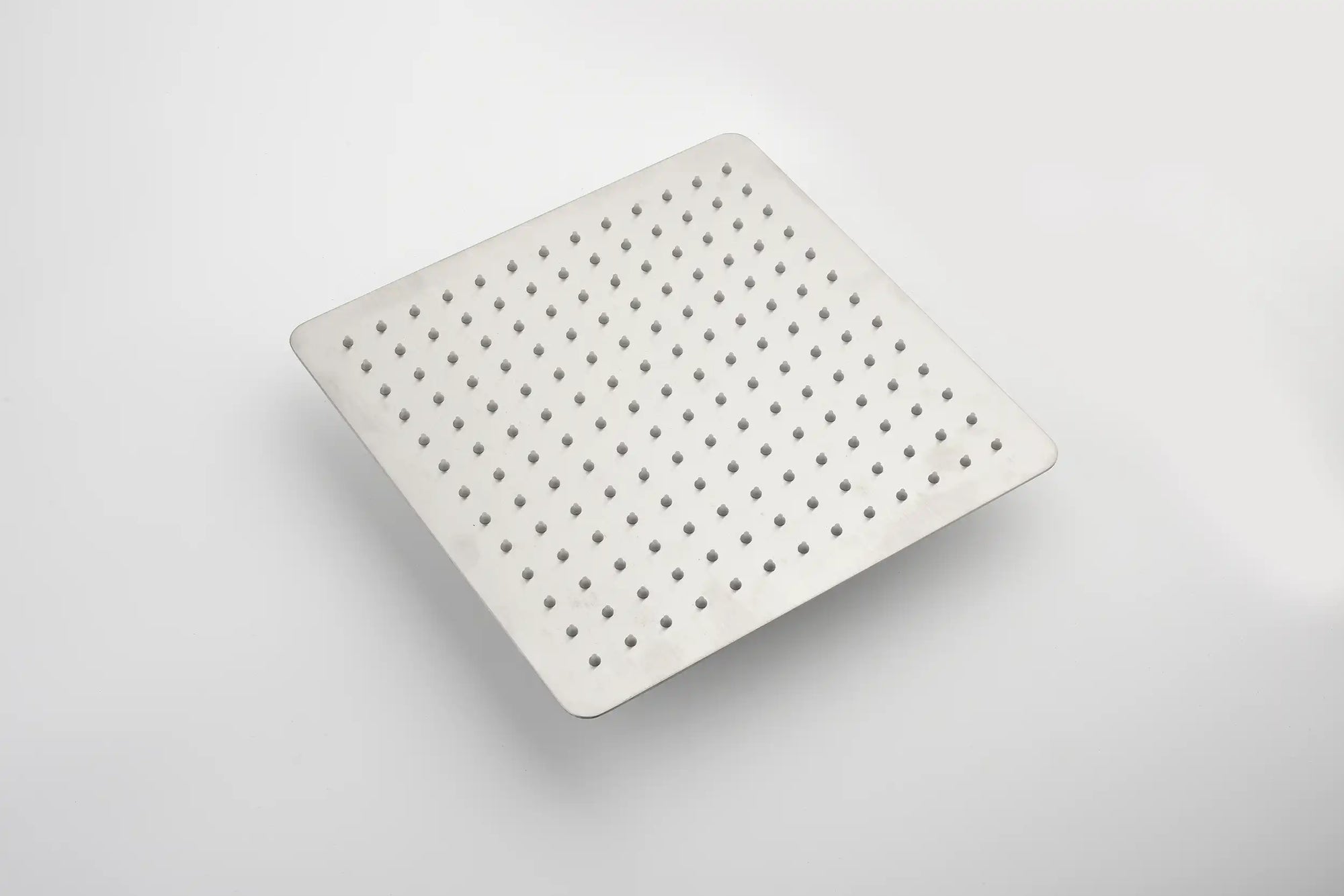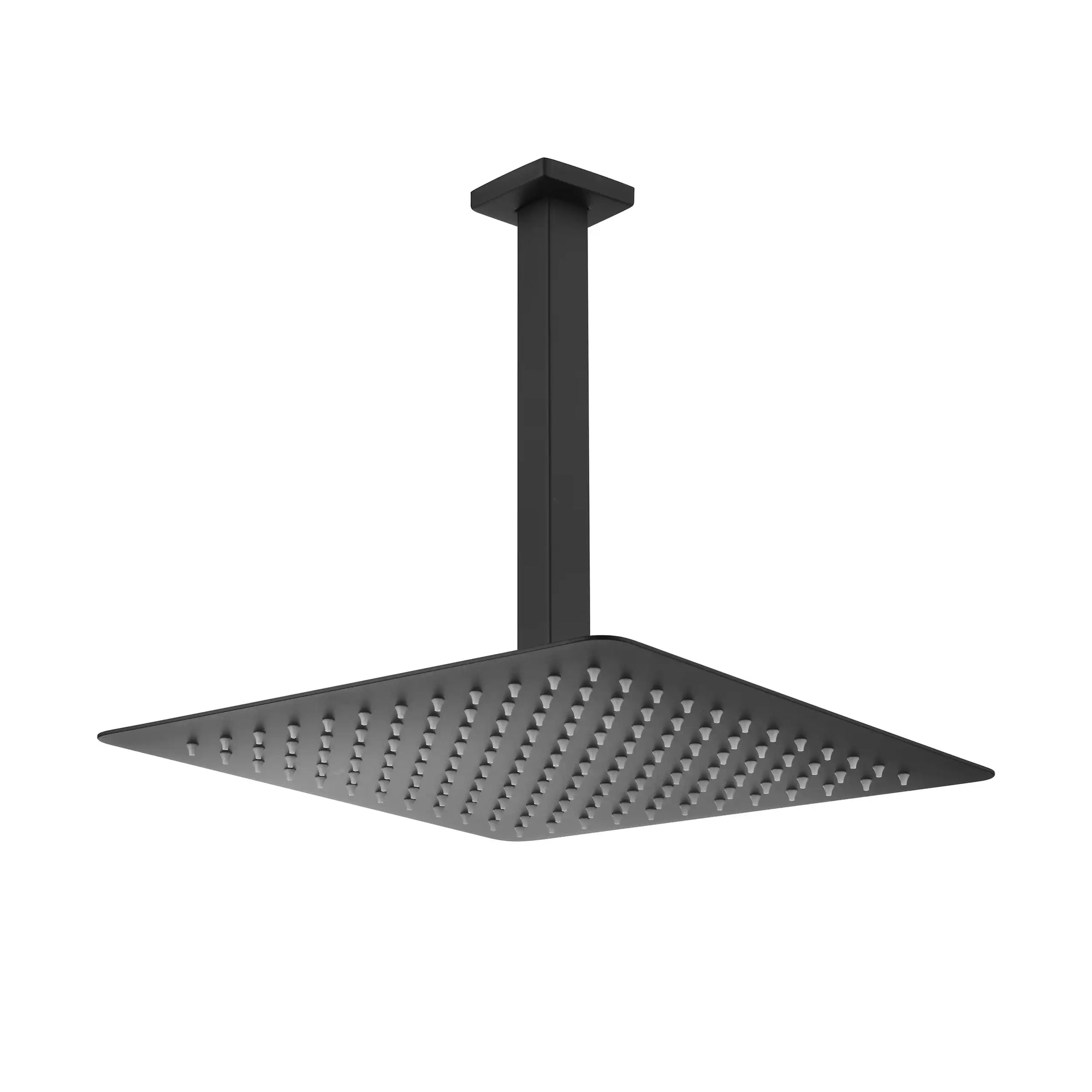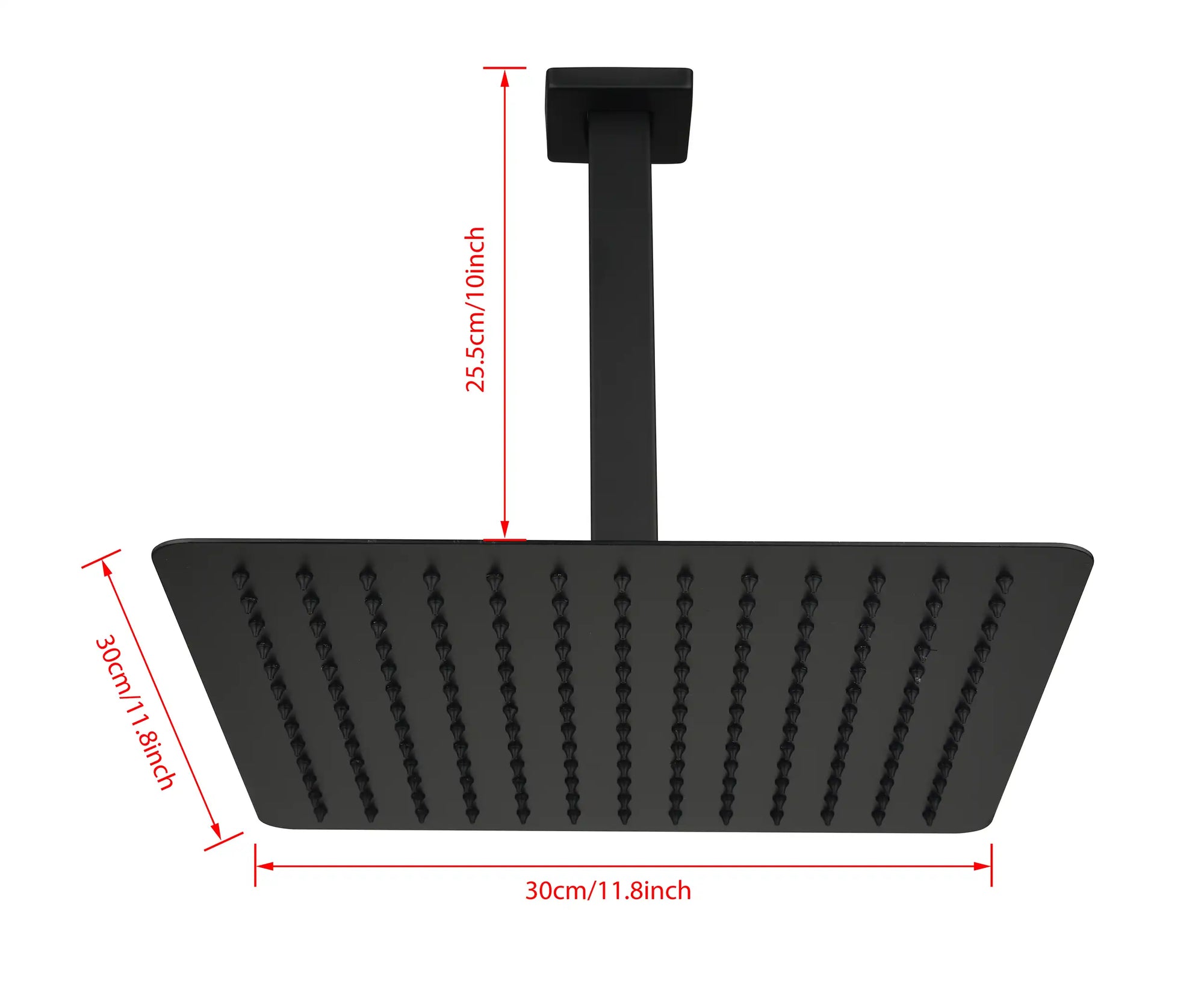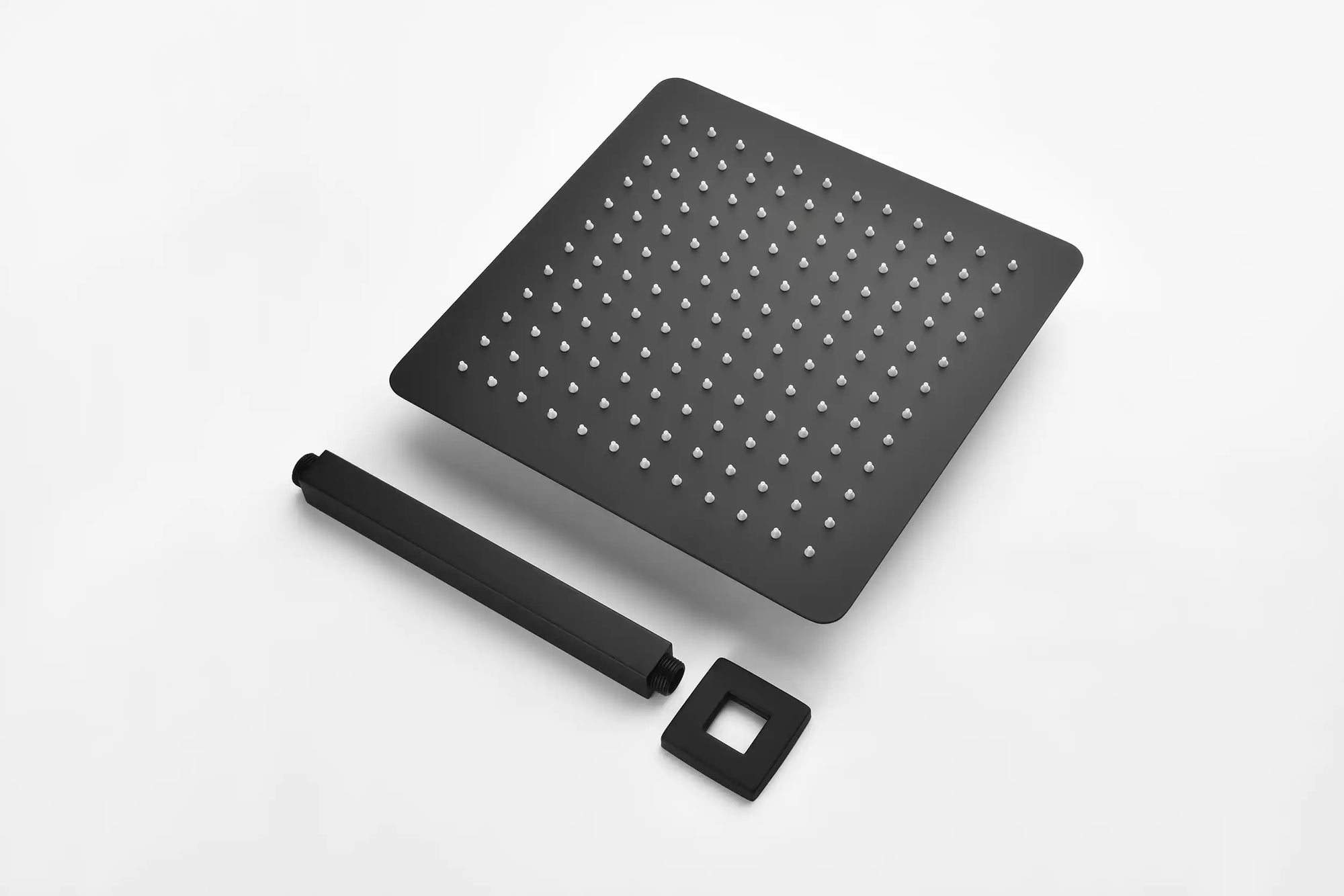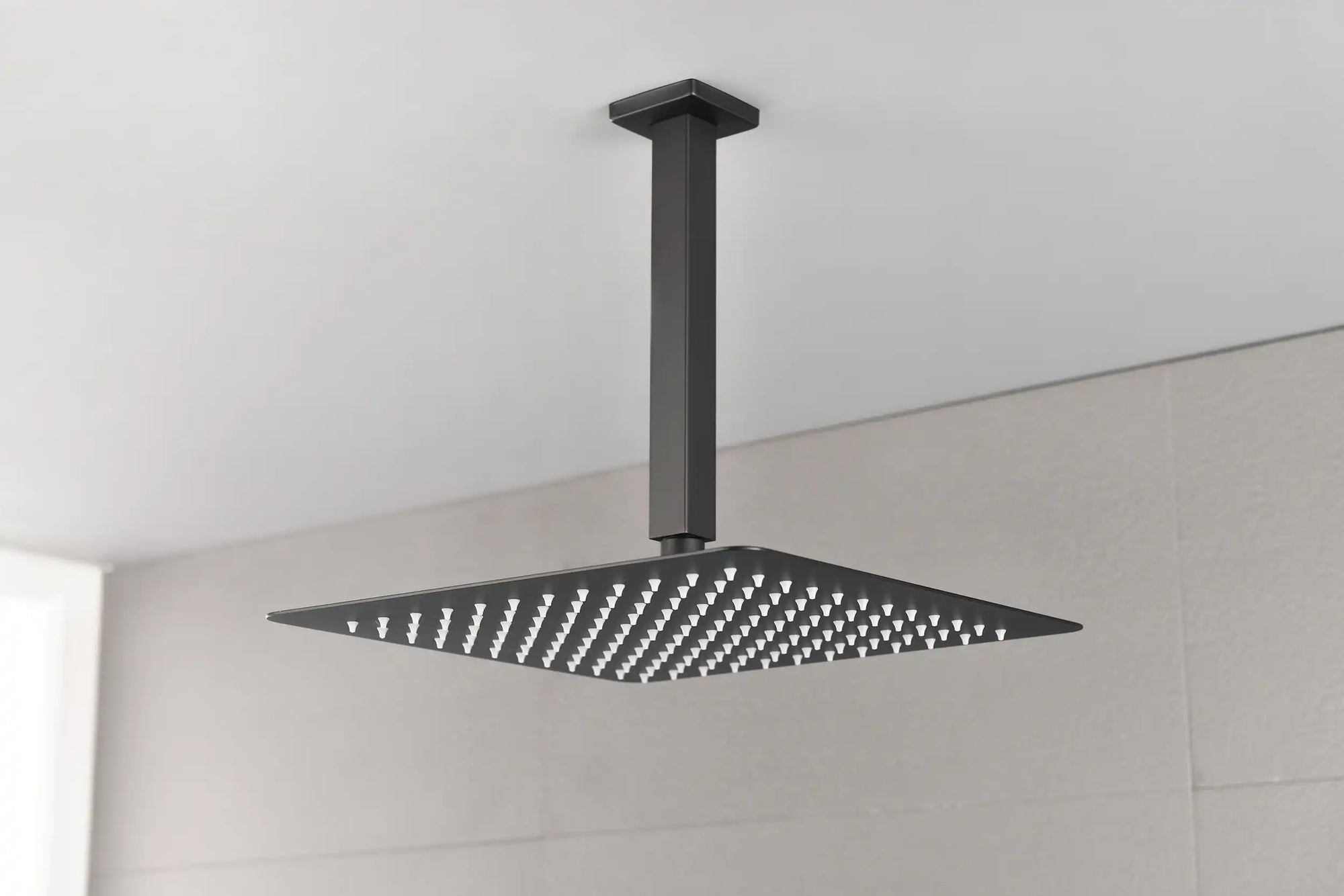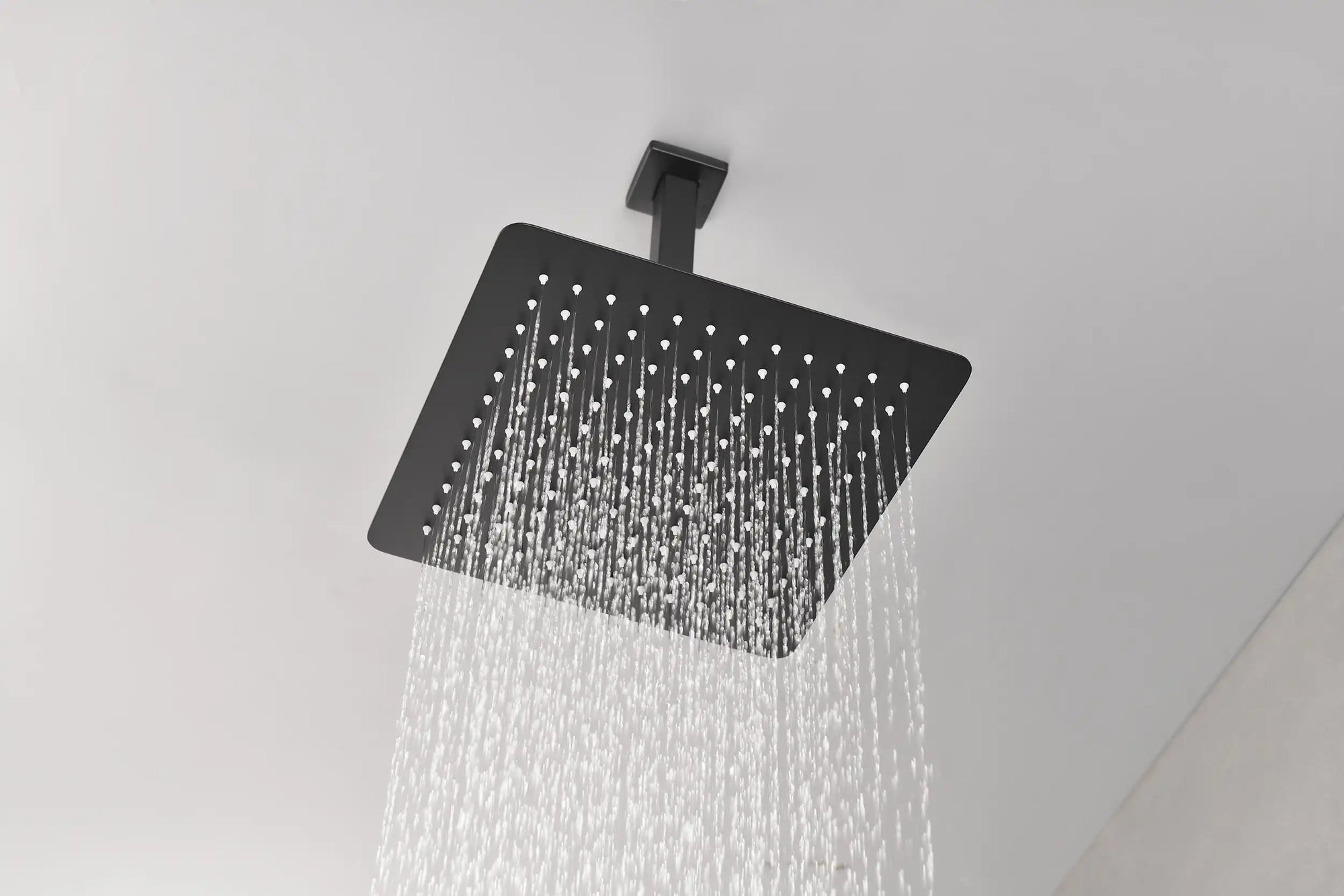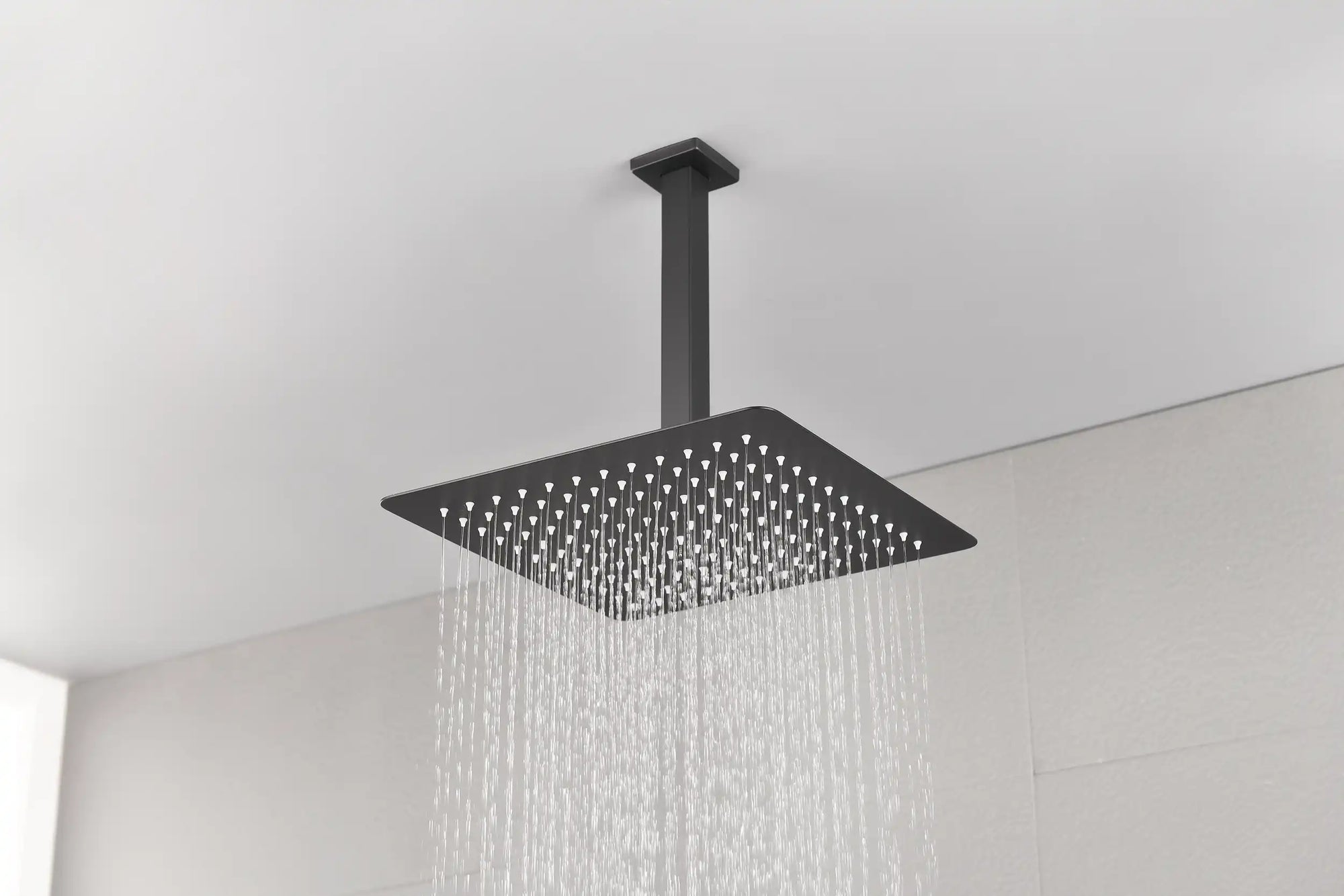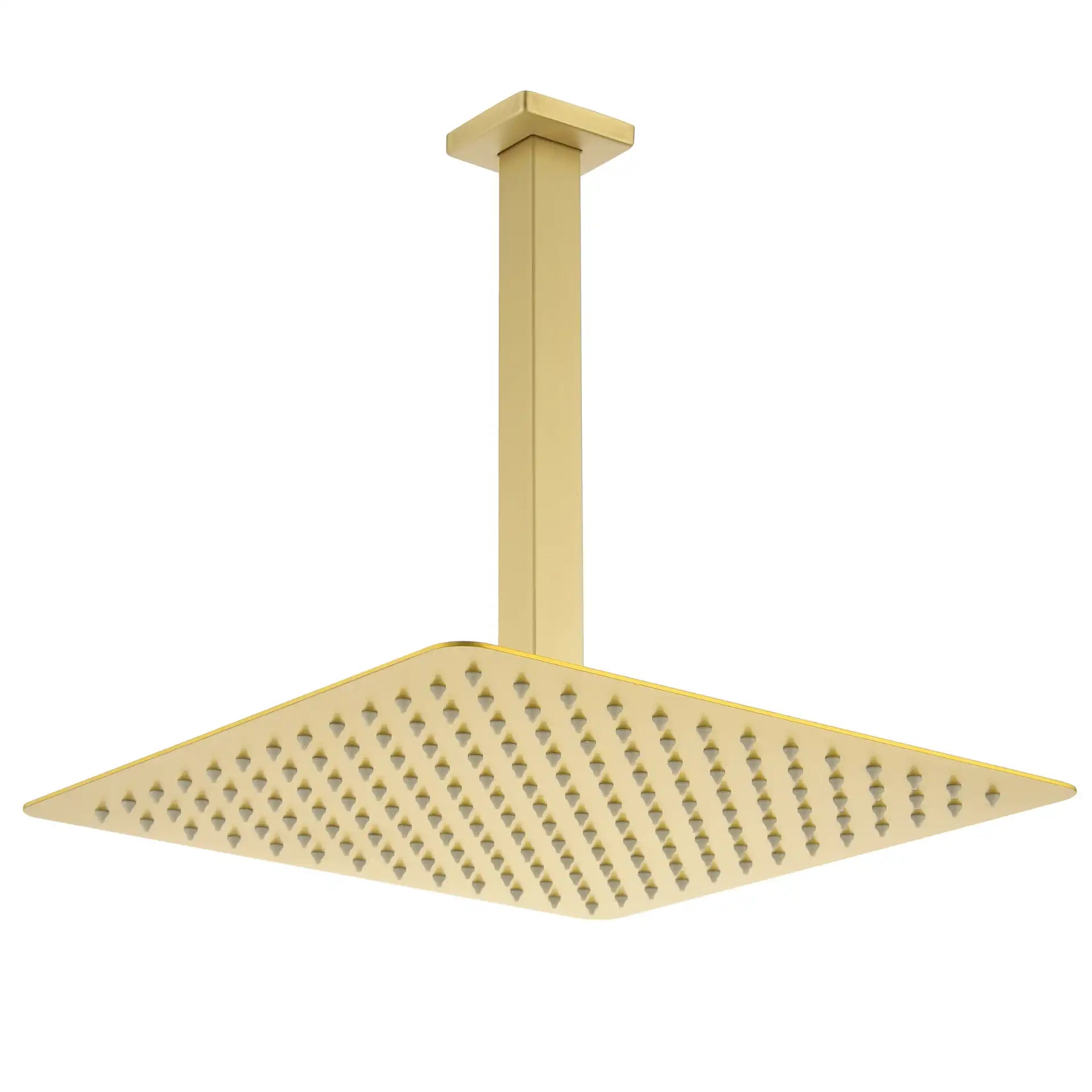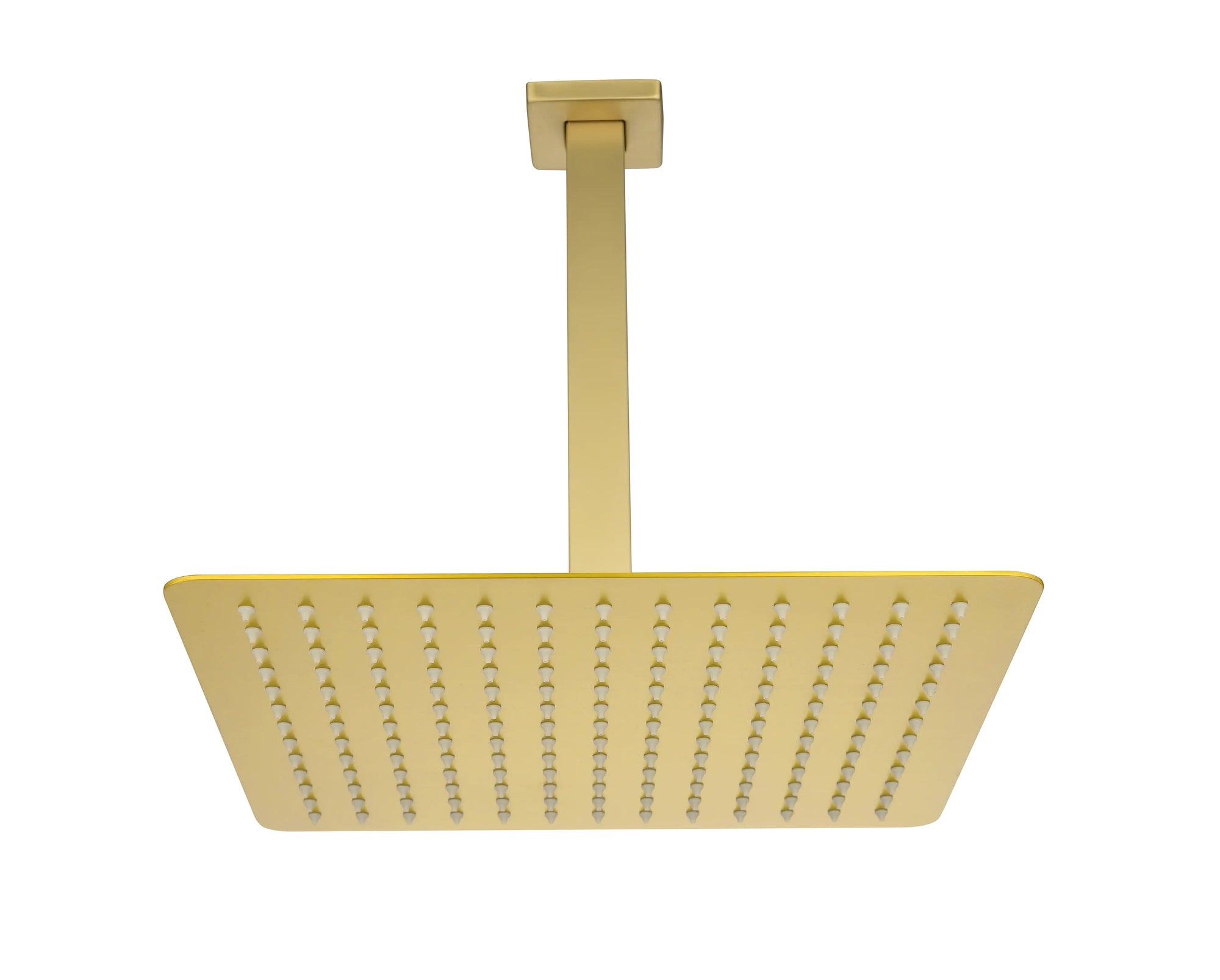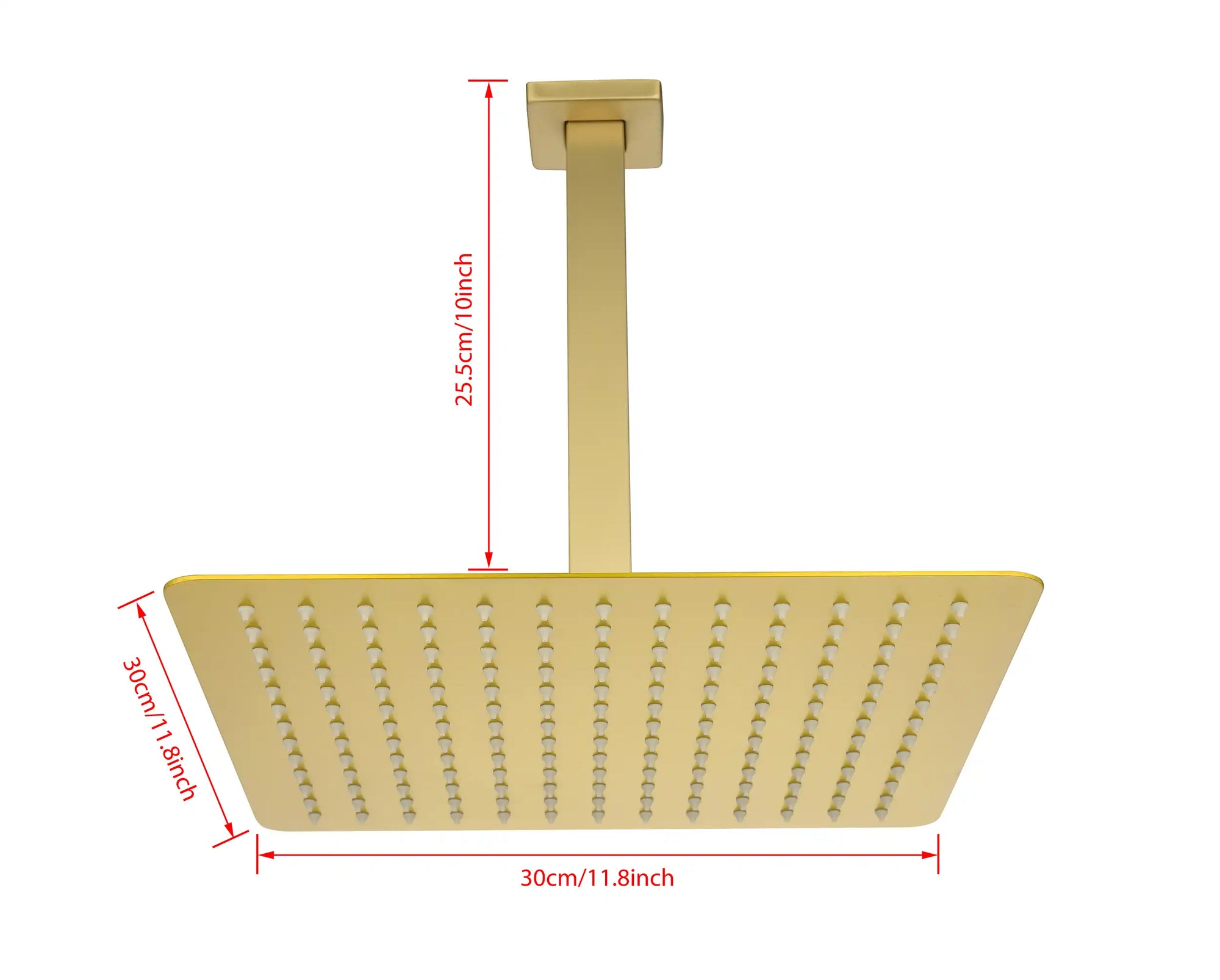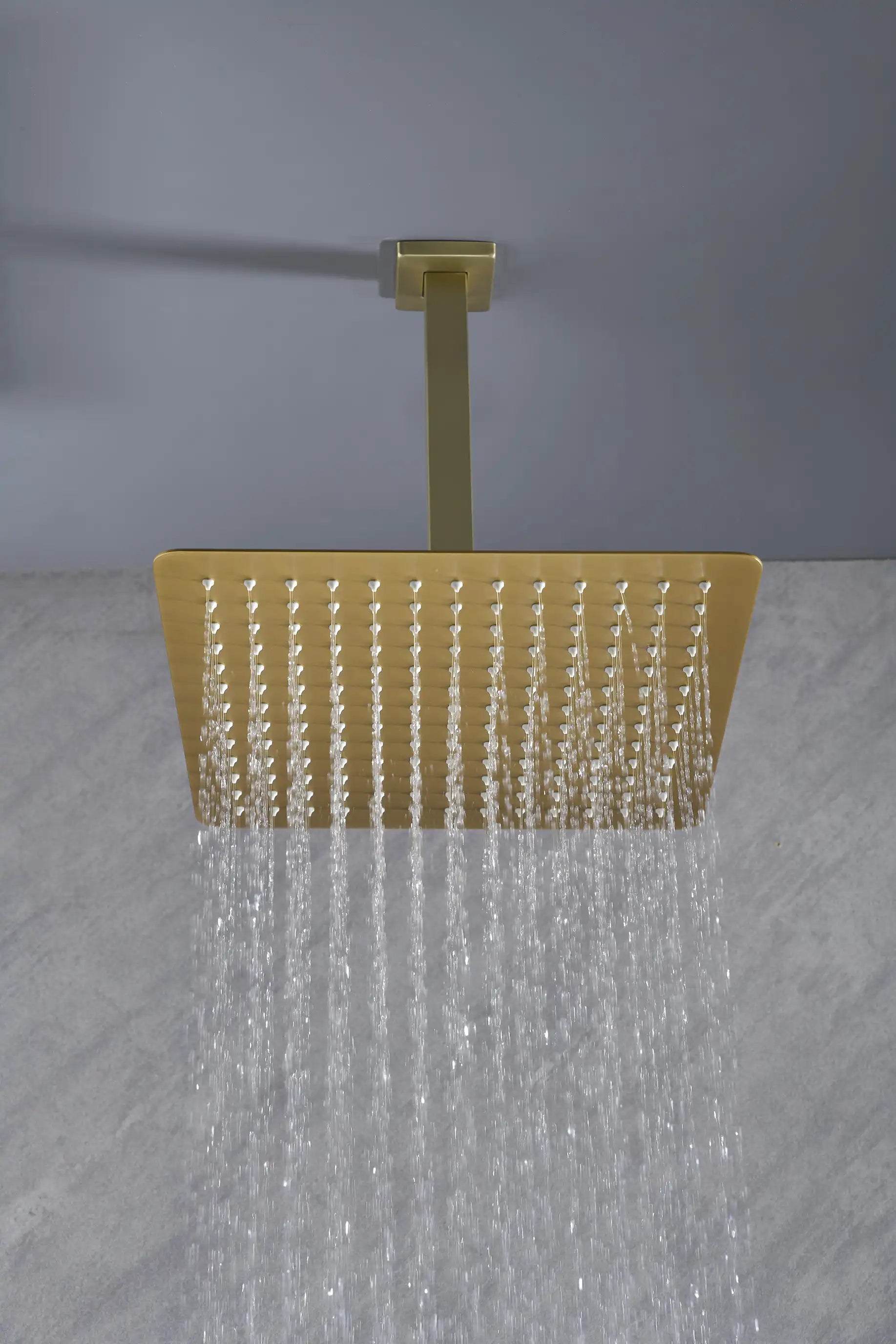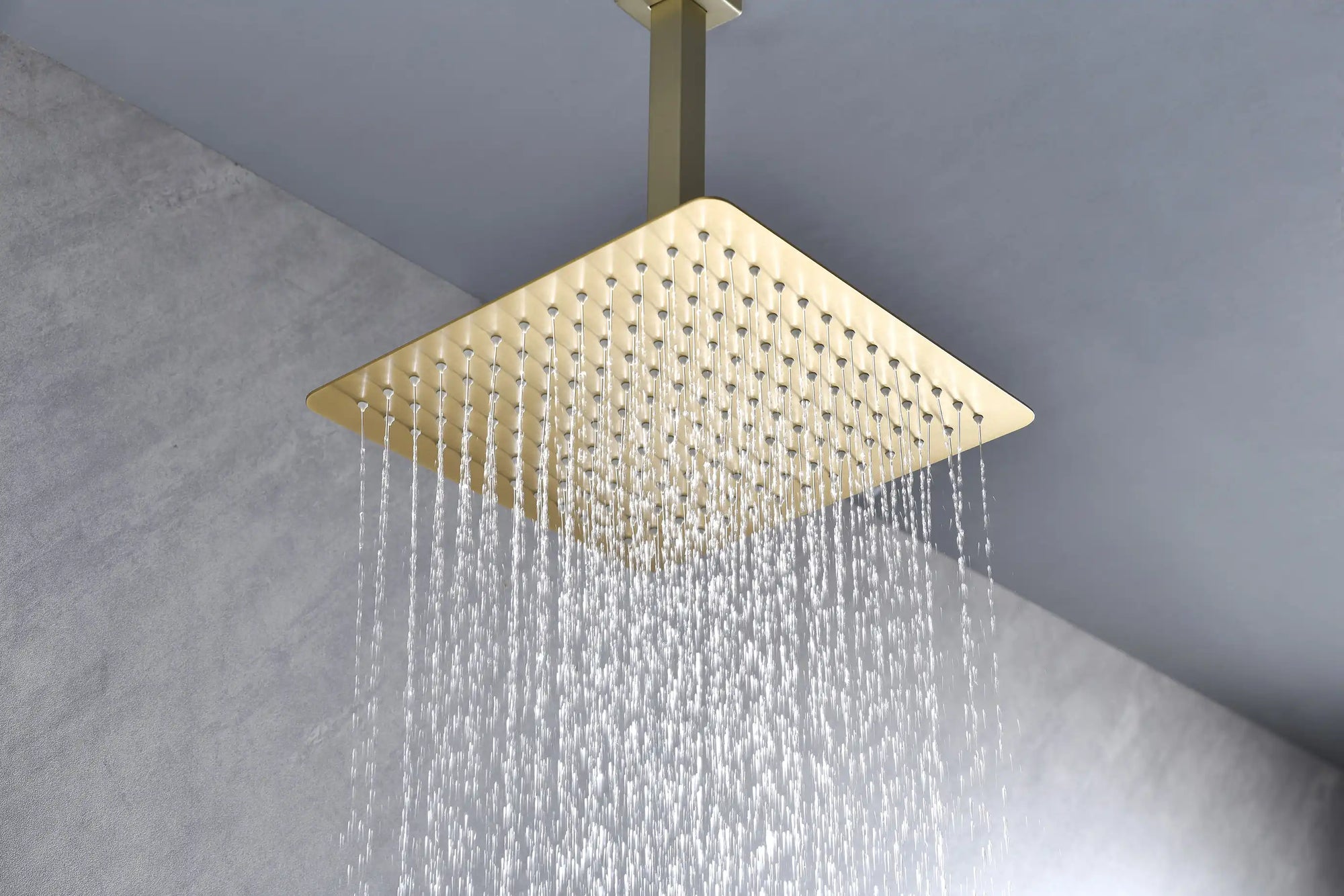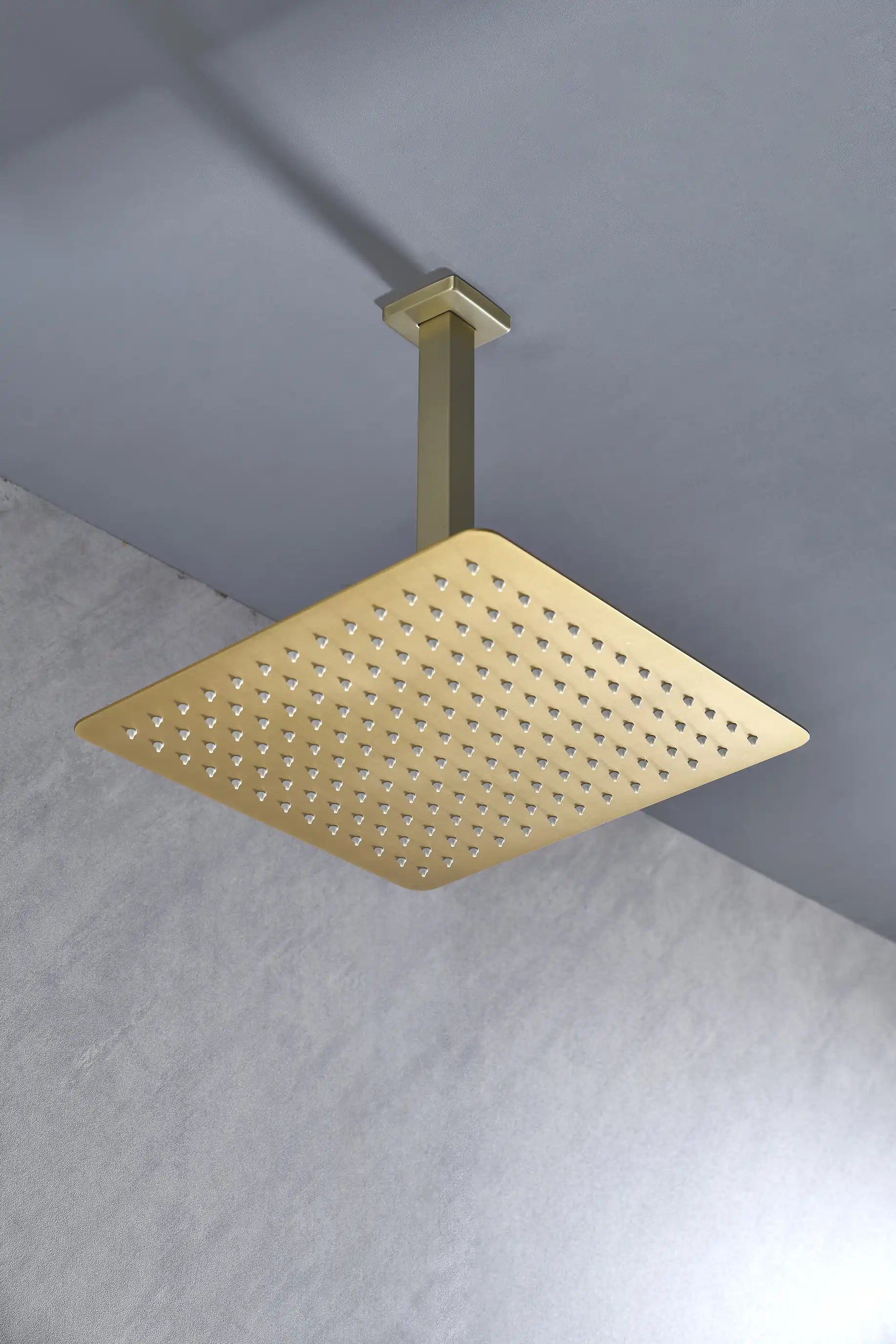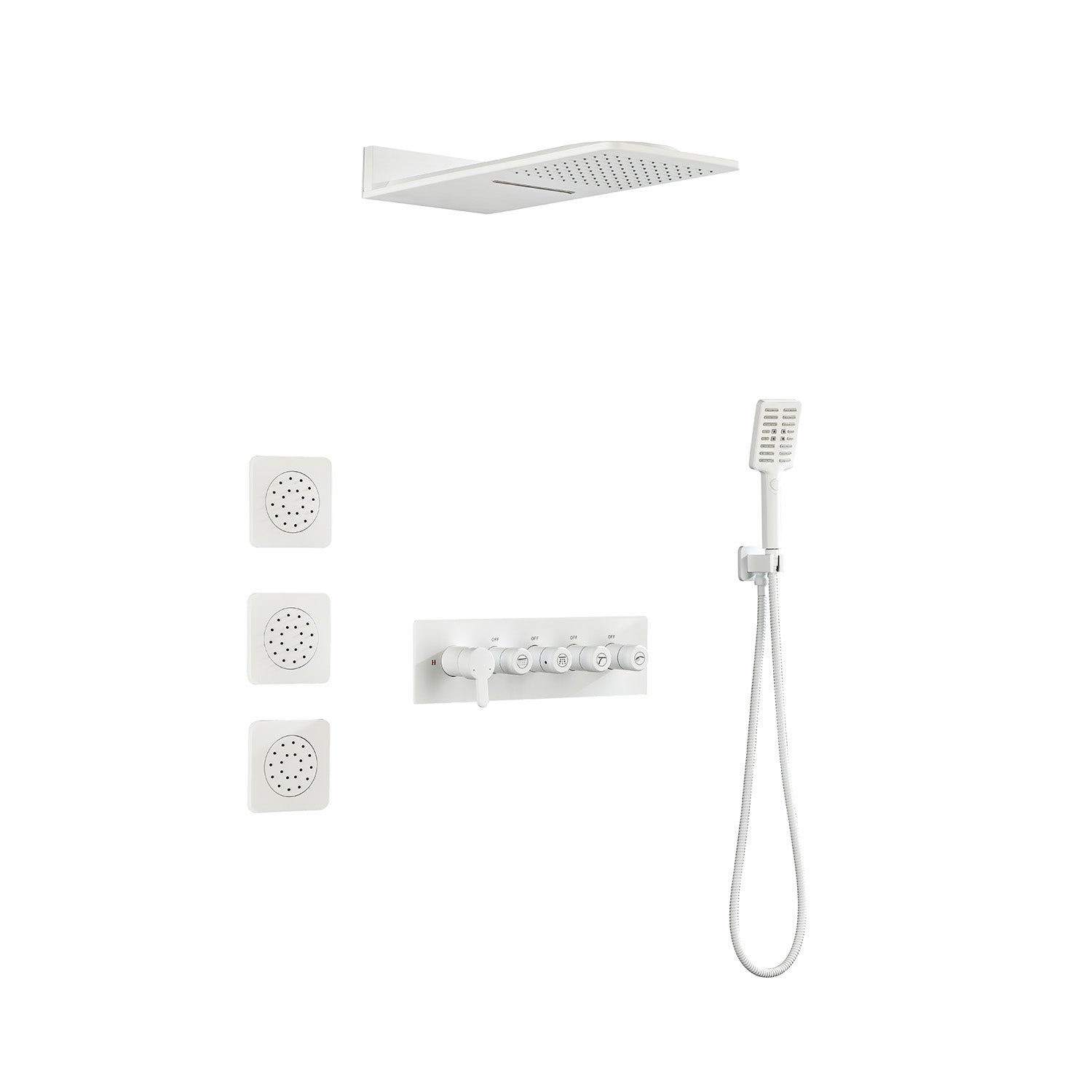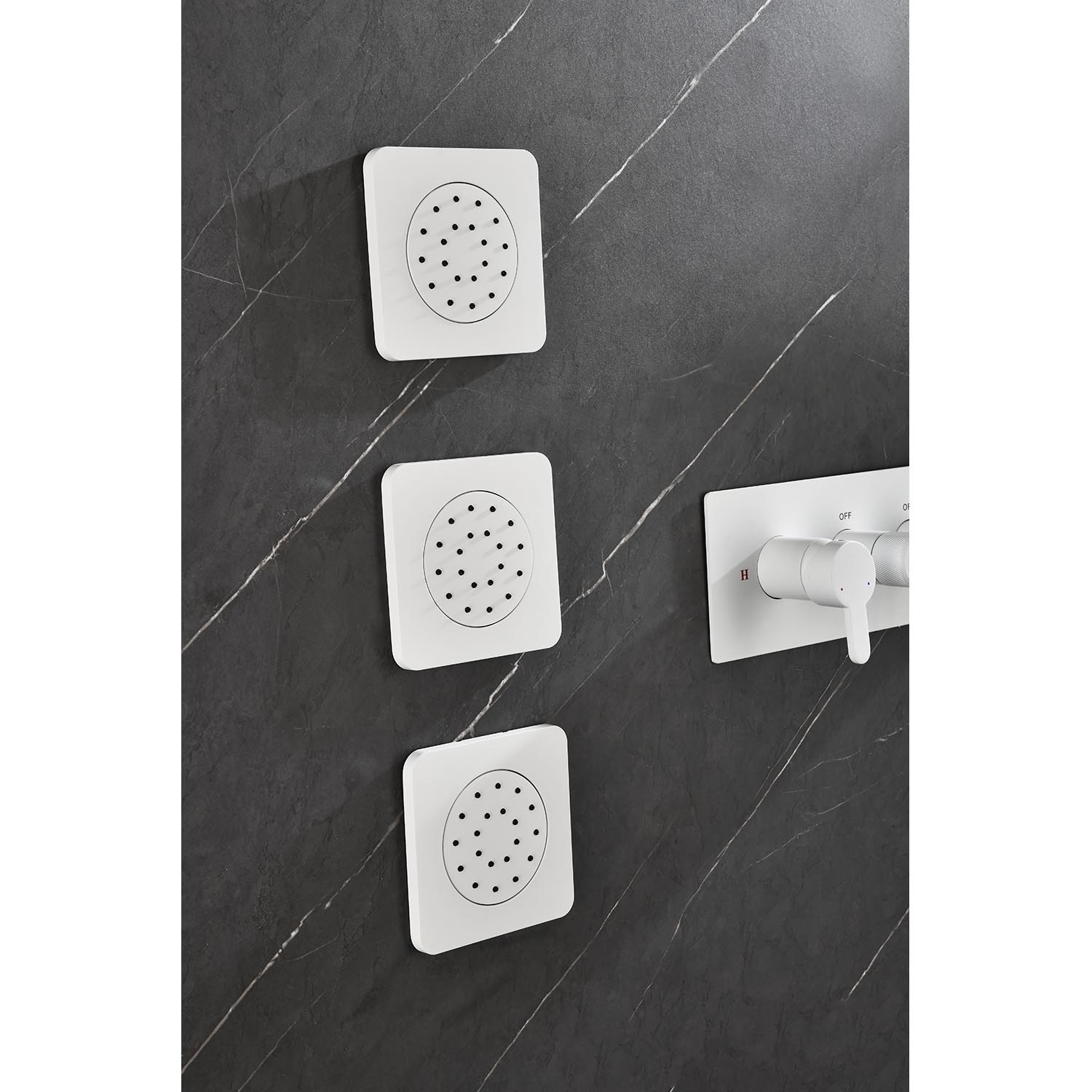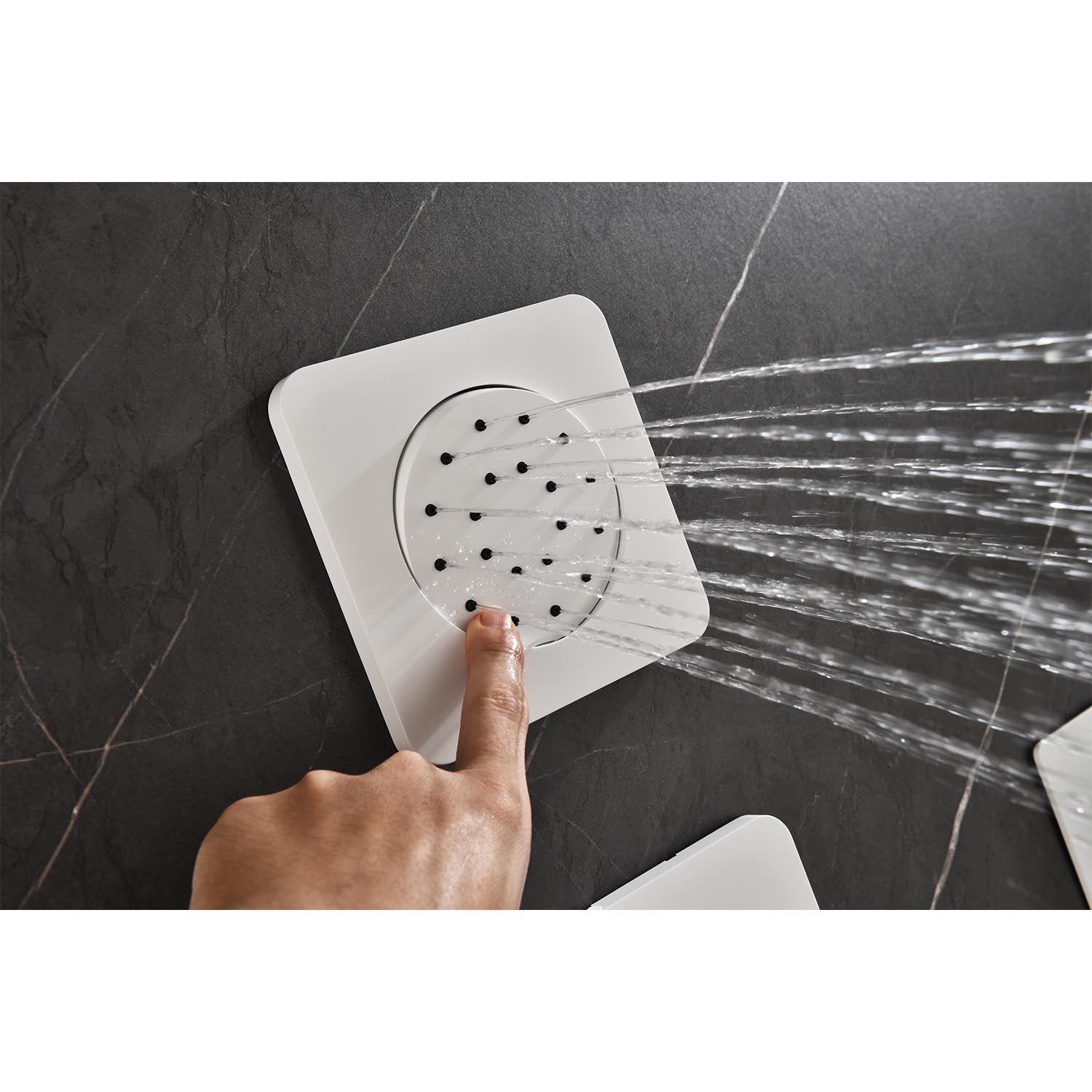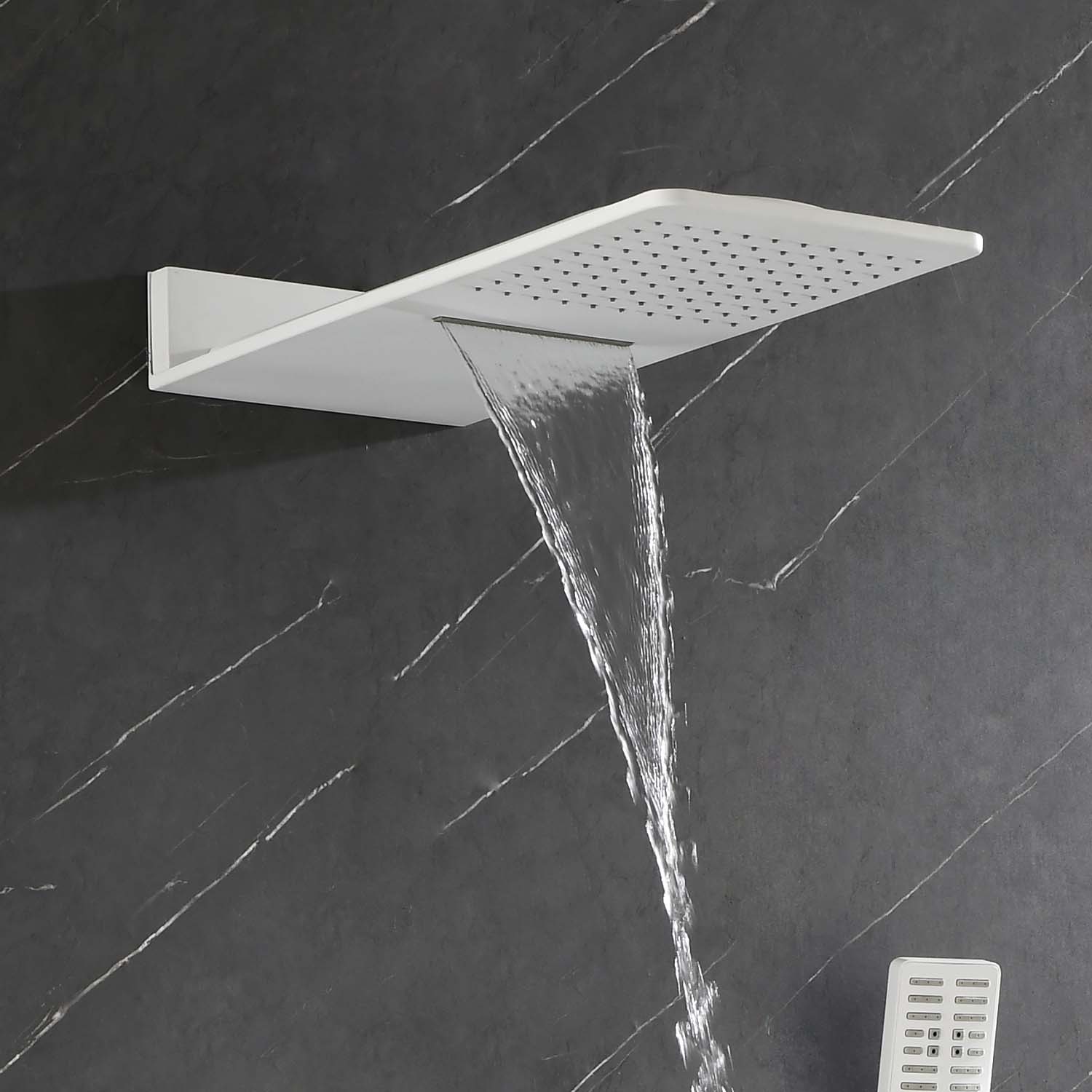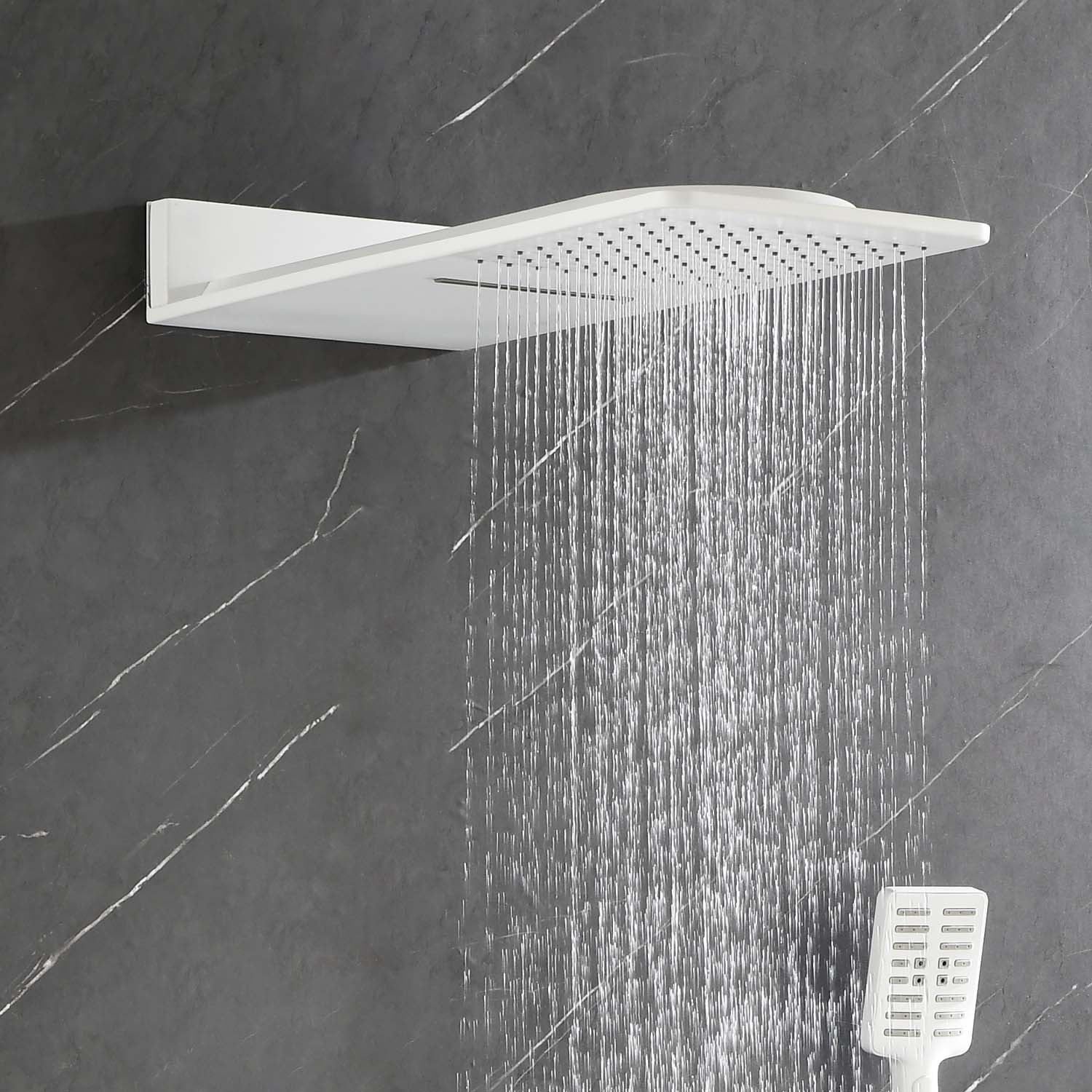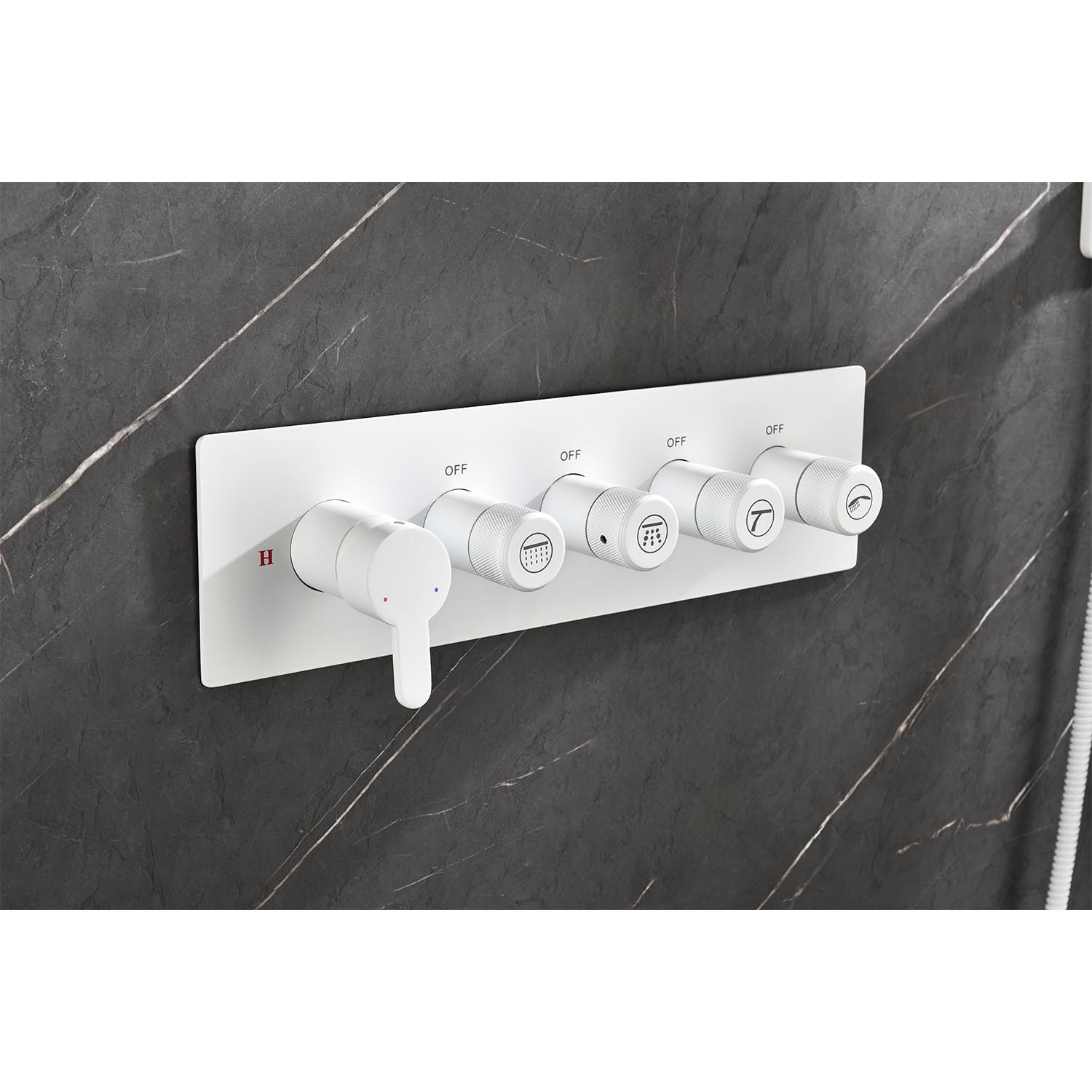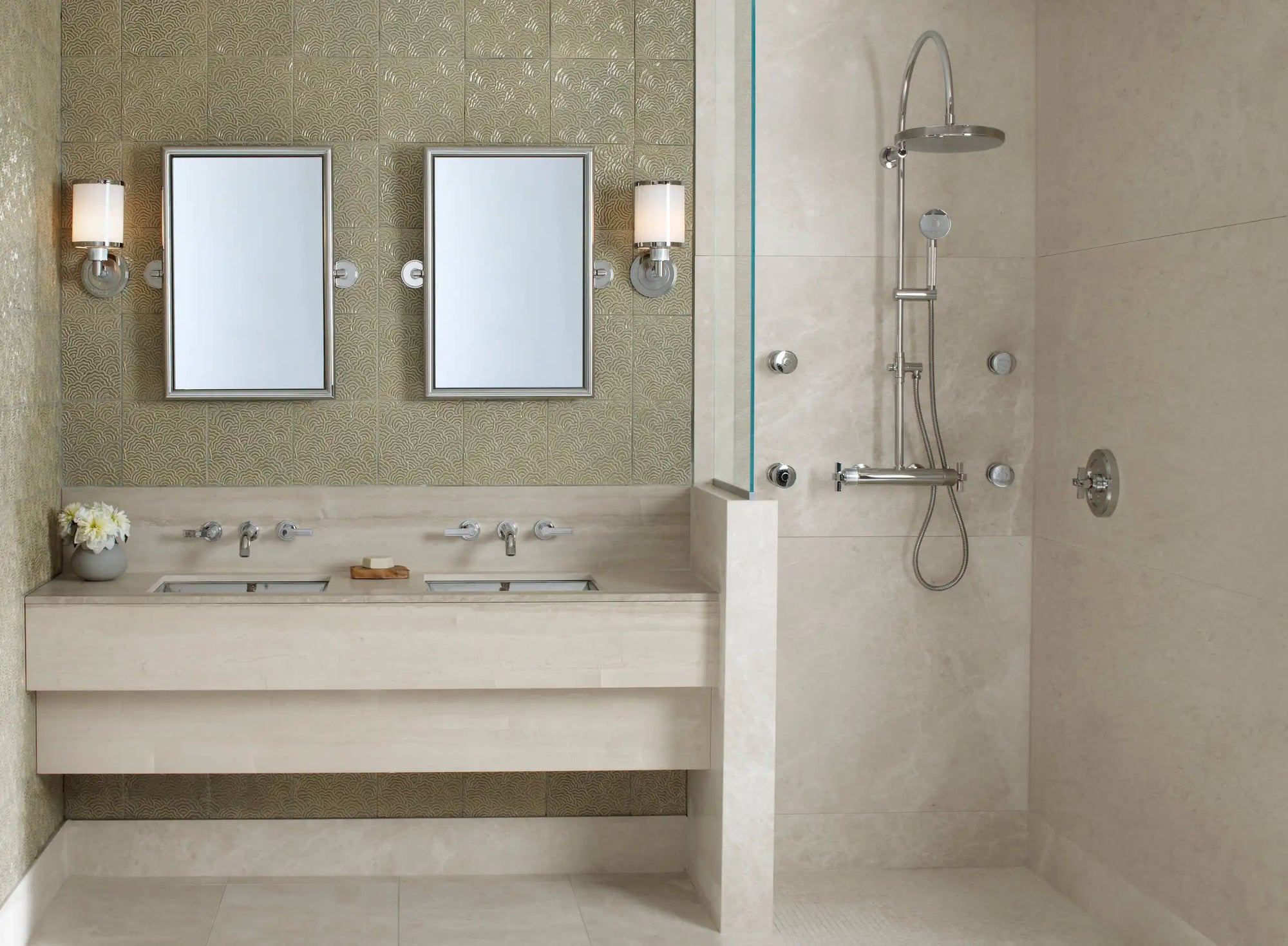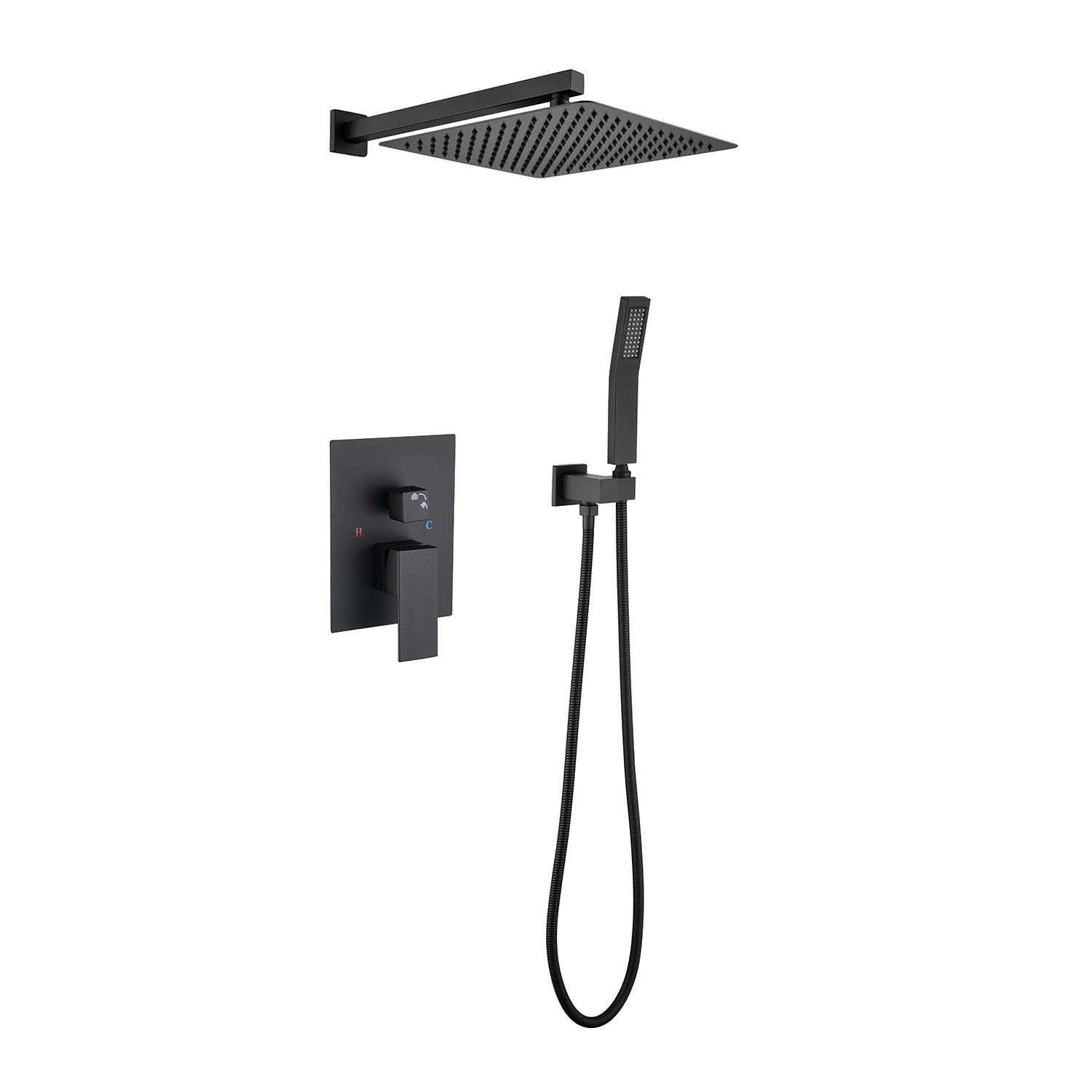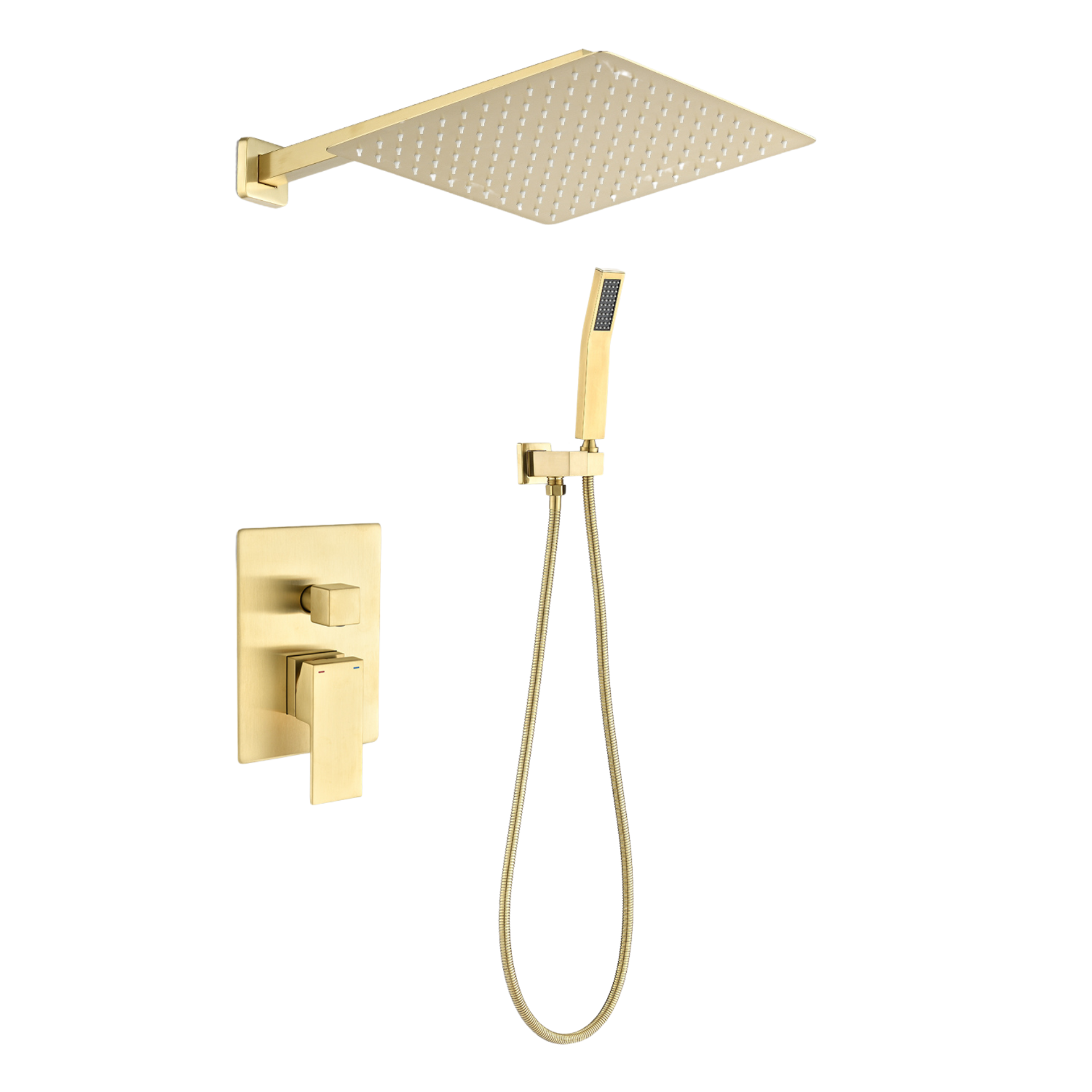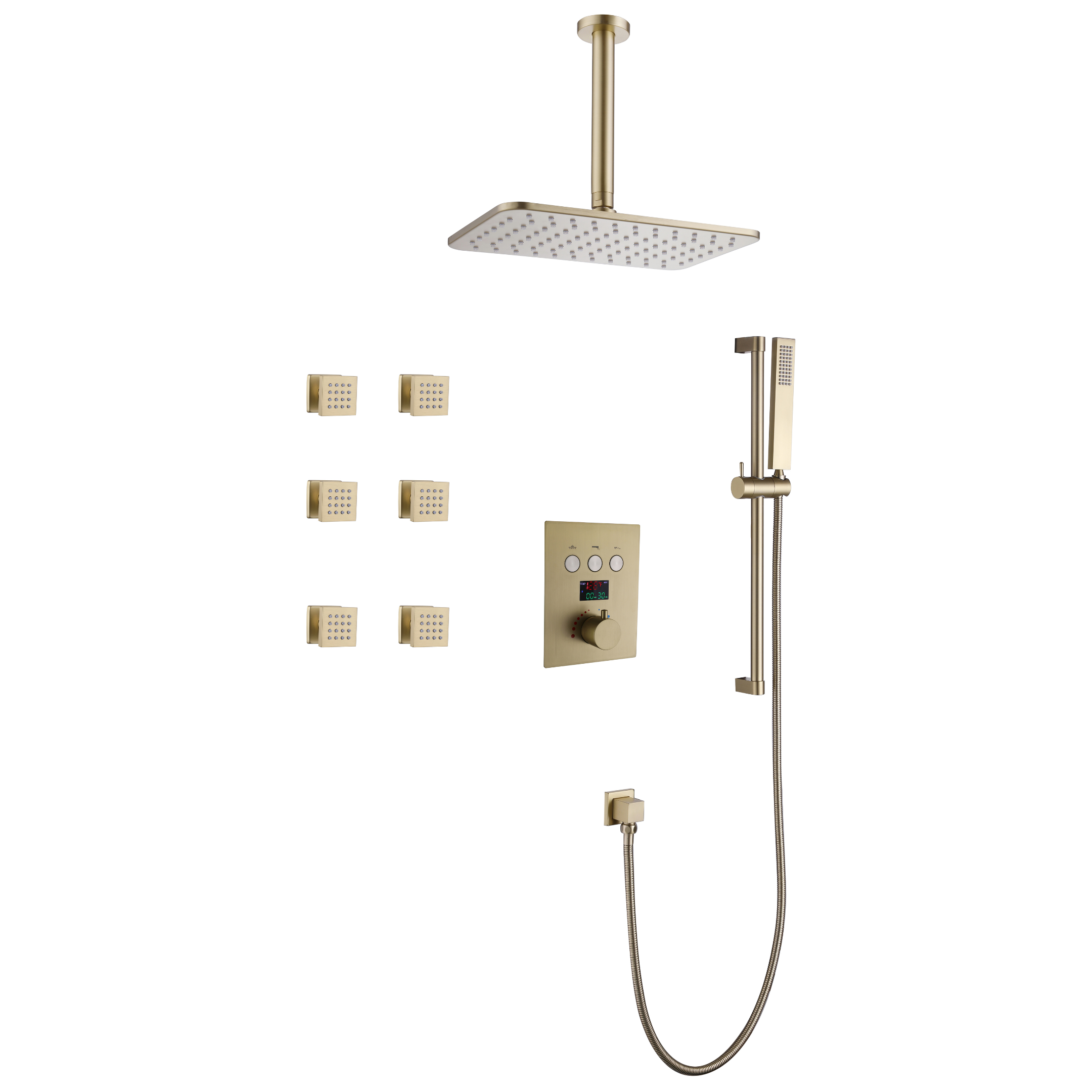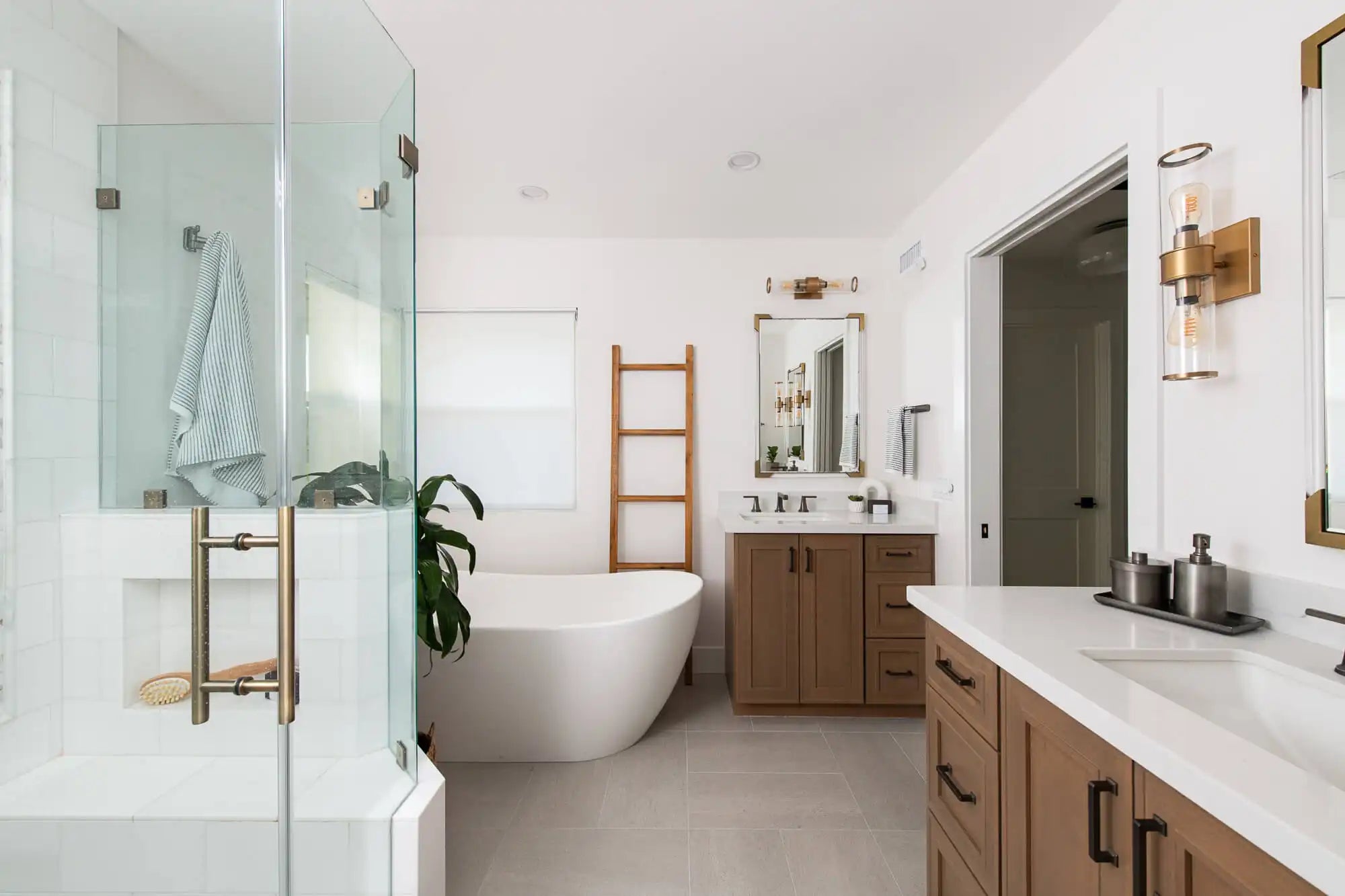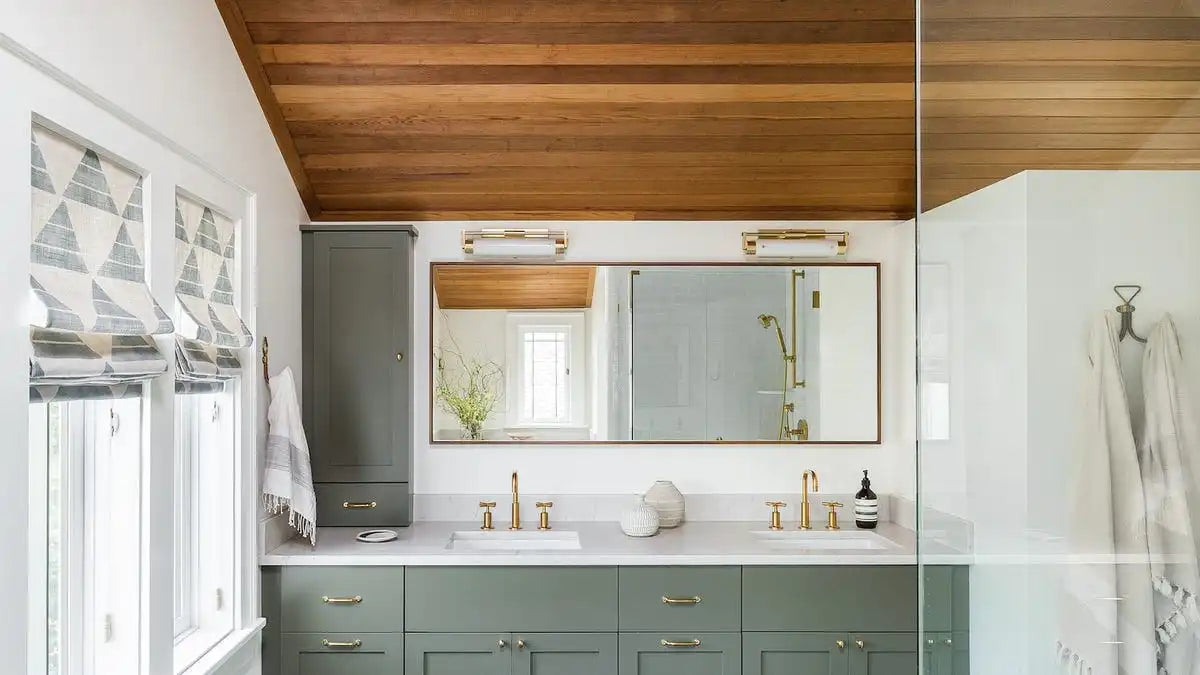Table of Contents
- Best Luxury Shower Systems in 2025: 4 Top Picks for Your Home
- How to Choose the Best Luxury Shower System
- Luxury vs. Standard Shower Systems: Is the Upgrade Worth It?
- Installation & Costs: What to Expect in the U.S.
- FAQ: Common Questions About Luxury Shower Systems in the U.S.
- Conclusion: Choosing the Right Luxury Shower System
-
Related Articles
When people look for the best luxury shower systems, they're usually not just shopping for a showerhead. They're trying to solve real frustrations: water pressure that drops mid-shower, temperature that refuses to stay steady, or a bathroom upgrade that feels "standard" instead of truly high–end.
A genuine luxury shower system isn't about appearances alone. It means reliable thermostatic or digital control, multiple outlets that work together smoothly, durable brass construction, and design that elevates the space. For some, it also means smart features—like voice commands, preset temperatures, or water–usage monitoring—that add convenience without sacrificing performance.
This guide focuses on what matters most if you're considering an upgrade in 2025. You'll learn how to choose a system that actually fits your home's water supply, what kind of installation work may be involved, and which features make the biggest difference in everyday use. Most importantly, we'll highlight the luxury shower systems available through Ace Decor that truly deliver the comfort, stability, and design you're looking for.
Best Luxury Shower Systems in 2025: 4 Top Picks for Your Home
1. Avelar Series
If you've ever been frustrated by showers that feel underwhelming or too basic, this system is designed to change that. It combines the wide coverage of a rainfall shower, the flexibility of a 360° adjustable handheld sprayer, and the soothing pressure of four body jets. The single-handle valve makes it straightforward to set temperature, flow, and outlet—no juggling multiple controls. Built with solid brass and a corrosion-resistant finish, it's made to last while adding a touch of timeless style. Available in brushed gold, matte black, and brushed nickel to fit different bathroom designs.

| Pros | Cons |
|---|---|
|
|
2. Briar Series
This setup is a good fit if you want flexibility without overcomplicating your bathroom. The design gives you two showerheads—one fixed overhead and one handheld—so you can choose between full-body coverage or targeted rinsing. Both showerheads offer multiple spray settings, letting you switch from a strong rinse to a gentler spray depending on the moment. The included tub spout adds extra convenience, whether you actually have a bathtub or simply need a quick way to fill a bucket or wash something down. The single-handle valve keeps temperature control straightforward, available in matte black, chrome, or brushed nickel finishes.

| Pros | Cons |
|---|---|
|
|
3. Cascade Series
For those who want more than a standard shower, this system offers a tailored experience. It combines a wide waterfall-style fixed head for full coverage, a sleek handheld sprayer for flexibility, and three adjustable body jets that can be angled to target tension points. Each outlet has its own control knob along with independent temperature adjustment, giving you complete control over how your shower feels every time. Available in white and brushed nickel finishes, it's designed for homeowners who see the bathroom as a place of relaxation and daily renewal.

| Pros | Cons |
|---|---|
|
|
4. Eclipse Series
If you’re looking for a shower that feels refreshing without being complicated, this system focuses on simplicity and comfort. The oversized rainfall head provides a wide, even spray that helps you unwind after a long day, while the sleek handheld sprayer adds flexibility for quick rinsing or targeted use. A diverter makes it easy to switch between the two, and the main control valve allows you to adjust both flow and temperature with precision. Available in brushed gold, chrome, brushed nickel, and matte black to suit different bathroom styles.

| Pros | Cons |
|---|---|
|
|
How to Choose the Best Luxury Shower System
A luxury shower can transform daily routines into a spa-like ritual—but only if it's chosen and planned correctly. Many homeowners find themselves disappointed because they didn't consider practical issues like water pressure, heater size, or building restrictions before buying. Below we'll walk through the real-world factors you should evaluate, so you avoid costly mistakes and end up with a shower system that fits both your lifestyle and your home.
1. Valve Systems: Digital Thermostatic vs. Mechanical Thermostatic vs. Pressure Balance
Why it matters: Your valve is the "brain" of the shower. It determines how water temperature is controlled and how outlets are managed.
- Digital Thermostatic Valves: Offer the most precision (exact degree settings, preset profiles for each family member, voice/app integration). But they require electricity (110V or 220V) and cost more to install.
- Mechanical Thermostatic Valves: Automatically hold water at a set temperature, even if someone flushes a toilet or runs a tap elsewhere. Great for families with kids or elderly members.
- Pressure-Balance Valves: The entry-level option. They keep pressure even but don't actively regulate temperature—meaning sudden hot/cold spikes can still happen.
🔒 User scenario:
If you have children or elderly parents at home, thermostatic valves are worth it for safety. If you're tech-savvy and want remote control, go digital.
2. Multi-Outlet Setups: Do You Really Need All at Once?
Luxury systems often include rainfall heads, handheld sprayers, body jets, or even waterfall outlets. But whether you can run them simultaneously depends on your valve and water supply.
- Standard Diverter Valves: Let you choose one outlet at a time.
- Advanced Systems: Allow 2–3 outlets at once, but only if your water supply supports the flow rate.
🔒 User scenario:
If you live in a high-rise apartment with already low water pressure (say, 20th+ floor), running three outlets at once may feel underwhelming. In such cases, a high-pressure dual system might give you a better “luxury” feel than a multi-jet system that trickles.
3. Water Flow and Heater Capacity: Matching GPM to Your Reality
Every outlet has a flow rating, usually in GPM (gallons per minute).
- A rainfall head: ~2.0 GPM
- Handheld sprayer: 1.5–2.0 GPM
- Each body jet: 1.0–1.5 GPM
Turn everything on, and your shower might demand 6–8 GPM.
🔒 User scenario:
- If you have a 40-gallon water heater, running 6 GPM means you'll run out of hot water in about 7 minutes. Not great if two family members shower back-to-back.
- If you live in a condo with a tankless heater, check whether it can handle the peak flow. Some tankless units cap at 4–5 GPM, which may not be enough for multiple outlets.
Quick check: Multiply the GPM of your outlets by 10. That's how many gallons you'll need for a 10-minute shower.
4. Installation: New Build vs. Renovation
Installation is one of the most underestimated factors when choosing a luxury shower system. The same product can be a smooth upgrade in a new build but a costly challenge in an older home.
New Construction:
The easiest path. When building or doing a full remodel, you can plan for ceiling-mounted rainfall heads, multiple body sprays, or digital thermostatic valves with power supply. Pipes, wiring, and wall space can all be designed from scratch.
Renovation:
Retrofitting a luxury shower often means opening tiled walls, rerouting plumbing, or even reinforcing ceilings for large rainfall heads. Digital systems may require 110V/220V electrical lines, which adds complexity.
🔒 User scenarios:
- If you live in a high-rise condo with concrete ceilings, a ceiling-mounted rainfall head may not be practical—consider a wall-mounted alternative.
- In older apartments with narrow pipe chases, adding multiple body jets may require significant wall work, raising both cost and construction time.
- Some homeowners discover too late that their property management requires permits for electrical or plumbing modifications—always confirm before committing.
5. Materials & Finishes: More Than Just Looks
The material and finish of your shower system determine not just how it looks on day one, but how it will hold up years later in a humid bathroom environment.
- Solid Brass Construction: Highly durable, resists corrosion, and less prone to cracking or leaking over time. A must-have for long-term reliability.
- PVD (Physical Vapor Deposition) Coating: A premium finish that resists scratches, tarnishing, and discoloration. Ideal if you want matte black, brushed gold, or other modern tones to remain flawless.
- Standard Electroplating: More affordable, but tends to wear faster, especially with harsh cleaning products.
🔒 User scenarios:
- Coastal homeowners benefit from brass + PVD finishes, which withstand salty, humid air better than cheaper coatings.
- If you’re upgrading a rental property, cost-effective electroplated fixtures might be sufficient, since tenants usually won’t notice subtle finish wear.
- For a “forever home” remodel, investing in brass with a PVD finish ensures the system looks as good in 10 years as it does today.
6. Compliance & Water-Saving Regulations
Luxury doesn't mean ignoring water restrictions. In fact, regional regulations can directly limit what kind of system you can install.
- Regional Flow Limits: For example, California caps showerheads at 1.8 GPM, while New York limits most to 2.0 GPM. A multi-outlet system in these states may not legally run all heads at once.
- Water-Saving Technology: High-end systems often include air-infusion or pressure-boosting designs that make a lower GPM flow feel just as strong as traditional showers.
- Resale and Inspections: Non-compliant fixtures may pass unnoticed now but can cause issues during home inspections or resale.
🔒 User scenarios:
- In California, buying a 3-outlet system that promises “all-on at once” luxury will be disappointing—you’ll be forced to limit flow.
- In Florida or Texas, where rules are more lenient, you have more freedom to run multiple outlets simultaneously without restriction.
- If you care about sustainability, WaterSense-certified systems reduce consumption while keeping the luxury feel.
Luxury vs. Standard Shower Systems: Is the Upgrade Worth It?
If you're still unsure whether to stick with a basic showerhead or invest in a luxury system, it helps to think about your daily routine and living situation, not just the features listed on the box.
When a Standard Shower System is Enough
- You live in a rental or starter apartment: A simple fixed head or handheld is easier to install (sometimes even tool-free) and easy to take with you when you move out.
- You don't have strong water pressure: On the 22nd floor of a high-rise? A luxury system with multiple jets might only trickle, leaving you frustrated. In this case, a well-designed high-pressure handheld can feel better than a fancy but underpowered rainfall.
- You just need efficiency: If mornings are a rush and the shower is purely functional, a standard system keeps things simple and reliable.
When a Luxury Shower System Makes Sense
- You treat your shower as your "reset time": Long day at work? A wide rainfall head plus body jets can actually feel like a spa—muscles relax, stress washes away.
- You have a family with different needs: One person loves a powerful massage spray, another prefers a gentle rain. A luxury system with multi-mode sprays and thermostatic controls keeps everyone happy without constant readjustment.
- You're remodeling your forever home: Just like investing in a better kitchen, upgrading your bathroom with a luxury shower system adds daily comfort now and resale value later.
🔰 Ask yourself:
Do I see the shower as just "getting clean,” or is it one of the few quiet moments I get in the day?
- If it's just about speed and convenience → stick with a good standard system.
- If it's about comfort, stress relief, and long-term value → a luxury system will pay off every single day.

Installation & Costs: What to Expect in the U.S.
When people think about upgrading to a luxury shower system, the first concern is usually the fixture price. But in reality, the system itself is only half the story—the other half is installation. Costs, timelines, and complexity can vary widely depending on your home's age, location, and bathroom setup.
For a simple swap, like replacing a standard showerhead with a dual kit, you might spend just a few hundred dollars and an afternoon of DIY. But once you step into thermostatic valves, rainfall heads, or multi-outlet designs, professional help is almost always required. In cities where labor is expensive—New York, San Francisco, Los Angeles—the plumber's bill can easily exceed the cost of the system itself. A mid-range $2,000 system may total closer to $5,000 once demolition, plumbing, and tile repair are included.
Renovation type matters too. In a newly built home, everything can be planned from scratch: ceiling drops for rainfall, hidden pipes for body jets, even wiring for digital thermostatic controls. But in older houses, expect to open walls or ceilings, re-route pipes, and possibly bring in an electrician. A homeowner in a 1970s suburban house might be surprised to learn their panel can't handle an additional 220V line without an upgrade.
And then there's the question of everyday practicality. If you only have one bathroom, a full remodel can mean a week or more without a working shower. Families often arrange temporary solutions—using the gym, staying with relatives—just to get through the disruption.
A few common hidden costs include:
- Hot water capacity: Multi-outlet systems may drain a 40-gallon tank in under 10 minutes. Without upgrading, the second person in line may be left with cold water.
- Building codes: In states like California, inspectors enforce 1.8 GPM flow limits. If your chosen system isn't compliant, you may be asked to change it before approval.
- Tile and waterproofing: Cutting into existing walls almost always means extra cost for re-tiling and resealing.
The takeaway? The installation cost of a luxury shower system in the U.S. is often at least double the price of the fixtures themselves. And the smoother your planning—checking water pressure, heater size, electrical capacity, and local codes ahead of time—the fewer surprises you'll face once construction begins.
FAQ: Common Questions About Luxury Shower Systems in the U.S.
1. Do I need to worry about water pressure if I live in a high-rise apartment?
Yes. Many high-rise buildings, especially on higher floors, naturally have lower water pressure. Luxury systems with multiple outlets (rainfall, handheld, body jets) usually require stronger flow to feel effective. If your pressure is already weak, look for systems with pressure-boosting technology or choose a dual setup (rainfall + handheld) instead of a full spa system.
2. How much hot water does a luxury shower system use?
It depends on how many outlets you run at the same time. A rainfall head may use around 2.0 GPM, while body jets add another 1.0–1.5 GPM each. If you turn everything on, your shower could use 6–8 GPM. For a 10-minute shower, that's 60–80 gallons. A standard 40-gallon water heater may not keep up, so families often upgrade to larger or tankless systems to avoid running out of hot water.
3. Are luxury shower systems allowed under U.S. water regulations?
Yes, but each state has its own rules. For example, California restricts showerheads to 1.8 GPM, while New York is 2.0 GPM. That means multi-outlet systems often can't legally run everything at once. To stay compliant, many systems now use air-infusion or WaterSense-certified heads, which maintain pressure while reducing water usage. Always check your local building codes before buying.
4. Do digital thermostatic showers require electricity?
Most do. Digital valves often need a 110V or 220V connection to power the electronics. If you're building new, this is easy to plan. In a remodel, you'll need to confirm whether adding an electrical line is practical. If not, a mechanical thermostatic valve can still give you stable, safe water temperature without electronics.
5. Can I install a luxury shower system myself, or do I need a professional?
It depends on the system. Simple dual-shower kits (fixed + handheld) are often DIY-friendly. But once you get into thermostatic valves, multiple outlets, or digital controls, professional installation is strongly recommended. Not only will it save time and prevent leaks, but it also ensures compliance with local plumbing codes.
Conclusion: Choosing the Right Luxury Shower System
Upgrading to a luxury shower system is not about chasing features for the sake of it—it's about finding a setup that matches your home and the way you live. For some, that means precise digital controls and multi-outlet spa experiences. For others, it's simply having consistent pressure and a wide rainfall spray that makes every shower feel relaxing.
A few key takeaways:
- Check your home's limits first—water pressure, heater capacity, and local regulations matter just as much as design.
- Decide on your priorities—do you value advanced technology, a spa-like experience, or long-term durability?
- Match the system to your lifestyle—a high-rise apartment and a large single-family home will need very different setups.
The best luxury shower system is the one that fits seamlessly into your daily routine while adding comfort and reliability you can count on. Once you know what matters most to you, choosing the right system becomes much simpler—and every shower can feel like the upgrade you were hoping for.

Related Articles
If you'd like to dive deeper into design ideas and practical tips, check out these articles next.
- "What is the Standard Height for a Tub Shower Valve"
- "Spa vs Hot Tub: The Ultimate, Real-World Comparison Guide"
- "Bath Water Temperature Guide: Safe, Comfortable & Ideal Settings for Every Age Group"
- "Rain Glass Shower Door – Add Privacy and Style to Your Bathroom"
- "What is a Shower Steamer: The 5 Minute Spa Secret Weapon You Didn't Know About"
- "Is it Better to Take a Hot or Cold Shower After a Workout?"
